Sites: news | india | latam | brasil | indonesia
Feeds: news | india | latam | brasil | indonesia
topic: Climate Modeling
Social media activity version | Lean version
Panama delays promised relocation of sinking island community
- The government of Panama continues to delay the process of relocating almost 1,300 Indigenous Guna inhabitants from an island experiencing rising sea levels due to climate change.
- The lack of space on the tiny Caribbean island of Gardi Sugdub means there’s no room to relocate, and a new site on the mainland for the community has been in the works since 2019.
- But plans for the relocation have been repeatedly delayed due to administrative issues, previous COVID-19 restrictions and poor budgeting, leaving residents skeptical that government promises will be upheld.
- Members of this fishing community have also expressed concern about the relocation site, which is a 30-minute walk from the coast, and about the design of the new homes, for which the government didn’t seek Guna input.
Critics fear catastrophic energy crisis as AI is outsourced to Latin America
- AI use is surging astronomically around the globe, requiring vastly more energy to make AI-friendly semiconductor chips and causing a gigantic explosion in data center construction. So large and rapid is this expansion that Sam Altman, the boss of OpenAI, has warned that AI is driving humanity toward a “catastrophic energy crisis.”
- Altman’s solution is an audacious plan to spend up to $7 trillion to produce energy from nuclear fusion. But even if this investment, the biggest in all of history, occurred, its impact wouldn’t be felt until mid-century, and do little to end the energy and water crises triggered by AI manufacture and use, while having huge mining and toxic waste impacts.
- Data centers are mushrooming worldwide to meet AI demand, but particularly in Latin America, seen as strategically located by Big Tech. One of the largest data center hubs is in Querétaro, a Mexican state with high risk of intensifying climate change-induced drought. Farmers are already protesting their risk of losing water access.
- As Latin American protests rise over the environmental and social harm done by AI, activists and academics are calling for a halt to government rubber-stamping of approvals for new data centers, for a full assessment of AI life-cycle impacts, and for new regulations to curb the growing social harm caused by AI.
Global conference to accelerate nature-based solutions: Q&A with Self Help Africa’s Patricia Wall
- This week, more than 150 conservation and community organizations, experts and policymakers are gathering in Zambia for the Accelerating Nature-based Solutions conference.
- Discussions will dive deep into critical issues and concerns regarding nature-based solutions and the roles of agroforestry, farmer-managed natural regeneration and wildlife conservation in NbS.
- The conference will also address the issue of carbon offsetting and greenhouse gas emissions, and the need to safeguard the rights of local communities or Indigenous communities when implementing nature-based solutions.
As lightning strike fatalities increase, Bangladesh still has no reliable preventive measures
- Between 2011 and 2020, lightning strikes claimed the lives of 2,164 people, or nearly four people every week, in Bangladesh, according to the country’s disaster management department. However, a Bangladeshi NGO reports at least a thousand more lightning related fatalities between 2010 and 2021.
- Researchers linked the increased frequency of lightning with climate change; as for the increased death toll, they blamed the government’s inefficient protection measures, including the lack of tall trees.
- To reduce the number of fatalities, the government has started working on long-term solutions, such as installing lightning arresters and growing palm trees. Nevertheless, a significant sum of money is being squandered and nothing functions as expected, say experts.
Detailed NASA analysis finds Earth and Amazon in deep climate trouble
- A NASA study analyzed the future action of six climate variables in all the world’s regions — air temperature, precipitation, relative humidity, short- and long wave solar radiation and wind speed — if Earth’s average temperature reaches 2° Celsius (3.6° Fahrenheit) above preindustrial levels, which could occur by 2040 if emissions keep rising at current rates.
- The authors used advanced statistical techniques to downscale climate models at a resolution eight times greater than most previous models. This allows for identification of climate variations on a daily basis across the world, something essential since climate impacts unfold gradually, rather than as upheavals.
- The study found that the Amazon will be the area with the greatest reduction in relative humidity. An analysis by the Brazilian space agency INPE showed that some parts of this rainforest biome have already reached maximum temperatures of more than 3°C (5.4°F) over 1960 levels.
- Regardless of warnings from science and Indigenous peoples of the existential threat posed by climate change, the world’s largest fossil fuel producers, largely with government consent, plan to further expand fossil fuel exploration, says a U.N. report. That’s despite a COP28 climate summit deal “transitioning away from fossil fuels.”
Can impermanent carbon credits really offset forever emissions?
- A team of researchers has put forth a method that they say makes it possible to compare credits for carbon from forests projects against more permanent storage solutions.
- The carbon emissions that these credits are meant to offset can last for hundreds, if not thousands, of years in the atmosphere. Forests, by comparison, are subject to fires, disease and deforestation, meaning that their climate benefits can be more temporary than longer-term solutions, such as direct air carbon capture.
- By “discounting” the credits from forest carbon projects based on conservative upfront estimates of how long a forest will safeguard or sequester carbon, the authors say that “like-for-like” comparisons would be possible.
- The team published their work Oct. 30 in the journal Nature Climate Change.
Is ocean iron fertilization back from the dead as a CO₂ removal tool?
- After a hiatus of more than 10 years, a new round of research into ocean iron fertilization is set to begin, with scientists saying the controversial geoengineering approach has the potential to remove “gigatons per year” of carbon dioxide from Earth’s atmosphere.
- The idea behind ocean iron fertilization is that dumping iron into parts of the ocean where it’s scarce could spark massive blooms of phytoplankton, which, when they die, can sink to the bottom of the sea, carrying the CO₂ absorbed during photosynthesis to be sequestered in the seabed for decades to millennia.
- So far, proof that this could work as a climate-change solution has remained elusive, while questions abound over its potential ecological impacts.
- Scientists with the Woods Hole Oceanographic Institution in Massachusetts, U.S., recently received $2 million in funding from the U.S. government that will enable computer modeling research that could pave the way for eventual in-ocean testing, effectively reviving research into ocean iron fertilization.
Forests hold massive carbon storage potential — if we cut emissions
- A new study finds forests could potentially store 226 billion metric tons of carbon if protected and restored, or about one-third of excess emissions since industrialization.
- Nearly two-thirds of this potential lies in conserving and letting existing forests mature.
- The authors say that restoring deforested areas through community-driven approaches such as agroforestry and payments for ecosystem services is essential.
- Planting trees can’t replace cutting fossil fuel emissions, as climate change threatens forests’ carbon uptake.
Betting on biodiversity: Q&A with Superorganism’s Kevin Webb & Tom Quigley
- Superorganism is a newly launched venture capital firm, touted to be the first that’s dedicated to addressing the biodiversity crisis.
- The firm aims to support startups that are developing and deploying technology to prevent biodiversity loss and protect nature.
- The firm’s early portfolio includes companies that are working to tackle extinction drivers and finding solutions that lay at the intersection of biodiversity conservation and climate change mitigation.
The Cloud vs. drought: Water hog data centers threaten Latin America, critics say
- Droughts in Uruguay and Chile have led residents to question the wisdom of their governments allowing transnational internet technology companies to build water-hungry mega-data centers there.
- As servers process data, they need lot of water to keep them cool. But if demand grows as expected, the world will need 10-20 times more data centers by 2035, and they’ll be using far more water. Many will likely be built in economically and water-challenged nations already facing climate change-intensified droughts.
- Latin American communities fear that this “data colonialism” will consume water they desperately need for drinking and agriculture, and are critical of their governments for giving priority treatment to transnational tech giants like Google and Microsoft, while putting people’s access to a basic human necessity at risk.
- Surging digital data use by 2030 may cause each of us in the developed world to have a “digital doppelganger,” with our internet use consuming as much water as our physical bodies. But much of the stored data is “junk.” Critics urge that nations insist on tougher regulations for transnational companies, easing the crisis.
Taking the global pulse of biodiversity monitoring: Q&A with Andrew Gonzalez
- A group of scientists have put forward a proposal to set up a global network that centralizes biodiversity monitoring and facilitates seamless sharing of data.
- The group wants its proposed Global Biodiversity Observing System (GBiOS) to function similarly to the network of local weather monitoring stations across the world, whose data are used to analyze and monitor climate change.
- While the technology being used to monitor biodiversity has become more sophisticated over the years, there still exists a void in getting different communities to work together to address the broader challenges in dealing with the biodiversity crisis.
- “We would not only federate people who are working together more effectively, but also fill many of the gaps in the data that currently exist in the biodiversity field,” Andrew Gonzalez, who is leading the proposal for GBiOS, told Mongabay.
Study: Tricky balancing act between EV scale-up and mining battery metals
- A recent study finds rapidly switching to electric vehicles could significantly cut emissions but also increase demand for critical battery metals like lithium and nickel.
- Mining metals like lithium has major environmental impacts including deforestation, high water use, and toxic waste.
- Electrifying heavy-duty vehicles requires substantially more critical metals than other EVs and could account for 62% of critical metal demand in coming decades despite making up just 4-11% of vehicles.
- The researchers recommend policies to support recycling, circular economies, alternative battery chemistries, and coordinated action to balance environmental and material needs.
DRC food sovereignty summit yields support for agroecology, local land rights
- The Alliance for Food Sovereignty in Africa (ASFA) recently held a meeting in Kinshasa to argue for the reorienting of food production around agroecology in the Congo Basin.
- Civil society groups, donors, government representatives and small-scale farmers gathered to exchange views on challenges and solutions to food security.
- Across Africa, agricultural policy is geared toward greater reliance on large-scale farms and mechanization, commercial seeds, pesticides and synthetic fertilizer.
- A declaration issued at the close of the summit instead called for investment in agroecological methods, as well as recognition of and protection for Indigenous and local peoples’ land rights.
Agroecology alliance calls for more food at less cost to nature in Congo Basin
- The Alliance for Food Sovereignty in Africa (AFSA) will make the case for reorienting food production systems and agricultural policy at a meeting in Kinshasa from Aug. 29-31.
- Food security across the Congo Basin is threatened by impoverished soils, climate change, and displacement due to armed conflict, forum attendees say.
- Governments in the region back improved seeds and synthetic fertilizer for small-scale farmers as well as large-scale agriculture projects to boost yields and revenue.
- AFSA argues these strategies cause more harm than good to both farmers and forests, and calls for a turn to agroecological methods instead.
From debt to diversity: A journey of rewilding, carbon capture and hope
- Rewilding has transformed an English estate from a debt-ridden, conventional farm to a profitable haven of biodiversity.
- A study also shows that the rewilded farmland at Knepp absorbs more carbon dioxide than conventional farms, providing hope for climate change mitigation and soil restoration.
- The U.K. is transitioning to a new environmental land management framework offering incentives for practices that restore soil health and biodiversity, but private investment is still needed to bridge the funding gap.
- Nature restoration investment mechanisms to attract private investment are being developed using Knepp data and government funding.
Massive carbon offset deal with Dubai-based firm draws fire in Liberia
- According to a draft contract seen by Mongabay, Liberia may sign away the rights to nearly 10% of its total land mass to a United Arab Emirates-based firm for carbon offset development.
- The firm is owned by Ahmed Dalmook Al Maktoum, the youngest member of Dubai’s royal family and an investor in energy projects across Africa and the Middle East.
- Environmental groups in Liberia say the deal could violate multiple laws, including those meant to protect community land rights.
- The deal comes as the UAE prepares to host the COP28 climate conference, where rulemaking around carbon markets will be a hot agenda item.
For Central America, climate bill could top hundreds of billions annually
- Climate change impacts on Central America’s forests could cost the region between $51 billion and $314 billion per year by 2100, according to a new study.
- For some of the countries in region, the loss of ecosystem services provided by forests could lead to losses equivalent to more than three times their GDP.
- This is the first time ecological and economic measurements have been assessed together for climate change impacts in Central America and could help to inform conservation activities like defining protected areas, establishing biological corridors and restoring degraded landscapes.
- While the impacts of climate change are being felt by communities in the region, breakthroughs in computing power as well as collaborations between European universities and Central American research institutions and companies is promoting increased innovation in ecosystem restoration.
Soil carbon in urban parks important in fighting climate change, study shows
- A recent study shows that urban parks and green spaces throughout the world have a similar amount of carbon stored in their soils as in natural regions close to cities, which means urban green spaces can be important to global carbon sequestration and mitigating the potential effects of climate change.
- Soil microbes in urban green spaces play a vital role in carbon storage, but that carbon is also vulnerable to loss through microbial respiration in an increasingly warmer world; researchers emphasize the need for greater understanding of the soil microbiome in urban policies and planning.
- For context, Suriname has 93% forest cover nationwide and is often referred to as the world’s “greenest” country — but the capital city, Paramaribo, lacks a structural approach to urban greenery.
- Researchers conducted a project to promote a greener and more livable Paramaribo, with the aim of mitigating the effects of climate change and raising awareness among citizens.
Protected areas store a year’s worth of CO₂ emissions, study reveals
- Researchers analyzed never-before-used satellite data to calculate how much carbon is stored in protected areas worldwide.
- The Amazon Rainforest’s protected areas accounted for the highest rate of carbon stock, according to the unprecedented study.
- The results can help policymakers and conservationists assess areas for protection to fight climate change — and not just forests.
Sweltering heat wave hits Sri Lanka; climate change will likely bring more
- As a heat wave sweeps across Asia, Sri Lanka continues to issue heat warnings to the public as the country experiences much higher than normal temperatures coupled with high humidity and threatening health impacts.
- Research has already shown that annually averaged mean minimum temperatures are increasing in most parts of Sri Lanka and climate projections indicate that Sri Lanka should brace for more intense and regular heat waves by 2030.
- Main cities record higher temperatures acting as urban heat islands and experts suggest that town planning should now include strategies to reduce heat as an adaptation for impending future heat stresses.
Rewilding animals could be key for climate: Report
- A new report published in Nature Climate Change suggests that trophic rewilding, or restoring and protecting the functional roles of animals in ecosystems, is an overlooked climate solution.
- Reintroducing just nine species or groups of species (including African forest elephants, American bison, fish, gray wolves, musk oxen, sea otters, sharks, whales and wildebeest) would help limit global warming to less than the 1.5°C (2.7°F) threshold set by the Paris Agreement, according to the report.
- Animals play a significant role in how much carbon plants, soil and sediments can capture, as they redistribute seeds and nutrients and disturb soil through digging, trampling, and nest-building.
- The report emphasizes the need for a change in mindset within science and policy to take advantage of the vast potential of wildlife, while working closely with local communities to address social issues that can affect conservation efforts.
Newly published carbon market standards aim to increase integrity, confidence
- The Integrity Council for the Voluntary Carbon Market (ICVCM), an independent governance body, released a set of core carbon principles (CCPs) intended to provide a “threshold standard” for quality in the global carbon market.
- To earn the CCP label, projects must address governance issues such as verification and transparency, ensure that the emissions reductions and removals of carbon actually happen at claimed levels above what would have been accomplished under the business-as-usual scenario, and adhere to strict guidelines intended to ensure that projects don’t harm communities or the environment, according to the ICVCM’s statement.
- The global voluntary carbon market sits at a pivotal crossroads, as several investigations have raised concerns about how much the projects supported by the purchase of carbon credits actually protect or restore forests as a climate change-mitigation strategy.
Deforestation drives fire risk in Borneo amid a warming climate, study finds
- Annual peatland fires in Indonesia affect ecology, air quality, nutrient distribution of the soil, and human health.
- A modeling study finds that under current climate change projections and with rapid deforestation in Borneo, fire risk increases by the end of the century.
- The findings show that deforestation is a significant factor in fire risk.
- While local governments can’t control global climate change, they work to stem forest lost and invest in reforestation of tropical forests and revitalization of peatlands to mitigate fire risks in the future, researchers say.
Sea level rise looms, even for the best-prepared country on Earth
- The Netherlands, a low-lying European country with more than a quarter of its land below sea level, has been going to great lengths to protect itself from the impacts of climate change, including sea level rise and extreme weather events like heavy rain.
- But even for the Netherlands, a country with the wealth and experience to address these issues, the future remains uncertain, mainly because a range of possible scenarios could play out after 2050.
- According to the Intergovernmental Panel on Climate Change, a low-emissions scenario for the greenhouse gases that amplify global warming could elevate sea levels about half a meter (1.6 feet) above present levels by 2100; a higher-emissions scenario could lead to a 2-m (6.6-ft) rise by 2100 and a 5-m (16.4-ft) rise by 2150.
- Experts say that most other countries need to take the threat of sea level rise more seriously, and that engineering challenges, a lack of awareness and education, sociocultural concerns, and financial constraints are hampering their preparation.
Scientists map nearly 10 billion trees, stored carbon, in Africa’s drylands
- A recent study has mapped the locations of 9.9 billion trees across Africa’s drylands, a region below the Sahara Desert and north of the equator.
- The research, which combined satellite mapping, machine learning and field measurements, led to an estimate of 840 million metric tons of carbon contained in the trees.
- This figure is much lower than the amount of carbon held in Africa’s tropical rainforests.
- However, these trees provide critical biodiversity habitat and help boost agricultural productivity, and this method provides a tool to track both degradation and tree-planting efforts in the region.
Amazon deforestation linked to reduced Tibetan snows, Antarctic ice loss: Study
- Earth’s climate is controlled by a complex network of interactions between the atmosphere, oceans, lands, ice and biosphere. Many elements in this system are now being pushed toward tipping points, beyond which changes become self-sustaining, with the whole Earth system potentially shifting to a new steady state.
- A recent study analyzed 40 years of air temperature measurements at more than 65,000 locations to investigate how changes in one region rippled through the climate system to affect temperatures in other parts of the globe. Computer models then simulated how these links may be affected by future climate change.
- Researchers identified a strong correlation between high temperatures in the Amazon Rainforest and on the Tibetan Plateau. They found a similar relationship between temperatures in the Amazon and the West Antarctic Ice Sheet.
- Deforestation in the Amazon likely influences the Tibetan Plateau via a convoluted 20,000-kilometer (12,400-mile) pathway driven by atmospheric and oceanic circulation patterns. The study suggests that a healthy, functioning Amazon is crucial not only for the regional climate in Brazil, but for the whole Earth system.
Carbon uptake in tropical forests withers in drier future: Study
- A new study incorporating satellite data on organic material, or biomass, in tropical forests with experimental data about the effects of temperature and precipitation suggests that forests may lose substantial amounts of carbon by the end of the 21st century.
- Even with low continued carbon emissions, tropical forests, especially those in the southern Amazon, could lose between 6.8 and 12% of their aboveground carbon. With higher emissions, they could lose 13.3 to 20.1% of their carbon stores.
- The results highlight the need to reduce global temperatures rapidly to maintain the healthy forests best able to sequester carbon from the atmosphere.
- The team reported their findings Feb. 6 in the journal Nature Climate Change.
Japan’s example: Can forest planting reduce climate disaster risk?
- In disaster-prone Japan, torrential rains exacerbated by the climate crisis have caused serious flooding and landslides in recent years, including in the country’s many forests.
- While acknowledging the limits of forests’ ability to prevent landslides occurring in the bedrock, Japan’s Forestry Agency is implementing both forest improvement activities and erosion control facility construction to help mitigate future landslide disasters.
- Japan’s monoculture plantation forests, which represent 40% of the nation’s total forest cover, are seen by some experts and civil society members as insufficient to prevent mountain disasters. However, other experts say that a much wider range of geological and environmental factors, not just tree species, determine a forest’s disaster mitigation ability.
- Along Japan’s Pacific coast, others are using trees planted on raised embankments as an as-yet-untested countermeasure against future tsunamis, a type of disaster experts say can also be exacerbated by sea level rise due to climate change.
With climate reparations finally on the table at COP27, what now?
- The question of who should pay damages for climate change-induced losses is finally on the table at the COP27 climate summit in Sharm el-Sheikh, Egypt.
- While mitigation and adaptation goals aim to curb carbon emissions and prepare for future impacts, loss and damage is concerned with harm already wrought by climatic disruptions or locked in by current emission levels — and with who should foot the bill.
- Emerging research on climate-related damages shows that the U.S. could face the biggest claims for reparations, even though drawing direct causal links between carbon emissions arising in one country and damaging climatic events in another country is complicated.
- “Is there a scientific basis for loss and damage and climate liability? The answer is yes,” says Justin Mankin, a climate scientist at Dartmouth College in the U.S. and co-author of a recent study on calculating climate damages.
Agroecology can feed Africa and tackle climate change — with enough funding
- Advocates say agroecological systems are the way to meet the climate crisis in its fullness — from limiting emissions to coping with climatic shocks — provided it gets the support of national governments and international donors.
- They are pushing for agroecology to be considered a climate solution by leaders at the COP27 climate summit in Egypt later this month.
- The agroecology movement is forged around opposition to the mindless transplantation of large-scale industrial agriculture to African countries, which is also one of the major sources of greenhouse gas emissions in more industrialized nations like the U.S.
- But its direct impacts on carbon budgets and effectiveness as an adaptation tool are understudied. Proponents like Bridget Mugambe say this hurdle could be overcome with adequate funding.
Arctic sea ice loss to increase strong El Niño events linked to extreme weather: Study
- The frequency of strong El Niño events could increase by 35% by the end of the century as Arctic sea ice begins to melt out completely in the summer, according to a recent modeling study. El Niños — buildups of especially warm water in the eastern Pacific off of Peru — often trigger ‘devastating’ droughts, floods and cyclones around the globe.
- The findings provide more evidence that Arctic warming is affecting weather in other parts of the world — not only in the mid-latitudes, but as far away as the tropics.
- Other recent studies have found that sea ice loss is causing rapid acidification of the Arctic Ocean and more extreme precipitation and flooding in Svalbard, a Norwegian archipelago located between mainland Norway and the North Pole.
Agulhas Current enigma: An oceanic gap in our climate understanding
- Comprehending the workings of western boundary ocean currents, like those of the Agulhas Current off the South African coast, may hold a key to Earth’s climate system. But understanding this particular current is hampered by a major lack of in-situ data. This gap leaves us in the dark about local, regional and global climate impacts.
- The Agulhas Current, located in the Indian Ocean, is one of the most energetic ocean current systems in the world. Changes to it can impact local weather in South Africa and elsewhere in the Southern Hemisphere, and perhaps influence large-scale climatic changes in the Northern Hemisphere and globally as well.
- However, it is not clear how and what these impacts may be, or when they may occur. With climate change escalating rapidly due to unabated human carbon emissions, it is now more important than ever that we understand the impacts of Southern Hemisphere ocean currents, and integrate their actions into climate models.
- But attempts at long-term monitoring of the Agulhas Current System have not been fully successful. Accomplishments and failures to date have underscored significant local research capacity challenges, and differences in the approach to, and financing of, ocean science in the Global North as compared to the Global South.
For lightning-prone communities in Bangladesh, new warning system may not be enough
- An average of four people a week are killed by lightning in Bangladesh, and the problem is expected to get worse as climate change increases the frequency of lightning strikes.
- Most of the victims tend to be farmers and fishers, who, like members of other poor communities around the world, are bearing the brunt of climate change impacts.
- The Bangladesh Meteorological Department has rolled out an early-warning system, based on modeling developed in collaboration with NASA, that it says will provide up to 54 hours’ warning of potential lightning strikes.
- But experts say the communities most in need of these alerts are those who don’t have access to the technology, and have called for other measures, such as building lightning arresters in open fields and wetlands, to protect vulnerable communities.
Are Bangladesh’s development measures leading to climate change readiness or maladaptation? (commentary)
- Bangladesh is trying to mainstream climate change adaptation into development measures to address climate change vulnerability and challenges.
- However, the socio-economic context and environmental consequences must be considered while implementing development programs.
- Failure to address local context might result in maladaptive trajectories, but Locally Led Adaptation (LLA) and Nature-based Solutions (NbS) are potential options for effective adaptation to climate change.
- This article is a commentary. The views expressed are those of the authors, not necessarily of Mongabay.
Elevated homesteads give hope to flood-hit communities in Bangladesh
- Increasingly severe flooding in Bangladesh threatens the homes and livelihoods of some 10 million people who live on river islands known as chars.
- The rate of erosion of these chars has increased in recent years amid an intensified monsoon season that swells the volume of the Ganges, Brahmaputra and Meghna rivers where the low-lying chars are located.
- As an adaptation measure the government and NGOs are supporting char communities to raise the height of their homesteads to protect themselves during the monsoon.
In Congo, a carbon sink like no other risks being carved up for oil
- New research has revealed that the peatlands of the Congo Basin are 15% larger than originally thought.
- This area of swampy forest holds an estimated 29 billion metric tons of carbon, which is the amount emitted globally through the burning of fossil fuels in three years.
- Beginning July 28, the government of the Democratic Republic of Congo, where two-thirds of these peatlands lie, will auction off the rights to explore for oil in 27 blocks across the country.
- Scientists and conservationists have criticized the move, which the government says is necessary to fund its operations. Opponents say the blocks overlap with parts of the peatlands, mature rainforest, protected areas, and a UNESCO World Heritage site.
‘The volume of water is beyond control’: Q&A with flood expert M. Monirul Qader Mirza
- An early start to the monsoon and unusually heavy rains have caused massive flooding in northeastern Bangladesh, leaving millions of people stranded in floodwaters.
- The Meghna River Basin is accustomed to these flash floods, but the scale of the disaster this year has been compounded by human encroachment and development in the watershed region, said M. Monirul Qader Mirza, a water management expert.
- In an interview with Mongabay, Mirza emphasized the need for infrastructure planning to consider river and rainfall dynamics to mitigate flood risk, and to have an early-warning system in place to minimize damage.
- Mirza also said that identifying the role of climate change in the problem is complex and requires extensive studies and modeling, but added it’s indisputable that rainfall patterns have become increasingly erratic.
Geoengineering Earth’s climate future: Straight talk with Wake Smith
- A new book, “Pandora’s Toolbox: The Hopes and Hazards of Climate Intervention,” explores a number of ideas for pulling carbon out of the atmosphere or artificially cooling the planet, known collectively as geoengineering.
- The book argues that such dire actions may need to be taken by future generations to combat climate change, and if so, those generations deserve to inherit research done now to understand the potential impacts and feasibility of geoengineering.
- One tool whose implementation is likely inevitable, according to the book, is pulling carbon from smokestacks and the air and then sequestering it deep in the Earth, a technology currently happening at a very small scale. Another approach, far more controversial, would be to inject aerosols into the stratosphere to cool the Earth.
- None of these methods precludes the need to decarbonize now and fast. But given the dangerous trajectory of climate change, author Wake Smith argues that suffering future generations may decide to pull the geoengineering trigger.
Robot revolution: A new real-time accounting system for ocean carbon
- Oceans are key to understanding climate change, seeing as they take up and store 25% of the carbon that human activities add to Earth’s atmosphere. But there are big gaps in our knowledge regarding ocean carbon storage and release, and how it is evolving as climate change unfolds, a problem scientists are now addressing.
- An international deployment of thousands of robotic floats, fitted with sophisticated biogeochemical sensors, is underway and already providing real-time data that scientists can integrate into ocean carbon budgets and climate models. Many more floats are coming, with the capacity to operate in remote regions.
- One such place is the Southern Ocean around Antarctica, which accounts for almost half of the worldwide oceanic carbon sink. Windier conditions there, caused by climate change, are churning up more carbon-rich waters from the depths, releasing stored carbon and introducing unforeseen variability into ocean carbon emission estimates.
- Robots are starting to monitor these emissions in real time. More accurate ocean carbon budgets will improve accounting of land-based carbon dioxide emissions, help create more accurate assessments of how well global carbon agreements such as the Paris Agreement are meeting goals, and will help assess ocean carbon dioxide removal plans.
IPCC report calls for ‘immediate and deep’ carbon cuts to slow climate change
- A new report from the United Nations’ Intergovernmental Panel on Climate Change (IPCC) finds that the world could face a more than 3° Celsius (5.4° Fahrenheit) increase in the global average temperature over pre-industrial levels based on current carbon emissions.
- However, the authors of the report say investment in renewable energy, green building and responsible land use could lower emissions enough to stay below an increase of 1.5°C (2.7°F), a target identified at the 2015 U.N. climate conference that scientists predict would avoid the worst impacts of global warming.
- Addressing continued global carbon emissions will require trillions, not billions, of dollars in financing from public and private sources to cut emissions, the report finds.
- Its authors also say that including Indigenous and local communities from the beginning in land-use decisions aimed at climate change mitigation is critical.
Climate-positive, high-tech metals are polluting Earth, but solutions await
- Green energy technology growth (especially wind, solar and hydropower, along with electric vehicles) is crucial if the world is to meet Paris climate agreement goals. But these green solutions rely on technology-critical elements (TCEs), whose production and disposal can be environmentally harmful.
- Mining and processing of TCEs requires huge amounts of energy. Mines use gigantic quantities of fresh water; can drive large-scale land-use change; and pollute air, soil and water — threatening biodiversity. TCEs may also become pollutants themselves when they are disposed of as waste.
- We know relatively little about what happens to TCEs after manufacture and disposal, but trace levels of many critical elements have been detected in urban air pollution, waterways and ice cores. Also of concern: Rare-earth elements have been detected in the urine of mine workers in China.
- Green mining technologies and new recycling methods may reduce the impacts of TCE production. Plant- and microbe-based remediation can extract TCEs from waste and contaminated soil. But experts say a circular economy and changes at the product design stage could be key solutions.
Aerosol pollution: Destabilizing Earth’s climate and a threat to health
- Aerosols are fine particulates that float in the atmosphere. Many are natural, but those haven’t increased or decreased much over the centuries. But human-caused aerosols — emitted from smokestacks, car exhausts, wildfires, and even clothes dryers — have increased rapidly, largely in step with greenhouse gases responsible for climate change.
- Aerosol pollution kills 4.2 million people annually, 200,000 in the U.S. alone. So curbing them rapidly makes sense. However, there’s a problem with that: The aerosols humanity sends into the atmosphere presently help cool the climate. So they protect us from some of the warming that is being produced by continually emitted greenhouse gases.
- But scientists still don’t know how big this cooling effect is, or whether rapidly reducing aerosols would lead to a disastrous increase in warming. That uncertainty is caused by aerosol complexity. Atmospheric particulates vary in size, shape and color, in their interactions with other particles, and most importantly, in their impacts.
- Scientists say that accurately modeling the intensity of aerosol effects on climate change is vital to humanity’s future. But aerosols are very difficult to model, and so are likely the least understood of the nine planetary boundaries whose destabilization could threaten Earth’s operating systems.
Banning high-deforestation palm oil has limited impact on saving forests: Study
- Import bans on palm oil produced through deforestation haven’t had as strong an effect in preventing forest loss as might be expected, according to a new study.
- The paper’s modeling looked at what impact restrictions in Europe on imports of high-deforestation palm oil from Indonesia would have had from 2000-2015.
- They found these restrictions would have reduced deforestation by just 1.6% per year, and emissions by 1.91% per year compared to what actually occurred.
- The study authors and other researchers say the findings underscore the point that demand-side restrictions are only one tool in addressing commodity-driven deforestation, and should be part of a wider suite of incentives and disincentives.
As Australia faces new fire reality, forest restoration tactics reevaluated
- More than 24 million hectares (59 million acres) burned during Australia’s devastating “Black Summer” bushfire season of 2019-2020, which formed part of a confirmed climate change-driven trend of worsening fire weather and larger, more intense forest fires.
- Scientists are still assessing the extent of the damage and are calling for a greater focus on understanding the effects of fires. Bushfires in Australia have been worsening for more than two decades as escalating drought places pressure on forest resilience and recovery.
- Since 2003, alpine ash (Eucalyptus delegatensis) and mountain ash (Eucalyptus regnens), the world’s tallest flowering plant, have been the focus of Victoria state’s largest post-fire reseeding effort ever. But the Black Summer fires caused foresters to reevaluate the effectiveness and future of this initiative.
- With future wildfires expected to see ferocity equal to the 2019-20 fire season, forest managers are questioning traditional tree restoration approaches, with some even wondering if regrowing forests is viable. Researchers are actively testing more interventionist approaches, such as replanting seeds and seedlings with genetically fire-resilient traits.
Efforts to dim Sun and cool Earth must be blocked, say scientists
- Scientists are calling on political institutions to place limits on solar geoengineering research so that it cannot be deployed unilaterally by countries, companies or individuals.
- Long-term planetary-level geoengineering interventions of this kind are unprecedented and extremely dangerous, say the academics behind the letter, and should not therefore be experimented with outdoors, receive patents, public funds or international support.
- Solar geoengineering’s leading proposal — injecting billions of aerosol particles into the Earth’s stratosphere — could have severe, unintended and unforeseen consequences. Modelling suggests that it may cause drying in the Amazon rainforest
- In addition, if solar geoengineering were deployed, it would need to be maintained for decades. Sudden discontinuance would result in Earth facing what scientists call termination shock, with a sudden temperature rise due to existing atmospheric carbon emissions which would have been masked by cooling stratospheric aerosols.
Urban ecology that saved Argentina’s Rosario held up as a model for others
- The Argentine city of Rosario has over the past two decades developed private-public partnerships to set aside land for farming and create a network of local markets where farmers locally sell their crops.
- Local sustainable farming is seen as a solution to mitigate climate change and promote biodiversity, and Rosario’s urban agriculture program does this by growing food for domestic consumption.
- This reduces greenhouse gas emissions from food transportation, boosts the amount of green space within the city to reduce the urban heat island effect, and allows diverse wildlife populations to thrive alongside crops.
- Rosario’s detailed maps identified vacant land unsuitable for other purposes and reimagined that land to create farms within the city, while collaboration with neighboring jurisdictions has led to the development of an agricultural green belt surrounding Rosario.
As climate-driven drought slams farms in U.S. West, water solutions loom
- Drought in the U.S. West has been deepening for two decades, with no end in sight. Unfortunately for farmers, water use policies established in the early 20th century (a time of more plentiful rainfall), have left regulators struggling with their hands tied as they confront climate change challenges — especially intensifying drought.
- However, there is hope, as officials, communities and farmers strive to find innovative ways to save and more fairly share water. In Kansas and California, for example, new legislation has been passed to stave off dangerous groundwater declines threatening these states’ vital agricultural economies.
- Experts say that while an overhaul of the water allocation system in the West is needed, along with a coherent national water policy, extreme measures could be disruptive. But there are opportunities to realize incremental solutions now. Key among them is bridging a gap between federal water programs and farmers.
- A major concern is the trend toward single crop industrial agribusiness in semi-arid regions and the growing of water-intensive crops for export, such as corn and rice, which severely depletes groundwater. Ultimately, 20th century U.S. farm policies will need to yield to flexible 21st century policies that deal with unfolding climate change.
The past, present and future of the Congo peatlands: 10 takeaways from our series
 This is the wrap-up article for our four-part series “The Congo Basin peatlands.” Read Part One, Part Two, Part Three and Part Four. In the first half of December, Mongabay published a four-part series on the peatlands of the Congo Basin. Only in 2017 did a team of Congolese and British scientists discover that a […]
This is the wrap-up article for our four-part series “The Congo Basin peatlands.” Read Part One, Part Two, Part Three and Part Four. In the first half of December, Mongabay published a four-part series on the peatlands of the Congo Basin. Only in 2017 did a team of Congolese and British scientists discover that a […]
Carbon and communities: The future of the Congo Basin peatlands
- Scientific mapping in 2017 revealed that the peatlands of the Cuvette Centrale in the Congo Basin are the largest and most intact in the world’s tropics.
- That initial work, first published in the journal Nature, was just the first step, scientists say, as work continues to understand how the peatlands formed, what threats they face from the climate and industrial uses like agriculture and logging, and how the communities of the region appear to be coexisting sustainably.
- Researchers say investing in studying and protecting the peatlands will benefit the global community as well as people living in the region because the Cuvette Centrale holds a vast repository of carbon.
- Congolese researchers and leaders say they are eager to safeguard the peatlands for the benefit of everyone, but they also say they need support from abroad to do so.
Holding agriculture and logging at bay in the Congo peatlands
- The peatlands of the Congo Basin are perhaps the most intact in the tropics, but threats from logging, agriculture and extractive industries could cause their rapid degradation, scientists say.
- In 2021, the government of the Democratic Republic of Congo (DRC) announced that it was planning to end a moratorium on the issuance of logging concessions that had been in place for nearly two decades.
- The move raised concerns among conservation groups, who say the moratorium should remain in place to protect the DRC’s portion of the world’s second-largest rainforest.
- Today, timber concession boundaries overlap with the peatlands, and though some companies say they won’t cut trees growing on peat, environmental advocates say that any further issuance of logging concessions in the DRC would be irresponsible.
Hold the tree planting: Protect ecosystems first for maximum carbon storage, study says
- When it comes to slowing climate change, there’s one natural solution that has recently gripped the world: large-scale tree planting and reforestation.
- But a new study warns that other natural climate solutions should be considered first.
- By comparing different natural climate solutions against four criteria, the study proposes a hierarchy: protect ecosystems first, then improve their management, and lastly restore them.
- Protecting natural ecosystems offered the greatest climate benefits, fairly quickly, at relatively low cost, while at the same time providing other benefits for people and wildlife, such as reducing the impact of extreme weather and yielding clean air and water.
Layers of carbon: The Congo Basin peatlands and oil
- The peatlands of the Congo Basin may be sitting on top of a pool of oil, though exploration has yet to confirm just how big it may be.
- Conservationists and scientists argue that the carbon contained in this England-size area of peat, the largest in the tropics, makes keeping them intact more valuable, not to mention the habitat and resources they provide for the region’s wildlife and people.
- Researchers calculate that the peatlands contain 30 billion metric tons of carbon, or about the amount humans produce in three years.
- As the governments of the Republic of Congo and the Democratic Republic of Congo work to develop their economies, they, along with many policymakers worldwide, argue that the global community has a responsibility to help fund the protection of the peatlands to keep that climate-warming carbon locked away.
The ‘idea’: Uncovering the peatlands of the Congo Basin
- In 2017, a team of scientists from the U.K. and the Republic of Congo announced the discovery of a massive peatland the size of England in the Congo Basin.
- Sometimes called the Cuvette Centrale, this peatland covers 145,529 square kilometers (56,189 square miles) in the northern Republic of Congo and the Democratic Republic of Congo, and holds about 20 times as much carbon as the U.S. releases from burning fossil fuels in a year.
- Today, the Congo Basin peatlands are relatively intact while supporting nearby human communities and a variety of wildlife species, but threats in the form of agriculture, oil and gas exploration and logging loom on the horizon.
- That has led scientists, conservationists and governments to look for ways to protect and better understand the peatlands for the benefit of the people and animals they support and the future of the global climate.
Conflict and climate change are big barriers for Africa’s Great Green Wall
- Fourteen years since the launch of Africa’s Great Green Wall project, only 4% of the 100 million hectares (247 million acres) of land targeted for restoration in the Sahel region has actually been restored.
- Billions of dollars in new funding announced this year have raised hopes that the initiative to combat desertification will gain momentum, but experts and the reality on the ground point to money being far from the only hurdle.
- Funding restoration activities will cost $44 billion, with every dollar invested generating $1.20 in returns, a recent study in Nature Sustainability calculates.
- But experts have echoed concerns captured in the research that conflict and climate change are complicating efforts on the ground, with nearly half of the area identified as viable for restoration falling within the orbit of conflict zones.
2°C warming limit? More like 3°C and hotter, leading climate scientists say
- About two-thirds of climate scientists surveyed said they don’t think the Paris Agreement’s target of limiting global warming to 2°C (3.6°F) above pre-industrial levels by 2100 is achievable.
- Of the 92 scientists surveyed by the journal Nature, a majority said we are facing at least 3°C (5.4°F) of temperature rise by the end of this century.
- The survey did not consider scientific results but asked for the opinions of the researchers who serve as experts with the IPCC, the U.N.’s top body on climate science.
- The U.N. climate negotiations underway in Glasgow, Scotland, have nonetheless given some reason for cheer, with the return of the U.S., one of the biggest emitters, and more than 100 leaders vowing to rein in deforestation, a significant source of carbon emissions.
Cloudy and cool: climate prospects from mid-latitude tree planting, study
- Trees are largely heralded as a natural climate solution, but in some places, planting trees darkens the Earth’s surface and, in turn, brings unintended warming.
- Using data from satellites and models of the atmosphere, researchers examined the effects of tree planting in wet, mid-latitude regions such as the eastern United States and southeast China.
- In these regions, forests create favorable conditions for the formation of clouds, which then reflect the sun’s radiation during the day, cooling the atmosphere; when clouds were included in their models, the researchers found that forests in wet, mid-latitude areas produced a cooling effect.
- However, the lead researcher says, this cloud cooling effect is just one of many factors to consider when deciding if tree planting will be an effective and enduring climate solution in a given location.
As populations grow, how will thirsty cities survive their drier futures?
- The world’s rapidly expanding cities are on a collision course with climate change, presenting unprecedented challenges to municipal and national governments as they work to continue providing residents with access to safe and sufficient water.
- Increasingly, calls are made to rethink the way we develop urban watersheds and the way we live in them — with water sourcing, transport, use and reuse planning key to the process. One approach, water-sensitive urban design (WSUD) entails a complete reimagining of the role and use of water in urban areas.
- WSUD embraces the water cycle, and considers the entire watershed where cities are located. It uses green infrastructure such as permeable pavements, green roofs and rain gardens, to greatly reduce stormwater runoff. Conscious design allows water to be recycled and reused repeatedly for various purposes. Waste is greatly reduced.
- Some cities are already changing their development pathways to be more resilient to inevitable future climate extremes, with Singapore and Cape Town leading the way. Future water stress can be overcome, but work needs to start now before extreme weather events, including mega droughts and floods, hit.
To save salt marshes, researchers deploy a wide arsenal of techniques
- Salt marshes sequester significant carbon in their sediment — more per hectare than tropical rainforests.
- They protect the land from storm surges and sea level rise, and they shelter a variety of birds, fish and crustaceans.
- However, salt marshes are being lost quickly to erosion and development.
- Governments, institutions and researchers around the world are looking into low-cost ways to protect and restore these vulnerable and valuable habitats.
Reforestation holds promise for Europe’s increasingly drier summers
- A new study in Nature Geoscience suggests that if all land suitable for reforestation was forested in Europe, average summer rainfall would increase by 7.6%, partially ameliorating drier summers predicted as a result of climate change.
- While the study is based on all the potentially reforestable land in Europe after accounting for food security and biodiversity, the amount of land people are willing and able to reforest is likely to be lower in practice.
- As a statistical model, the study helps scientists and policymakers understand the relationship between forests and precipitation and highlight the benefits beyond carbon sequestration.
New study says changes in clouds will add to global warming, not curb it
- Best estimates for global temperature increases due to a doubling of atmospheric CO2 since the start of the industrial era are between +1.5C and +4.5C. A major reason for this huge range of uncertainty is how clouds will perform in a warmed world, with some modelers saying clouds will help cool the planet, while the majority say clouds will further warm it.
- Clouds add immense uncertainty to climate models because they contain so many variables (including altitude, size, turbulence, amount of ice crystals, quantity and particle chemistry), and also because they don’t fit neatly inside the global grid cell system that modelers use to estimate warming.
- A new study used a machine learning model to bypass previous cloud modeling problems. The researchers concluded that a doubling of atmospheric CO2 will most likely lead to a 3.2C (5.76F) global temperature increase, almost exactly in the middle of the range estimated by the majority of current U.N. Intergovernmental Panel on Climate Change models.
- Researchers within and outside the study agree more data and research is needed to confirm or alter these results.
A world of hurt: 2021 climate disasters raise alarm over food security
- Human-driven climate change is fueling weather extremes — from record drought to massive floods — that are hammering key agricultural regions around the world.
- From the grain heartland of Argentina to the tomato belt of California to the pork hub of China, extreme weather events have driven down output and driven up global commodity prices.
- Shortages of water and food have, in turn, prompted political and social strife in 2021, including food protests in Iran and hunger in Madagascar, and threaten to bring escalating misery, civil unrest and war in coming years.
- Experts warn the problem will only intensify, even in regions currently unaffected by, or thriving from the high prices caused by scarcity. Global transformational change is urgently needed in agricultural production and consumption patterns, say experts.
Old and new solutions pave way to net-zero emissions farming, studies show
- Agriculture and food account for one-third of global greenhouse gas emissions, making these sectors critical in efforts to address our current overshoot of the climate planetary boundary. They are also having profound impacts on freshwater, biodiversity and biogeochemical cycles.
- New and emerging technologies could pave the way to net-zero emissions agriculture in the next two decades, using robotics, electric vehicles, improved crop varieties and distributed monitoring, according to a new study. Precision agriculture could cut emissions by 71% and help build soil carbon stores.
- A second study reports that microbial protein cultivation powered by solar panels could achieve up to 10 times higher protein yield per unit of land than staple crops like soybeans, reducing greenhouse gas emissions from land conversion and synthetic fertilizers.
- A third report shows that Europe could feed a projected population of 600 million by 2050 with organic farming alone, by reducing consumption of animal products to around 30% of our diet, implementing crop rotations, and reconnecting livestock and cropping systems via use of manure.
Cerrado desertification: Savanna could collapse within 30 years, says study
- Deforestation is amplifying climate change effects in the Brazilian Cerrado savanna biome, making it much hotter and drier. Researchers observed monthly increases of 2.24°C (4.03°F) in average maximum temperatures between 1961 and 2019. If this trend persists, temperature could be 6°C (10.8°F) higher in 2050 than in 1961.
- Cerrado air moisture is decreasing partly due to the removal of trees, which bring water up from as much as 15 meters (nearly 50 feet) underground to carry on photosynthesis during the dry season. Replacement of native vegetation by crops also reduces the absorption of sunlight by wild plants and leads to an increase in temperature.
- Even dew, the only source of water for smaller plants and many insects during the dry season, is being reduced due to deforestation and deepening drought. The demise of pollinators that rely on dew may prompt a cascading effect adversely impacting the biome’s biodiversity, which could collapse in the next 30 years.
- The Cerrado is often called Brazil’s “water tank,” as it is the source of eight of 12 Brazilian river basins. Its looming biome collapse and deepening drought mean less water for rural and urban populations and for agriculture. Low flows in rivers will also affect hydropower, likely causing energy shortages.
Record heat waves are a taste of what’s to come under a changing climate
- A new study suggests that record-shattering heat events will become more frequent and more intense as the world continues to warm due to human-induced climate change.
- In a high-emissions scenario, the study suggests extreme heat waves will be two to seven times more probable between 2021 and 2050, and 21 times more probable between 2051 and 2080.
- If emissions can be curbed, however, and global temperatures do not exceed 2°C (3.6°F) above pre-industrial levels, this would help reduce extreme heat events.
As Arctic warms, scientists wrestle with its climate ‘tipping point’
- A leaked version of the newest science report from the U.N. Intergovernmental Panel on Climate Change warns of looming, potentially catastrophic tipping points for Arctic sea ice melt, tundra thaw, savannification of the Amazon rainforest, and other planetary environmental thresholds beyond which recovery may be impossible.
- But what are tipping points, and how does one pinpoint what causes them, or when they will occur? When studying a vast region, like the Arctic, answering these questions becomes dauntingly difficult, as complex positive feedback loops (amplifying climate warming impacts) and negative feedback loops (retarding them) collide with each other.
- In the Arctic, one working definition of a climatic tipping point is when nearly all sea ice disappears in summer, causing a Blue Ocean Event. But attempts to model when a Blue Ocean Event will occur have run up against chaotic and complex feedback loop interactions.
- Among these are behaviors of ocean currents, winds, waves, clouds, snow cover, sea ice shape, permafrost melt, subarctic wildfires, aerosols and more, with many interactions still poorly understood. Some scientists say too much focus is going to tipping points, and research should be going to the “radical uncertainty” of escalating extreme local events.
Earth tipping points could destabilize each other in domino effect: Study
- A new risk analysis has found that the tipping points of five of Earth’s subsystems — the West Antarctic Ice Sheet, the Greenland Ice Sheet, the Atlantic Meridional Overturning Circulation (AMOC), the El Niño–Southern Oscillation (ENSO) and the Amazon rainforest — could interact with each other in a destabilizing manner.
- It suggests that these changes could occur even before temperatures reach 2°C (3.6°F) above pre-industrial levels, which is the upper limit of the Paris Agreement.
- The interactions between the different tipping elements could also lower critical temperature thresholds, essentially allowing tipping cascades to occur earlier than expected, according to the research.
- Experts not involved in the study say the findings are a significant contribution to the field, but do not adequately address the timescales over which these changes could occur.
In Scotland, the rewilding movement looks to the past to plan its future
- Scotland, host of the COP26 climate summit this November, is the site of an ambitious rewilding project with a centuries-long timeline for restoring the forests that once blanketed the now-familiar landscape of barren moors.
- The effort brings together a patchwork of private landowners, government landholdings and conservation charities, all working to restore the habitat through tree planting.
- Scotland’s forests cover 19% of its land area, the highest proportion of the four nations that comprise the U.K.; but as a whole, the U.K. is one of the least forested countries in Europe, at 13% compared to the average 38% across the EU.
- Advocates of rewilding say it’s about “helping nature to manage itself”: “We kick-start this process by planting trees so in 30 to 50 years, we can walk away.”
The key to averting environmental catastrophe is right beneath our feet
- Billions of years ago, the first soils served as a cradle for terrestrial life. Today, the land beneath our feet underpins a multitrillion-dollar, global agricultural industry and provides food for nearly 8 billion humans, along with countless wild and domestic species. But soils are in global crisis.
- We are now living in the “danger zone” for four of the nine planetary boundaries: climate change, biodiversity, land-use change, and biogeochemical flows. All four are intimately linked to soil health. Soils hold 80% of all the carbon stored on land.
- Deteriorating soil health is already gravely impacting lives and livelihoods. Land degradation due to human activities costs around 10% of global gross product. When combined with climate change effects, soil degradation could reduce crop yields by 10% globally by 2050.
- There is an inevitable delay between recognizing global problems and enacting solutions, and seeing the resulting boost to ecosystem services. That’s why we must act now if we are to leverage soil ecosystems in the fight against disastrous global environmental change.
New study warns that sea levels will rise faster than expected
- A new study has found that sea level rise may happen faster than current models project.
- The Intergovernmental Panel on Climate Change (IPCC) projects that the sea level will rise about a meter (39 inches) by the century’s end, but this study finds that estimate to be conservative.
- The results suggest that sea levels will rise about 25 centimeters (10 in) more per century if carbon emissions are not curbed and the Earth continues to heat up.
Antarctic Ice Sheet is primed to pass irreversible climate thresholds: Researchers
- New research finds that the world’s oceans could rise by roughly 2.5 meters (8.2 feet) due to the partial reduction of the Antarctic Ice Sheet over a period extending beyond 2100.
- Importantly, the new study finds that it will be difficult to reverse Antarctica’s ice loss after the world reaches 2 degrees Celsius (3.6 degrees Fahrenheit) of warming above pre-industrial levels — likely to occur in this century.
- The study suggests that in addition to the long-term partial collapse of the ice sheet at 2 degrees C of warming, an increase of 6-9 degrees C would trigger the loss of more than 70% of the ice sheet’s present-day volume. At more than 10 degrees C of warming, Antarctica would be committed to becoming “virtually ice-free.”
- However, predicting precisely when and how the Antarctic Ice Sheet will respond to temperature changes this century — and how much of it may melt over the next 80 years — has proven difficult and is the subject of continuing research.
Can we predict where Amazon fires will occur? And to what end?
- If it was possible to accurately forecast where Amazon fires were most likely to occur each year, it should theoretically be far easier to prevent and control those fires.
- Amazon fires are currently predicted in two ways: first, based on deforestation, much of it illegal, that occurs in the wet months before the annual fire season; it is these deforested areas that are most often set on fire in the dry months of July through September.
- Second, it’s also possible to predict the approximate severity and Amazon region in which fires may occur based on climate and drought forecasts for the biome, often based on ocean temperatures.
- But being able to predict where Amazon fires might occur is only a first step. A strong, proactive government response is also needed to prevent and control fires, and in order to apprehend and prosecute those who set them ablaze in the Amazon.
Corn growers in Brazil’s Cerrado reap a hostile climate of their own making
- Agribusiness entities that deforested vast swaths of the Cerrado biome in Brazil to grow corn are now suffering a drop in production because of climate changes brought about by their own actions.
- That’s the finding of a new study that shows the loss of native vegetation has led to more warm nights and changes in rainfall patterns, affecting corn crops that require moderate temperatures and reliable rainfall.
- The study’s authors say everyone loses from this scenario, and call for keeping the native vegetation in place as much as possible.
- International pressure and a serious commitment from agribusiness, which is largely resistant to efforts to preserve the Cerrado, might be the way to stop deforestation, they suggest.
Forests are a solution to climate change. They’re also vulnerable to it
- Forest-based solutions play an important role in addressing climate change, but the risks to forests from climate change also need to be calculated, according to a newly published paper in Science.
- For forests to be good carbon-removal investments, they need to be relatively permanent, meaning that the plants and soil in a forest will absorb carbon and keep it locked away for decades or centuries. Climate change threatens that permanence.
- The authors lay out a road map for assessing permanence, which includes forest plot data, remote sensing, and vegetation modeling.
- The authors urge policymakers to be sure forest-based, natural climate solutions are done with the best available science. Likewise, scientists are urged to improve tools for sharing information across different groups outside of science.
How a changing climate threatens Sri Lanka’s dragonflies and damselflies (commentary)
- The rate of global warming has made thousands of species highly vulnerable, and in Sri Lanka, among the most vulnerable are the odonates: dragonflies and damselflies.
- Increasingly unfavorable climate conditions mean that in their short life span of just a few weeks, they stand a lower chance of successful reproduction and higher odds of mortality, research has shown.
- A 2017 preliminary study in Sri Lanka using climate modeling of current and predicted climate data shows how the distribution ranges of threatened and endemic odonates will shrink by 2050, leading to local or even global extinctions.
- This post is a commentary. The views expressed are those of the author, not necessarily Mongabay.
Soy made the Cerrado a breadbasket; climate change may end that
- The Brazilian Cerrado is a vast tropical savanna covering over 20% of the nation’s landmass. More than half the Cerrado’s native vegetation — much of it biodiverse dry forest — has been converted to agribusiness, turning it into a breadbasket for Brazil and a key source of soy for China, the EU and other international markets.
- Brazilian soy cultivation is set to expand by 12 million hectares between 2021 and 2050, with the vast majority of that expansion happening in the Cerrado and especially on its agricultural frontier — a four-state region known as Matopiba.
- However, the Matopiba region (consisting of Maranhão, Tocantins, Piauí and Bahia states) is more vulnerable to climate change than other parts of Brazil. Researchers say global warming on the savanna is also worsened by the conversion of native vegetation to croplands and pastures.
- Extensive conversion of native vegetation (which holds moisture in roots deep underground) into a soy monocrop (which stores little water) is becoming a major problem, as little Cerrado soy is currently irrigated. Scientists argue that the conservation of native vegetation must be actively pursued to save the Cerrado agricultural frontier.
Escalating firestorms could turn Amazon from carbon sink to source: Study
- A new study finds that the Brazilian Amazon could be moving from being a carbon storehouse to a carbon source — putting the regional and global climate at great risk. Intensifying wildfires could contribute to that shift happening by mid-century.
- Researchers used models to show that an increasingly hot, dry Amazon climate, coupled with deforestation, could trigger wildfires burning up to 16% of the rainforest in Brazil’s Southern Amazon by 2050, releasing up to 17 billion metric tons of carbon dioxide.
- The team’s models indicated that Amazon fires will likely continue intensifying before 2030, due to more frequent heat and drought conditions caused by global warming, and as rampant deforestation due to agribusiness expansion dries out the understory and creates more flammable forest edges.
- Of great concern, the study also found that over time, fires won’t just impact edge areas, but intact forest, deep inside indigenous reserves and other conserved areas. Reduced sources of fire ignition and fire suppression could decrease the likelihood of burning, especially if accompanied by a decrease in global carbon emissions.
‘The tipping point is here, it is now,’ top Amazon scientists warn
- In the past, climate modelling has indicated an approaching Amazon tipping point when global climate change, combined with increasing deforestation, could result in a rapid Amazon shift from rainforest to degraded savanna and shrubland, releasing massive amounts of carbon to the atmosphere when the world can least afford it.
- Now, scientists Carlos Nobre and Thomas Lovejoy report that researchers are seeing evidence in both the atmosphere and on the ground that this tipping point has been reached and will worsen if no action is taken immediately to reverse the situation.
- They reference a NASA satellite study revealing an increasingly dry Amazon over time, which space agency scientists say is one of “the first indications of positive climate feedback mechanisms.” A 2018 study found that Amazon tree species adapted to wet climates were dying at record rates while dry-adapted trees thrived.
- It is urgent, the scientists say, that Brazil move away from unsustainable agribusiness monocultures of cattle, soy, and sugarcane, while launching a major reforestation project on already degraded lands in the southern and eastern Amazon, actions that could help Brazil keep its Paris Climate Agreement commitment.
Paris accord ‘impossible to implement’ if tropical forest loss not stopped
- Human activity is already threatening 80% of the world’s forests with destruction or degradation. Deforestation is also putting ecosystems and 50% of the world’s biodiversity at risk, along with forest peoples.
- Atop that, dense intact tropical forests serve as vital carbon sinks. But forest loss accounted for 8% of the world’s annual CO2 emissions in 2018, while intact tropical forest loss from 2000 to 2013 will result in over 626% more long-term carbon emissions through 2050 than previously thought, according to new research.
- Zooming in on just one example, 17% of the Amazon has been cleared at one time or another. Another 20% has been degraded. In 2019, the deforestation rate there shot up 30% from the year before. The risk is that climate change combined with deforestation could lead to an Amazon forest collapse, with huge releases of carbon.
- If tropical nations, and nations consuming forest products, but had the political will, then the world’s forests could be conserved. One approach: create buffers around intact tropical forests by reducing road networks while reforesting. Also, give indigenous groups more power to protect forests, as they’re proven to be the best stewards.
World is fast losing its cool: Polar regions in deep trouble, say scientists
- As representatives of the world’s nations gather in Madrid at COP 25 this week to discuss global warming policy, a comprehensive new report shows how climate change is disproportionately affecting the Arctic and Antarctic — the Arctic especially is warming tremendously faster than the rest of the world.
- If the planet sees a rise in average temperatures of 2 degrees Celsius, the polar regions will be the hardest hit ecosystems on earth, according to researchers, bringing drastic changes to the region. By the time the lower latitudes hit that mark, it’s projected the Arctic will see temperature increases of 4 degrees Celsius.
- In fact, polar regions are already seeing quickening sea ice melt, permafrost thaws, record wildfires, ice shelves calving, and impacts on cold-adapted species — ranging from Arctic polar bears to Antarctic penguins. What starts in cold areas doesn’t stay there: sea level rise and temperate extreme weather are both linked to polar events.
- The only way out of the trends escalating toward a climate catastrophe at the poles, say scientists, is for nations to begin aggressively reducing greenhouse gas emissions now and embracing sustainable green energy technologies and policies. It remains to be seen whether the negotiators at COP 25 will embrace such solutions.
Slight warming could be enough to heighten risk of malaria: Study
- New research has found that malaria parasites need less time to develop at lower temperatures than previously thought.
- Earlier research postulated that malaria transmission in cooler areas was unlikely because parasites took longer to mature than the lifespans of their mosquito hosts.
- The researchers found that the parasites needed between 31 and 37 days to develop at 18 degrees Celsius (64 degrees Fahrenheit) — substantially lower than the 56 days postulated by previous research and well within the lifespan of female mosquitoes.
’Unprecedented’ loss of biodiversity threatens humanity, report finds
- The U.N.’s Intergovernmental Science-Policy Platform on Biodiversity and Ecosystem Services released a summary of far-reaching research on the threats to biodiversity on May 6.
- The findings are dire, indicating that around 1 million species of plants and animals face extinction.
- The full 1,500-page report, to be released later this year, raises concerns about the impacts of collapsing biodiversity on human well-being.
Our brains can lead us astray when making ‘eco-friendly’ decisions
- Humans rely on a set of cognitive tools, developed to help us sustain interpersonal relationships, to govern our choices that affect the global climate, a pair of psychologists suggests.
- People who purchase food with “eco-friendly” labeling might be apt to buy more of it thinking of it as an offset, when, in reality, all consumption has a climate cost.
- The team suggests that more accurate labeling could help consumers understand which choices are “less bad” rather than “good” for the environment.
Adapt to a changing Amazon now, or pay far higher price later, experts say
- A new study estimates the costs of delaying adaptation to a hotter, dryer Amazon would be orders of magnitude higher than acting now, despite uncertainties.
- The study is the first comprehensive impact analysis of the Amazon Forest Dieback hypothesis, which posits that there exists a definitive climate-driven deforestation tipping point beyond which large swaths of the rainforest would be rapidly replaced with savanna.
- The study’s authors estimate the costs of such a catastrophic loss of forest could be as high as $3.6 trillion over a 30-year period.
- They also estimate that the cost of a series of adaptation measures taken now would be $122 billion, a fraction of the economic losses estimated if no actions were taken.
Land rights, forests, food systems central to limiting global warming: report
- In the wake of the dire, just released UN Intergovernmental Panel on Climate Change report, a climate advocacy group known as CLARA (Climate, Land, Ambition and Rights Alliance) has published a separate report proposing that the world’s nations put far more effort into land sector measures to store carbon and reduce greenhouse gas emissions.
- They suggest that these nature-oriented, land-based approaches could be far more effective, and more rapidly implemented, than relying on costly or largely untested high tech solutions such as bioenergy, carbon capture-and-storage, and geoengineering.
- Among the approaches CLARA proposes are the establishment of far stronger land rights for indigenous peoples (who are among the world’s best forest stewards), as well as a serious reduction in deforestation and the restoration of forest ecosystems worldwide.
- The CLARA report also calls for the transformation of agriculture (less tilling, less fertilizers, more support for small farms), and a global revolution in dietary habits, including a reduction in meat consumption and less food waste.
Amazon forest to savannah tipping point could be far closer than thought (commentary)
- In the 1970s, scientists recognized that the Amazon makes half of its own rainfall via evaporation and transpiration from vegetation. Researchers also recognized that escalating deforestation would reduce this rainfall producing effect.
- A 2007 study estimated that with 40 percent Amazon deforestation a tipping point could be reached, with large swathes of Amazonia switching from forest to savannah. Two newly considered factors in a 2016 study – climate change and fires – have now reduced that estimated tipping point to 20-25 percent. Current deforestation is at 17 percent, with an unknown amount of degraded forest adding less moisture.
- There is good reason to think that this Amazon forest to savannah tipping point is close at hand. Historically unprecedented droughts in 2005, 2010 and 2015 would seem to be the first flickers of such change.
- Noted Amazon scientists Tom Lovejoy and Carlos Nobre argue that it is critical to build in a margin of safety by keeping Amazon deforestation below 20 percent. To avoid this tipping point, Brazil needs to strongly control deforestation, and combine that effort with reforestation. This post is a commentary. The views expressed are those of the author, not necessarily Mongabay.
Drought-driven wildfires on rise in Amazon basin, upping CO2 release
- Despite a 76 percent decline in deforestation rates between 2003 and 2015, the incidence of forest fires is increasing in Brazil, with new research linking the rise in fires not only to deforestation, but also to severe droughts.
- El Niño, combined with other oceanic and atmospheric cycles, produced an unusually severe drought in 2015, a year that saw a 36 percent increase in Amazon basin forest fires, which also raised carbon emissions.
- Severe droughts are expected to become more common in the Brazilian Amazon as natural oceanic cycles are made more extreme by human-induced climate change.
- In this new climate paradigm, limiting deforestation alone will not be sufficient to reduce fires and curb carbon emissions, scientists say. The maintenance of healthy, intact, unfragmented forests is vital to providing resilience against further increases in Amazon fires.
A saiga time bomb? Bad news for Central Asia’s beleaguered antelope
- In May 2015, more than 200,000 saiga antelope (Saiga tatarica) suddenly died in Kazakhstan, reducing the global population of the critically endangered species by two-thirds.
- Research indicates the saigas were likely killed by hemorrhagic septicemia caused by a type of bacteria called Pasteurella multocida. But P. multocida generally exists harmlessly in healthy saigas and other animals, so the question remained: Why did so many saigas become infected so suddenly and severely by a normally benign type of bacteria?
- A new analysis may have solved part of this mystery, linking the spread of P. multocida to unusually high humidity levels and temperatures.
- The results indicate that saigas may be particularly sensitive to climate change, which stands to increase both temperature and humidity in Kazakhstan.
Climate scientists see silver lining in Bali volcano’s ash cloud
- Scientists are monitoring the emission of sulfur dioxide from the ongoing eruption of Indonesia’s Mount Agung to better understand the climate-cooling effects of the particulate’s dispersal in the stratosphere.
- They hope that by artificially recreating the phenomenon, they can block the amount of sunlight reaching the Earth’s surface, and thereby “geoengineer” a cooler climate.
- However, progress in geoengineering is tempered by worries that the prospect of an easy solution could leave policymakers even more reluctant to make meaningful efforts to reduce carbon dioxide emissions.
From carbon sink to source: Brazil puts Amazon, Paris goals at risk
- Brazil is committed to cutting carbon emissions by 37 percent from 2005 levels by 2025, to ending illegal deforestation, and restoring 120,000 square kilometers of forest by 2030. Scientists warn these Paris commitments are at risk due to a flood of anti-environmental and anti-indigenous measures forwarded by President Michel Temer.
- “If these initiatives succeed, Temer will go down in history with the ruralistas as the ones who put a stake in the beating heart of the Amazon.” — Thomas Lovejoy, conservation biologist and director of the Center for Biodiversity and Sustainability at George Mason University.
- “The Temer government’s reckless behavior flies in the face of Brazil’s commitments to the Paris Agreement.” — Christian Poirier, program director at Amazon Watch.
- “There was, or maybe there still is, a very slim chance we can avoid a catastrophic desertification of South America. No doubt, there will be horrific damage if the Brazilian government initiatives move forward in the region.” — Antonio Donato Nobre, scientist at INPA, the Institute for Amazonian Research.
As negotiators meet in Bonn, Brazil’s carbon emissions rise
- Brazil pledged in Paris to reduce greenhouse gas emissions by 37 percent by 2025 over 2005 levels. But its emissions shot up 8.9 percent in 2016, largely due to deforestation and agriculture. That increase threatens Brazil’s Paris goal.
- Pará, in the heart of the Amazon, was the highest carbon emitter state, with 12.3 percent of the national total (due almost exclusively to deforestation and poorly managed industrial agriculture), followed by Mato Grosso state (9.6 percent of national emissions), which has converted much forest to soy production.
- Experts say that this emissions trend could be reversed through sustainable forestry and more efficient agricultural practices. However, the dominance of the elite ruralist faction in Congress and in the Temer administration is preventing progress toward achieving Brazil’s carbon pledge.
Indigenous forests could be a key to averting climate catastrophe
- A new study finds the world’s tropical forests may no longer be carbon sinks, with a net loss of 425 million tons of carbon from 2003 to 2014. Also, 1.1 billion metric tons of carbon is emitted globally from forested areas and land use annually — 4.4 billion metric tons are absorbed by standing forests on managed lands, but 5.5 billion metric tons are released via deforestation and degradation.
- As a result, curbing deforestation and degradation is now seen by scientists as a vital strategy for nations to meet the carbon reduction goals set in Paris in 2015, and of averting a catastrophic 2 degree Celsius rise in temperatures by the end of the century.
- Other new research finds that indigenous and traditional community management of forests could offer a key to curbing emissions, and give the world time to transition to a green energy economy. In a separate study, Amazon deforestation rates were found to be five times greater outside indigenous territories and conservation units than inside.
- “We are a proven solution to the long-term protection of forests, whose survival is vital for reaching our [planetary] climate change goals,” said an envoy of a global indigenous delegation in attendance at COP23 in Bonn, Germany. The delegation wants the world’s nations to protect indigenous forests from an invasion by global extraction industries.
A lingering ‘legacy’: Deforestation warms climate more than expected
- Tropical deforestation results in the release of not only carbon dioxide but also methane and nitrous oxide, leading to greater-than-anticipated warming of the global climate.
- The study compared emissions from land conversion with those from burning fossil fuels for energy and other sources.
- The researchers found that tropical deforestation at current rates could cause a 1.5-degree Celsius rise in global temperatures by 2100.
Intact forests crucial to Amazon ecosystem resilience, stable climate
- Three recent South American studies emphasize the importance of intact forests to healthy habitat and a stable climate — both locally, and at a great distance.
- The first study found that forest integrity is crucial for habitat stability and resilience. Degradation makes it harder for Brazil’s Caatinga forest to recover from intensifying drought due to climate change. Protected forests are more resilient against drought.
- Another study showed that intense land use change in central Brazil and northern Argentina has resulted in the dry season becoming warmer across South America, with changes in Amazon plant productivity 500 kilometers from the disturbed area.
- A third study’s modelling found that major future deforestation anywhere in the Amazon will dramatically reduce rainfall in the Amazon’s southwest — accounting for about 25 percent of the Amazon basin — and the La Plata basin.
Scientists combine crowd-sourced field observations with land-use and climate models to identify steps for migratory bird protection
- Scientists used crowd-sourced data from the eBird platform to model how the distributions of 21 migratory bird species change throughout the year and to determine how these distributions overlap with protected areas and projected changes in climate and land-use.
- They found that the conversion of natural forest to agricultural and/or urban land uses will eliminate habitat in the near term, particularly in the birds’ tropical overwintering areas, while rising temperatures and diverse changes in rainfall would affect all points of the species’ ranges over the longer term.
- The researchers suggest that enhanced management of less strictly protected reserves in the birds’ wintering grounds could mitigate the near-term forest habitat losses where the birds spend nearly 60% of their time and perhaps give species time to respond to longer-term climate-related changes in food and habitat availability.
Warming climate coaxes carbon from down deep in temperate soils
- The study looked at the release of carbon in temperate soils down to 100 centimeters (39.4 inches).
- A 4-degree Celsius rise in soil temperature led to an increase of 34-37 percent in the amount of carbon released.
- If all soils to react in the same way, that could unleash an amount of carbon into the atmosphere equivalent to about 30 percent of what human activities emit, according to the authors.
Indonesia shifts emissions-reduction burden from energy to forestry sector
- Ahead of the UN climate summit in Paris last year, Indonesia pledged to reduce its emissions growth by 29 percent over business-as-usual levels by 2030, or by 41 percent with adequate international aid.
- Previously, the government had announced that the lion’s share for meeting the commitment would fall on the coal-dependent energy sector.
- Ahead of the latest climate summit in Morocco, however, Indonesia announced a shift in the breakdown that would see the forestry sector carry the heaviest load.
Mongabay Newscast episode 2: Earth’s most climate-sensitive river delta, conservation in conflict zones
- No other delta region in the world is more threatened by climate change than the Mekong Delta, which is why the first installment of the series, up now, asks: “Will climate change sink the Mekong Delta?”
- Three more articles by Mongabay correspondent David Brown, who traveled extensively in Vietnam to report these stories, will be coming out over the next couple weeks.
- We also speak with Mongabay’s Israel-based forests editor, Genevieve Belmaker, who answered a question submitted by Muneer ul Islam Najar, a PhD Scholar in the Department of Ecology and Environmental Sciences at Pondicherry University in Puducherry, India: “I want to ask you how can a person living in a conflict zone contribute to the environmental conservation?”
Will climate change sink the Mekong Delta?
- Scientists say the 1-meter sea level rise expected by century’s end will displace 3.5-5 million Mekong Delta residents. A 2-meter sea level rise could force three times that to higher ground.
- Shifting rainfall and flooding patterns are also threatening one of the most highly productive agricultural environments in the world.
- The onus is now on Vietnam’s government in Hanoi to approve a comprehensive adaptation and mitigation plan.
SE Asia’s damaged peat swamps could release 8.7 gigatons of CO2
- Conversion of carbon-rich peatlands is a major driver of climate change, especially in Indonesia and the rest of Southeast Asia.
- A new study finds that the land use most detrimental to peat is the current standard practice of clearing, draining and burning for plantations and construction.
- The researchers found that activities that require draining peat will always result in near-term carbon loss, but some types of agriculture are more damaging than others.
The longest global coral bleaching event in history isn’t over yet
- The current global coral bleaching event began in the Pacific Ocean in the middle of 2014.
- By October 2015, as the current El Niño event was just beginning to gain strength, scientists officially declared the third global bleaching event in history was underway.
- Research due to be presented today at the 2016 Ocean Sciences Meeting in New Orleans, LA found that this bleaching event has persisted for 20 months and could reach into next year.
Amazon rainforests could transition to savannah-like states in response to climate change, new study predicts
- Scientists have developed a new model called the Ecosystem Demography Biosphere model that allows them to track the response of individual trees in forests to climate change.
- The researchers did not find any evidence supporting previous studies that the Amazon forests would either collapse, or be unresponsive, in a warmer, drier climate in the future. Instead, their results suggest that the Amazon would show varied, and gradual response to changes in the climate.
- The model found, for example, that as dry seasons become longer, high-biomass rainforests in the Amazon will transition to low-biomass dry forests and savannah-like states.
‘Intolerable’ heat waves likely to hit Persian Gulf by 2100
- Researchers modeled future changes in temperature and humidity in the Persian Gulf under two scenarios: one in which greenhouse gas emissions continue to rise unabated, and the other in which emissions are controlled.
- Study found that under the first scenario, heat and humidity in many parts of the Middle East could exceed the “wet-bulb temperature” threshold of 35 degrees Celsius (or about 95 degrees Fahrenheit) once every 10 to 20 years.
- At these severe temperatures, the human body will not able to cool down, resulting in hyperthermia, researchers say.
Global warming could shift tropical rainfall
 Ongoing burning of fossil fuels could flip which portion of the tropics receive more rainfall: the southern hemisphere or the northern. Currently, the northern hemisphere tropics is the wetter of the two, but why this is has long baffled scientists. Now, new research in Nature Geoscience has discovered that rainfall in the tropics is in […]
Ongoing burning of fossil fuels could flip which portion of the tropics receive more rainfall: the southern hemisphere or the northern. Currently, the northern hemisphere tropics is the wetter of the two, but why this is has long baffled scientists. Now, new research in Nature Geoscience has discovered that rainfall in the tropics is in […]
Which ecosystems are most vulnerable to climate change?
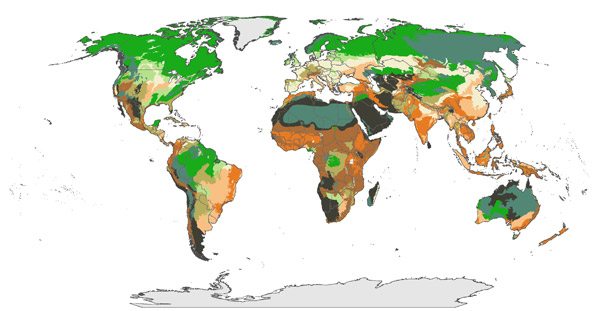 New research highlights the world’s most (and least) vulnerable ecosystems to climate change. The study, published in Nature Climate Change, is the first to combine anticipated climatic impacts with how degraded the ecosystem is due to human impacts, creating what scientists hope is a more accurate list of vulnerable regions. The most endangered regions include […]
New research highlights the world’s most (and least) vulnerable ecosystems to climate change. The study, published in Nature Climate Change, is the first to combine anticipated climatic impacts with how degraded the ecosystem is due to human impacts, creating what scientists hope is a more accurate list of vulnerable regions. The most endangered regions include […]
Natural cooling cycle in Pacific may have slowed global warming…for now
 Cooling waters in the tropical Pacific Ocean appear to be a major factor in dampening global warming in recent years, scientists said on Wednesday. Their work is a big step forward in helping to solve the greatest puzzle of current climate change research – why global average surface temperatures, while still on an upward trend, […]
Cooling waters in the tropical Pacific Ocean appear to be a major factor in dampening global warming in recent years, scientists said on Wednesday. Their work is a big step forward in helping to solve the greatest puzzle of current climate change research – why global average surface temperatures, while still on an upward trend, […]
Bad feedback: ocean acidification to worsen global warming
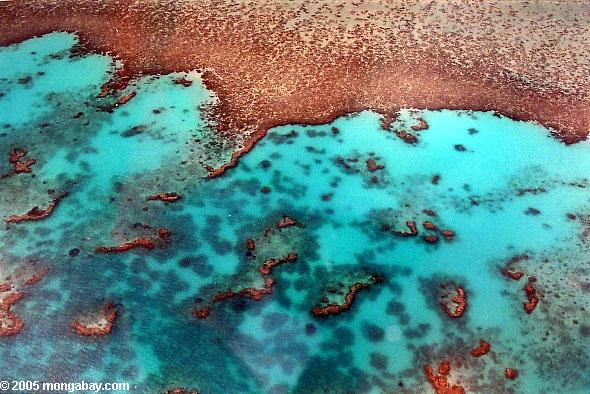 As if ocean acidification and climate change weren’t troubling enough (both of which are caused by still-rising carbon emissions), new research published in Nature finds that ocean acidification will eventually exacerbate global warming, further raising the Earth’s temperature. Scientists have long known that tiny marine organisms—phytoplankton—are central to cooling the world by emitting an organic […]
As if ocean acidification and climate change weren’t troubling enough (both of which are caused by still-rising carbon emissions), new research published in Nature finds that ocean acidification will eventually exacerbate global warming, further raising the Earth’s temperature. Scientists have long known that tiny marine organisms—phytoplankton—are central to cooling the world by emitting an organic […]
Climate could warm more rapidly than any time in the last 65 million years
 According to a new review of 27 climate models, scientists say the global climate is likely to experience a warmth as great as any in the last 65 million years, only much, much faster. According to the study published today in Science, the Earth’s land temperature will rise by 4 degrees Celsius (7.2 degrees Fahrenheit) […]
According to a new review of 27 climate models, scientists say the global climate is likely to experience a warmth as great as any in the last 65 million years, only much, much faster. According to the study published today in Science, the Earth’s land temperature will rise by 4 degrees Celsius (7.2 degrees Fahrenheit) […]
Hurricane intensity, frequency to increase with climate change
 Warmer ocean temperatures will increase the frequency and intensity of tropical cyclones, typhoons and hurricanes in “most locations” this century, concludes a new study based on simulations using six global climate models. The research, published by MIT’s Kerry Emanuel in Proceedings of the National Academy of Sciences, projects the largest increase in cyclones in the […]
Warmer ocean temperatures will increase the frequency and intensity of tropical cyclones, typhoons and hurricanes in “most locations” this century, concludes a new study based on simulations using six global climate models. The research, published by MIT’s Kerry Emanuel in Proceedings of the National Academy of Sciences, projects the largest increase in cyclones in the […]
Amazon fire risk on the rise, says NASA
 The Amazon rainforest is facing a higher risk of fires this dry season, warns a fire prediction system developed by researchers using NASA and NOAA data. The model is based on an observed correlation between sea surface temperatures in the tropical Atlantic and rainfall in the Amazon. High Atlantic temperatures tend to suppress precipitation in […]
The Amazon rainforest is facing a higher risk of fires this dry season, warns a fire prediction system developed by researchers using NASA and NOAA data. The model is based on an observed correlation between sea surface temperatures in the tropical Atlantic and rainfall in the Amazon. High Atlantic temperatures tend to suppress precipitation in […]
By 2050 much of the Arctic could be green
 Arctic treeline site near Cherskiy in northeastern Siberia. A new study finds that the Arctic treeline will continue expanding northward as the region warms. Photo courtesy of Woods Hole Research Center. Warming about twice as fast as the rest of the world, the Arctic is already undergoing massive upheavals from climate change: summer sea ice […]
Arctic treeline site near Cherskiy in northeastern Siberia. A new study finds that the Arctic treeline will continue expanding northward as the region warms. Photo courtesy of Woods Hole Research Center. Warming about twice as fast as the rest of the world, the Arctic is already undergoing massive upheavals from climate change: summer sea ice […]
Scientists find the ‘missing heat’ of global warming 700 meters below the sea
 Total ocean heat content shown in violet, while grey shows 0 to 300 meters and blue shows 300 to 700 meters. Vertical colored bars show volcanic eruptions that cooled the Earth for a short period and the 1997-98 El Nino event. Chart from Balmaseda et al. Critics of climate change often claim that warming has […]
Total ocean heat content shown in violet, while grey shows 0 to 300 meters and blue shows 300 to 700 meters. Vertical colored bars show volcanic eruptions that cooled the Earth for a short period and the 1997-98 El Nino event. Chart from Balmaseda et al. Critics of climate change often claim that warming has […]
Rainforests may be more resilient to global warming – in isolation – than previously forecast
 Tropical forests may be less sensitive to global warming than previously thought, argues a new study published in Nature Geoscience. The research is based on computer simulations using 22 climate models for tropical forests in Africa, Asia, and the Americas. It projects loss of forest biomass as a result of climate change only in the […]
Tropical forests may be less sensitive to global warming than previously thought, argues a new study published in Nature Geoscience. The research is based on computer simulations using 22 climate models for tropical forests in Africa, Asia, and the Americas. It projects loss of forest biomass as a result of climate change only in the […]
Human activity driving unprecedented temperature shift
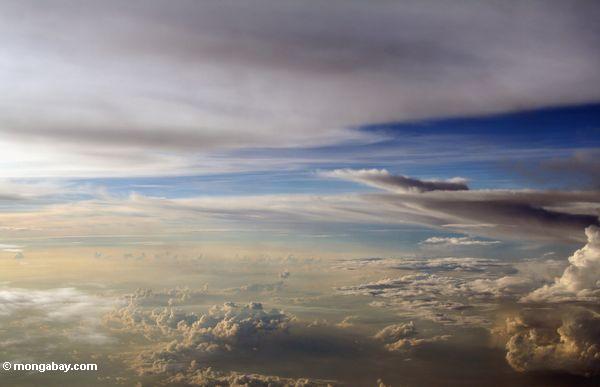 Average global temperatures are now higher than any point during the past 4,000 years despite being in the midst of what should be a cooling interval, reports a new study published in the journal Science. The research — based on ice cores and other data from 73 sites sites around the world — constructs a […]
Average global temperatures are now higher than any point during the past 4,000 years despite being in the midst of what should be a cooling interval, reports a new study published in the journal Science. The research — based on ice cores and other data from 73 sites sites around the world — constructs a […]
Rise in 1.5 degrees Celsius likely to spark massive greenhouse gas release from permafrost
 Frost crystals at the entrance of Ledyanaya Lenskaya Cave. Photo by: Vladimir V. Alexioglo. While nations around the world have committed to keeping temperatures from rising 2 degrees Celsius (3.6 degrees Fahrenheit) above the pre-industrial era, new research published in Science suggests that the global climate could hit a tipping point at just 1.5 degrees […]
Frost crystals at the entrance of Ledyanaya Lenskaya Cave. Photo by: Vladimir V. Alexioglo. While nations around the world have committed to keeping temperatures from rising 2 degrees Celsius (3.6 degrees Fahrenheit) above the pre-industrial era, new research published in Science suggests that the global climate could hit a tipping point at just 1.5 degrees […]
Carbon release, storage by rainforests may increase by 50b tons for each degree of climate warming in the tropics
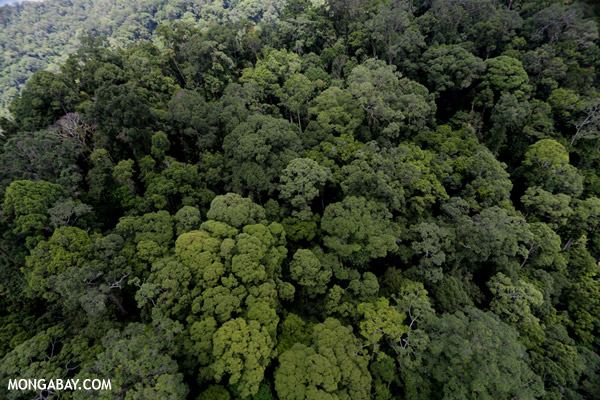 Tropical rainforest. Faster plant growth due to higher concentrations of carbon dioxide may offset increased emissions from forest die-off in the tropics, asserts a new study based on climate modeling. The research, published this week in the journal Nature, looks at how year-to-year variations in CO2 levels effect the long-term rate of carbon storage in […]
Tropical rainforest. Faster plant growth due to higher concentrations of carbon dioxide may offset increased emissions from forest die-off in the tropics, asserts a new study based on climate modeling. The research, published this week in the journal Nature, looks at how year-to-year variations in CO2 levels effect the long-term rate of carbon storage in […]
Borneo’s forests face dire future from global warming
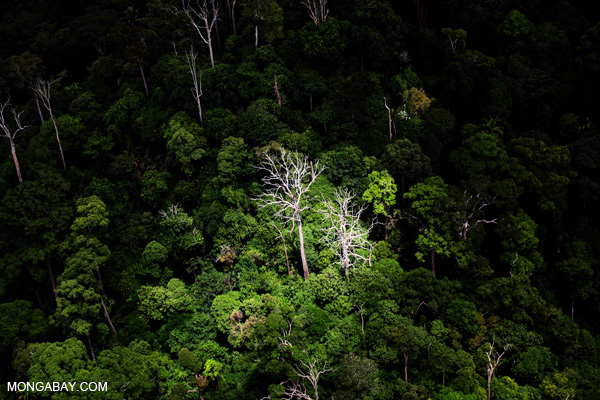 Dim outlook for Borneo’s rainforests? Already wracked by extensive deforestation and forest degradation, the future looks grim for Borneo’s tropical rainforests, reports a new study published in the Journal of Geophysical Research-Biogeosciences. Combining historical records with field observations and global climate models Tomo’omi Kumagai and Amilcare Porporato of Duke University find that an sharp increase […]
Dim outlook for Borneo’s rainforests? Already wracked by extensive deforestation and forest degradation, the future looks grim for Borneo’s tropical rainforests, reports a new study published in the Journal of Geophysical Research-Biogeosciences. Combining historical records with field observations and global climate models Tomo’omi Kumagai and Amilcare Porporato of Duke University find that an sharp increase […]
Climate change increased the probability of Texas drought, African famine, and other extreme weather
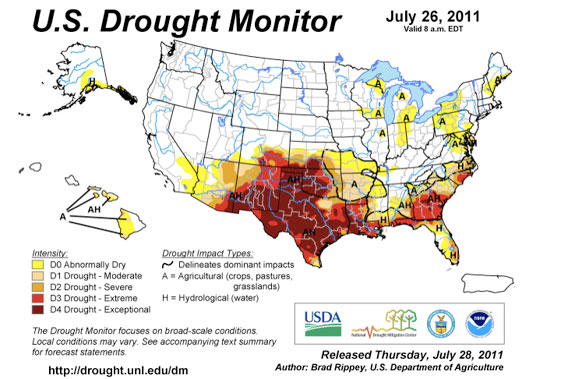 Map shows the level of drought and dryness across the US in July 2011. Map courtesy US Department of Agriculture. Click to enlarge. Climate change is here and its increasing the chances for crazy weather, according to scientists. A prestigious group of climatologists have released a landmark report that makes the dramatic point that climate […]
Map shows the level of drought and dryness across the US in July 2011. Map courtesy US Department of Agriculture. Click to enlarge. Climate change is here and its increasing the chances for crazy weather, according to scientists. A prestigious group of climatologists have released a landmark report that makes the dramatic point that climate […]
Pre-industrial deforestation still warming atmosphere
 Terraced rice paddies in Yunnan. Many of China’s current agricultural areas were made by clearing forests and other natural vegetation hundreds to thousands of years ago. Photo by: Rhett A. Butler. Fossil fuels were not burned in massive quantities prior to the Industrial Revolution, but humans were still pumping carbon into the atmosphere due to […]
Terraced rice paddies in Yunnan. Many of China’s current agricultural areas were made by clearing forests and other natural vegetation hundreds to thousands of years ago. Photo by: Rhett A. Butler. Fossil fuels were not burned in massive quantities prior to the Industrial Revolution, but humans were still pumping carbon into the atmosphere due to […]
As Colorado and New Mexico burn, scientists say prepare for more
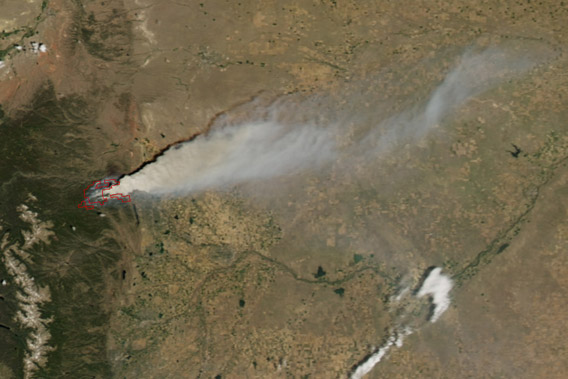 The High Park Fire in Colorado started on June 9th from a lightening strike and quickly expanded. This image is from June 10th, taken by Moderate Resolution Imaging Spectroradiometer (MODIS) on NASA’s Aqua satellite. Image courtesy of NASA. A massive wildlife in Colorado still burns after it has killed one person and damaged or destroyed […]
The High Park Fire in Colorado started on June 9th from a lightening strike and quickly expanded. This image is from June 10th, taken by Moderate Resolution Imaging Spectroradiometer (MODIS) on NASA’s Aqua satellite. Image courtesy of NASA. A massive wildlife in Colorado still burns after it has killed one person and damaged or destroyed […]
“Strong evidence” linking extreme heatwaves, floods, and droughts to climate change
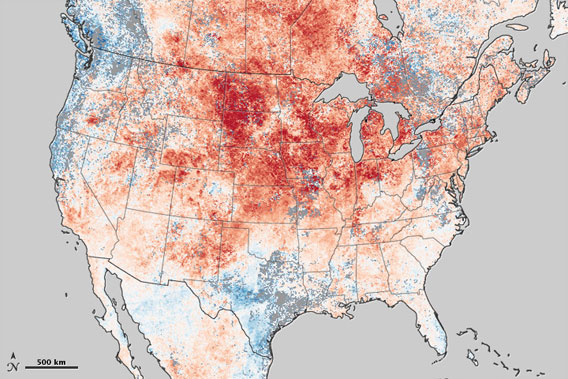 NASA map shows temperature anomalies from March 13-19, 2012 as compared to the same eight day period during the past 12 years based on data captured by the Moderate Resolution Imaging Spectroradiometer (MODIS) instrument on NASA’s Terra satellite. Click to enlarge. As North America recovers from what noted meteorologist Jeff Masters has called “the most […]
NASA map shows temperature anomalies from March 13-19, 2012 as compared to the same eight day period during the past 12 years based on data captured by the Moderate Resolution Imaging Spectroradiometer (MODIS) instrument on NASA’s Terra satellite. Click to enlarge. As North America recovers from what noted meteorologist Jeff Masters has called “the most […]
New meteorological theory argues that the world’s forests are rainmakers
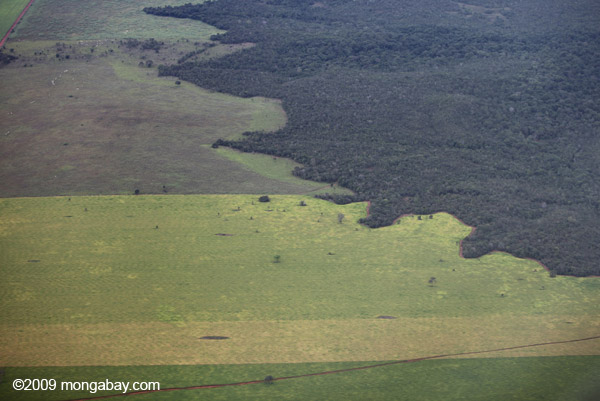 The Amazon rainforest meets cleared area for cattle pasture. A radical meteorology theory argues that loss of forest, both in temperate and tropical regions, will lead to less precipitation over land. Photo by: Rhett A. Butler. New, radical theories in science often take time to be accepted, especially those that directly challenge longstanding ideas, contemporary […]
The Amazon rainforest meets cleared area for cattle pasture. A radical meteorology theory argues that loss of forest, both in temperate and tropical regions, will lead to less precipitation over land. Photo by: Rhett A. Butler. New, radical theories in science often take time to be accepted, especially those that directly challenge longstanding ideas, contemporary […]
Current emission pledges will raise temperature 3.5 degrees Celsius
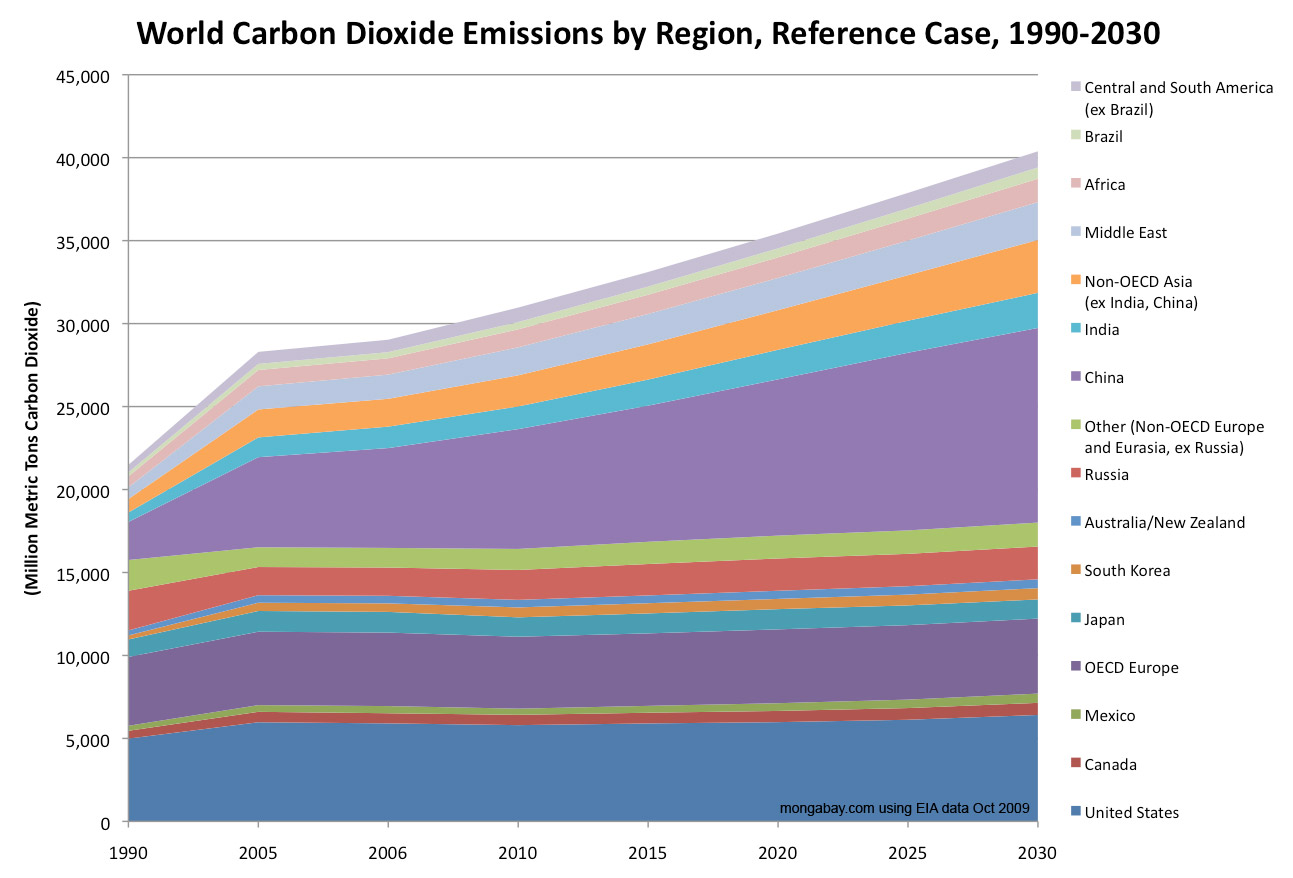 New research announced at the 17th UN Climate Summit in Durban, South Africa finds that under current pledges for reducing emissions the global temperature will rise by 3.5 degrees Celsius (6.3 degrees Fahrenheit) from historic levels, reports the AFP. This is nearly double world nations’ pledge to keep warming below 2 degrees Celsius (3.6 degrees […]
New research announced at the 17th UN Climate Summit in Durban, South Africa finds that under current pledges for reducing emissions the global temperature will rise by 3.5 degrees Celsius (6.3 degrees Fahrenheit) from historic levels, reports the AFP. This is nearly double world nations’ pledge to keep warming below 2 degrees Celsius (3.6 degrees […]
At least 74 percent of current warming caused by us
 A new methodology to tease out how much current climate change is linked to human activities has added to the consensus that behind global warming is us. The study, published in Nature Geoscience found that humans have caused at least three-quarters (74 percent) of current warming, while also determining that warming has actually been slowed […]
A new methodology to tease out how much current climate change is linked to human activities has added to the consensus that behind global warming is us. The study, published in Nature Geoscience found that humans have caused at least three-quarters (74 percent) of current warming, while also determining that warming has actually been slowed […]
Yellowstone burning: big fires to hit world’s first national park annually by 2050
An icon of conservation and wilderness worldwide, Yellowstone National Park could see its ecosystem flip due to increased big fires from climate change warn experts in a new study in the Proceedings of the National Academy of Science (PNAS). A sudden increase in large fires—defined as over 200 hectares (500 acres)—by mid-century could shift the […]
Climate change and deforestation pose risk to Amazon rainforest
 Deforestation and climate change will likely decimate much of the Amazon rainforest, says a new study by Brazil’s National Institute for Space Research (INPE) and the UK’s Met Office Hadley Centre. Climate change and widespread deforestation is expected to cause warmer and drier conditions overall, reducing the resistance of the rainforest ecosystem to natural and […]
Deforestation and climate change will likely decimate much of the Amazon rainforest, says a new study by Brazil’s National Institute for Space Research (INPE) and the UK’s Met Office Hadley Centre. Climate change and widespread deforestation is expected to cause warmer and drier conditions overall, reducing the resistance of the rainforest ecosystem to natural and […]
Are US floods, fires linked to climate change?
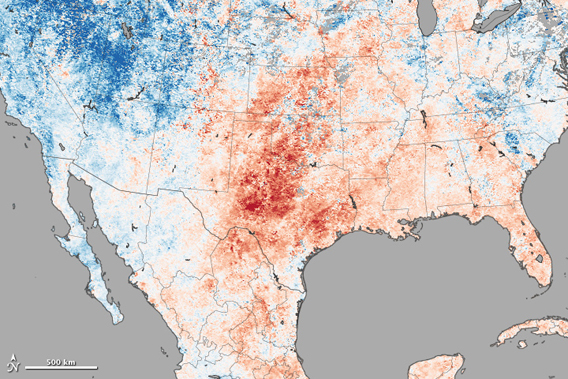 The short answer to the question of whether or not on-going floods in the US Midwest and fires in Texas are linked to a warming Earth is: maybe. The long answer, however, is that while it is difficult—some argue impossible—for scientists to link a single extreme weather event to climate change, climate models have long […]
The short answer to the question of whether or not on-going floods in the US Midwest and fires in Texas are linked to a warming Earth is: maybe. The long answer, however, is that while it is difficult—some argue impossible—for scientists to link a single extreme weather event to climate change, climate models have long […]
Birnam Wood in the 21st Century: northern forest invading Arctic tundra as world warms
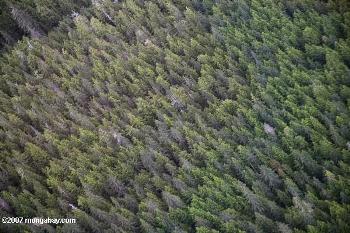 In Shakespeare’s play Macbeth the forest of Birnam Wood fulfills a seemingly impossible prophecy by moving to surround the murderous king (the marching trees are helped, of course, by an army of axe-wielding camouflaged Scots). The Arctic tundra may soon feel much like the doomed Macbeth with an army of trees (and invading species) closing […]
In Shakespeare’s play Macbeth the forest of Birnam Wood fulfills a seemingly impossible prophecy by moving to surround the murderous king (the marching trees are helped, of course, by an army of axe-wielding camouflaged Scots). The Arctic tundra may soon feel much like the doomed Macbeth with an army of trees (and invading species) closing […]
Monitoring deforestation: an interview with Brazilian space researcher Gilberto Camara
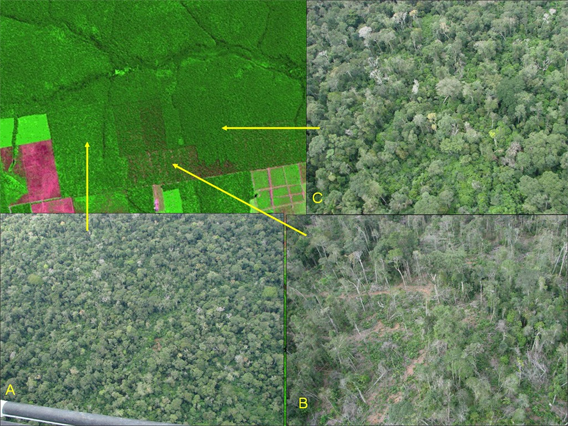 DEGRAD, INPE’s system for measuring forest degradation in the Amazon rainforest. Perhaps unsurprisingly, the world’s best deforestation tracking system is found in the country with the most rainforest: Brazil. Following international outcry over immense forest loss in the 1980s, Brazil in the 1990s set in motion a plan to develop a satellite-based system for tracking […]
DEGRAD, INPE’s system for measuring forest degradation in the Amazon rainforest. Perhaps unsurprisingly, the world’s best deforestation tracking system is found in the country with the most rainforest: Brazil. Following international outcry over immense forest loss in the 1980s, Brazil in the 1990s set in motion a plan to develop a satellite-based system for tracking […]
Unprecedented tundra fire likely linked to climate change
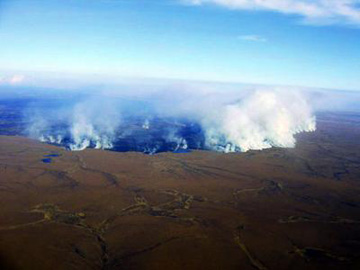 A thousand square kilometers of the Alaskan tundra burned in September 2007, a single fire that doubled the area burned in the region since 1950. However, a new study in the Journal of Geophysical Research finds that the fire was even more unprecedented than imagined: sediment cores found that it was the most destructive fire […]
A thousand square kilometers of the Alaskan tundra burned in September 2007, a single fire that doubled the area burned in the region since 1950. However, a new study in the Journal of Geophysical Research finds that the fire was even more unprecedented than imagined: sediment cores found that it was the most destructive fire […]
Space tourism will worsen climate change
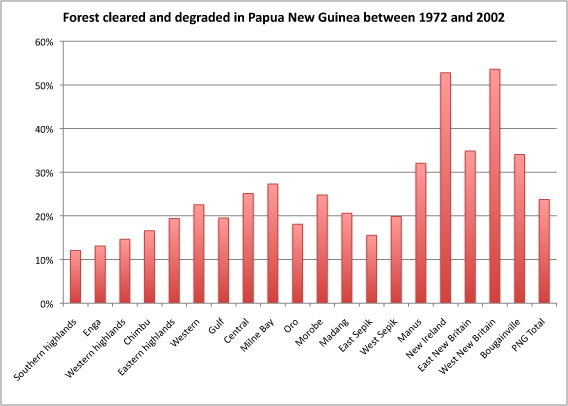 Have $200,000 to spend on a seat into space? You may want to re-think the expenditure given a new study in Geophysical Research Letters that shows space tourism will likely aggravate global climate change. Using sophisticated modeling, the researchers found that the biggest impact of a rise in space tourism on global temperatures won’t be […]
Have $200,000 to spend on a seat into space? You may want to re-think the expenditure given a new study in Geophysical Research Letters that shows space tourism will likely aggravate global climate change. Using sophisticated modeling, the researchers found that the biggest impact of a rise in space tourism on global temperatures won’t be […]
80% of rainforests could adversely impacted by logging, deforestation, climate change by 2100
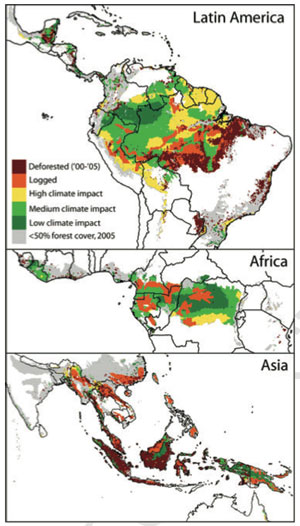 The world’s tropical forests may suffer large-scale degradation and deforestation by the end of the century if current logging and climate change trends persist, finds a new analysis published in Conservation Letters. Researchers led by Greg Asner at the Carnegie Institution’s Department of Global Ecology at Stanford University projected future vegetation change based on integrating […]
The world’s tropical forests may suffer large-scale degradation and deforestation by the end of the century if current logging and climate change trends persist, finds a new analysis published in Conservation Letters. Researchers led by Greg Asner at the Carnegie Institution’s Department of Global Ecology at Stanford University projected future vegetation change based on integrating […]
Decline in fog threatens California’s iconic redwood ecosystems
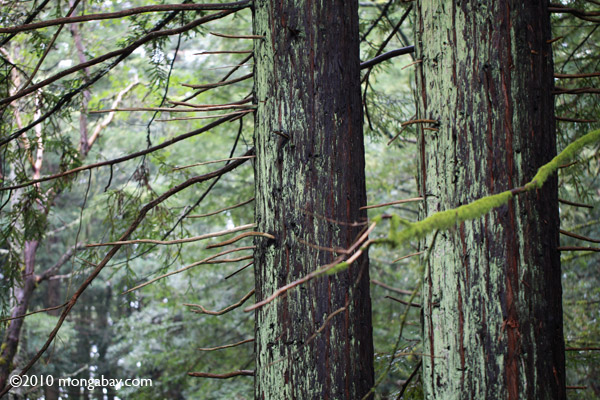 Redwoods in Huddart County Park, San Mateo County, California. Photo by Rhett Butler. A surprising new study finds that during the past century the frequency of fog along California’s coast has declined by approximately three hours a day. Published in the Proceedings of the National Academy of Sciences the researchers are concerned that this decrease […]
Redwoods in Huddart County Park, San Mateo County, California. Photo by Rhett Butler. A surprising new study finds that during the past century the frequency of fog along California’s coast has declined by approximately three hours a day. Published in the Proceedings of the National Academy of Sciences the researchers are concerned that this decrease […]
On World Wetland’s Day bad news for America’s iconic ducks
 World Wetland Day 2010 brings with it new research on America’s prairie wetlands and bad news for the country’s waterfowl. A new study in BioScience finds that America’s prairies are greatly susceptible to climate change: a warmer and drier prairie will desiccate wetlands needed by ducks and other waterfowl for food, shelter, and breeding. “Unfortunately, […]
World Wetland Day 2010 brings with it new research on America’s prairie wetlands and bad news for the country’s waterfowl. A new study in BioScience finds that America’s prairies are greatly susceptible to climate change: a warmer and drier prairie will desiccate wetlands needed by ducks and other waterfowl for food, shelter, and breeding. “Unfortunately, […]
Catastrophic sea level rise could occur with only two degrees Celsius warming
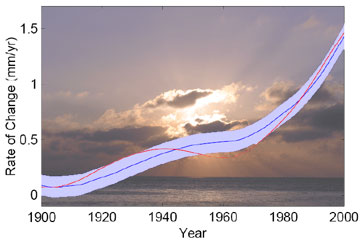 Allowing the climate to rise by just two degrees Celsius—the target most industrialized nations are currently discussing in Copenhagen—may still lead to a catastrophic sea level rise of six to nine meters, according to a new study in Nature. While this rise in sea levels would take hundreds of years to fully occur, inaction this […]
Allowing the climate to rise by just two degrees Celsius—the target most industrialized nations are currently discussing in Copenhagen—may still lead to a catastrophic sea level rise of six to nine meters, according to a new study in Nature. While this rise in sea levels would take hundreds of years to fully occur, inaction this […]
Global warming will increase likelihood of civil war in Africa by 55 percent
 There have been many warnings by policymakers that rising temperatures in Africa could lead to civil conflict, however a new study in Proceedings of the National Academy of Sciences is the first to uncover empirical evidence for these warnings and quantify them. The results—that higher temperatures increased the likelihood of civil war in sub-Saharan Africa […]
There have been many warnings by policymakers that rising temperatures in Africa could lead to civil conflict, however a new study in Proceedings of the National Academy of Sciences is the first to uncover empirical evidence for these warnings and quantify them. The results—that higher temperatures increased the likelihood of civil war in sub-Saharan Africa […]
Oceans’ ability to sequester carbon diminishing
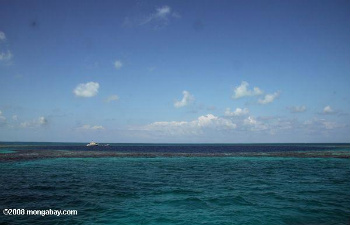 A new study—the first of its kind—has completed an annual accounting of the oceans’ intake of carbon over the past 250 years, and the news is troubling. According to the study, published in Nature, the oceans’ ability to sequester carbon is struggling to keep-up with mankind’s ever-growing emissions. Since 2000 researchers estimate that while every […]
A new study—the first of its kind—has completed an annual accounting of the oceans’ intake of carbon over the past 250 years, and the news is troubling. According to the study, published in Nature, the oceans’ ability to sequester carbon is struggling to keep-up with mankind’s ever-growing emissions. Since 2000 researchers estimate that while every […]
Global warming threatens desert life
There have been numerous studies showing how climate change is impacting a variety of environments—from the Arctic to coral reefs to alpine—but how could a warmer world damage deserts, already the world’s warmest and driest environments? New research shows that the key is nitrogren. A new study in Science found that as deserts become hotter […]
Goodbye, snows of Kilimanjaro
 The most recent survey among the ice fields atop Mount Kilimanjaro found that the ice atop Africa’s most famous mountain could be gone in twenty years—and maybe even sooner. Published in the Proceedings of the National Academy of Science the study was conducted by a team of researchers who first measured the glaciers in 2000. […]
The most recent survey among the ice fields atop Mount Kilimanjaro found that the ice atop Africa’s most famous mountain could be gone in twenty years—and maybe even sooner. Published in the Proceedings of the National Academy of Science the study was conducted by a team of researchers who first measured the glaciers in 2000. […]
Will tropical trees survive climate change?, an interview with Kenneth J. Feeley
 Fifth in a series of interviews with participants at the 2009 Association of Tropical Biology and Conservation (ATBC) conference. One of the most pressing issues in the conservation today is how climate change will affect tropical ecosystems. The short answer is: we don’t know. Because of this, more and more scientists are looking at the […]
Fifth in a series of interviews with participants at the 2009 Association of Tropical Biology and Conservation (ATBC) conference. One of the most pressing issues in the conservation today is how climate change will affect tropical ecosystems. The short answer is: we don’t know. Because of this, more and more scientists are looking at the […]
Sea levels set to rise as Arctic warming replaces millennia long natural cooling cycle
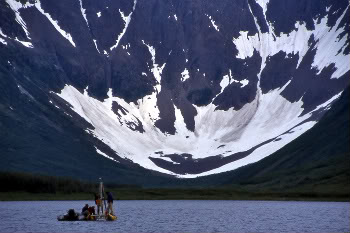 According to a new study published in Science the Arctic should be cooling, and in fact has been cooling for millennia. But beginning in 1900 Arctic summer temperatures began rising until the mid-1990s when the cooling trend was completely overcome. Researchers fear that this sudden up-tick in temperatures could lead to rising sea levels threatening […]
According to a new study published in Science the Arctic should be cooling, and in fact has been cooling for millennia. But beginning in 1900 Arctic summer temperatures began rising until the mid-1990s when the cooling trend was completely overcome. Researchers fear that this sudden up-tick in temperatures could lead to rising sea levels threatening […]
Amazon could lose 60% of forest without triggering catastrophic die-off, claims new study
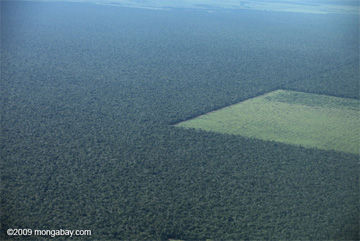 Brazil’s setting aside of more than 500,000 square miles (1.25 million square kilometers) of rainforest in protected areas over the past decade may effectively buffer the Amazon from the effects of climate change, preventing Earth’s largest rainforest from tipping towards arid savanna in the face of ongoing deforestation and rising temperatures, argues a new paper […]
Brazil’s setting aside of more than 500,000 square miles (1.25 million square kilometers) of rainforest in protected areas over the past decade may effectively buffer the Amazon from the effects of climate change, preventing Earth’s largest rainforest from tipping towards arid savanna in the face of ongoing deforestation and rising temperatures, argues a new paper […]
Global warming estimates double in severity according to new MIT modeling
Employing the MIT Integrated Global System Model, scientists have found that global warming could be more than twice as severe as previous estimates six years ago. The MIT Integrated Global Systems Model, which uses computer simulations to analyze the relationship between climatic changes and the global economy, found during 400 runs of the model that […]
Cutting greenhouse gases now would save world from worst global warming scenarios
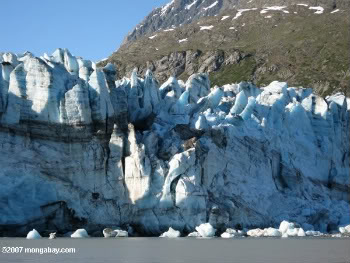 If nations worked together to produce large cuts in greenhouse gases, the world would be saved from global warming’s worst-case-scenarios, according to a new study from the National Center for Atmospheric Research (NCAR). The study found that, although temperatures are set to rise this century, cutting greenhouse gases by 70 percent the globe could avoid […]
If nations worked together to produce large cuts in greenhouse gases, the world would be saved from global warming’s worst-case-scenarios, according to a new study from the National Center for Atmospheric Research (NCAR). The study found that, although temperatures are set to rise this century, cutting greenhouse gases by 70 percent the globe could avoid […]
Trees in trouble: massive die-offs predicted with global warming
An experimental study of pinon pines at Biosphere 2 in Arizona shows that an increase in temperature makes the species more susceptible to die-off during drought. When temperatures were increased by 4 degrees Celsius (7.2 degrees Fahrenheit), the piñon pines died 28 percent faster than trees which experienced drought-conditions at current temperatures, according to a […]
Revolutionary new theory overturns modern meteorology with claim that forests move rain
 Largely ignored by scientific community, new theory could change how future generations view forests Two Russian scientists, Victor Gorshkov and Anastassia Makarieva of the St. Petersburg Nuclear Physics, have published a revolutionary theory that turns modern meteorology on its head, positing that forests—and their capacity for condensation—are actually the main driver of winds rather than […]
Largely ignored by scientific community, new theory could change how future generations view forests Two Russian scientists, Victor Gorshkov and Anastassia Makarieva of the St. Petersburg Nuclear Physics, have published a revolutionary theory that turns modern meteorology on its head, positing that forests—and their capacity for condensation—are actually the main driver of winds rather than […]
Amazonian region likely to become savannah due to burning, deforestation
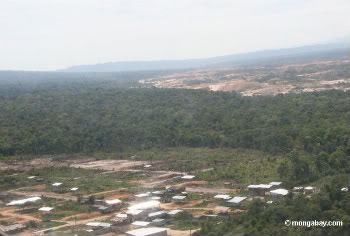 A new analysis shows that the heavily-deforested Amazonian region of Mato Grosso is particularly susceptible to ‘savannization’ due to repeated burning that has likely depleted the region’s soils of precious nutrients. According to the study, published in the Journal of Geophyscial Research, savannization, or the process of tropical ecosystems shifting to savannah, is likely in […]
A new analysis shows that the heavily-deforested Amazonian region of Mato Grosso is particularly susceptible to ‘savannization’ due to repeated burning that has likely depleted the region’s soils of precious nutrients. According to the study, published in the Journal of Geophyscial Research, savannization, or the process of tropical ecosystems shifting to savannah, is likely in […]
Rise in sea levels due to global warming could imperil New York City
Burning rainforests, melting tundra could accelerate global warming well beyond current projections

Global warming may drive the Amazon rainforest toward seasonal forests rather than savanna
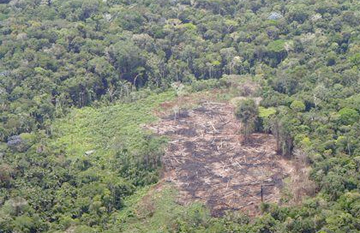 Changes in rainfall resulting from climate change may drive the parts of Amazon rainforest toward seasonal forests rather than savanna, argue researchers writing in the Proceedings of the National Academy of Sciences Comparing climate simulations by 19 global climate models with observations from the 20th century, Yadvinder Malhi and colleagues found that most projections underestimate […]
Changes in rainfall resulting from climate change may drive the parts of Amazon rainforest toward seasonal forests rather than savanna, argue researchers writing in the Proceedings of the National Academy of Sciences Comparing climate simulations by 19 global climate models with observations from the 20th century, Yadvinder Malhi and colleagues found that most projections underestimate […]
Global warming to strengthen Arctic storms
Monstrous prehistoric snake provides glimpse of warmer tropical forests
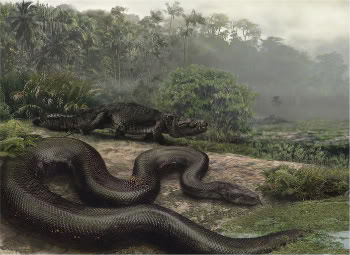
Sea levels may rise 2-3 times faster than expected
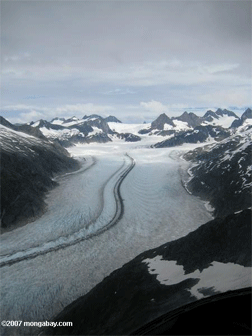 Sea levels may rise 2-3 times faster than expected Sea levels may rise 2-3 times faster than expected mongabay.com August 31, 2008 Global sea level rise this century from a melting Greenland ice sheet may be two to three times greater than current estimates warn researchers writing in journal Nature Geoscience. Analyzing geologic data and […]
Sea levels may rise 2-3 times faster than expected Sea levels may rise 2-3 times faster than expected mongabay.com August 31, 2008 Global sea level rise this century from a melting Greenland ice sheet may be two to three times greater than current estimates warn researchers writing in journal Nature Geoscience. Analyzing geologic data and […]
Climate change to hurt Brazil’s farm exports by 2020
Climate change to cut Brazil’s soy exports 24% by 2020 Climate change to cut Brazil’s soy exports 24% by 2020 mongabay.com August 11, 2008 Climate change could have a significant impact on thye value of Brazil’s agricultural exports according to a study presented Monday at an agribusiness conference in Sao Paulo, reports the Financial Times. […]
Global warming increases “extreme” rain storms
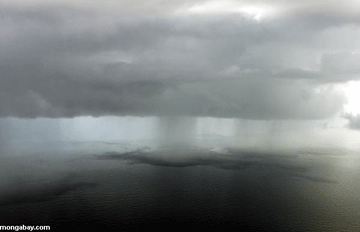 Global warming increases “extreme” rain storms Global warming increases “extreme” rain storms mongabay.com August 7, 2008 Global warming is increasing the incidence of heavy rainfall at a rate greater than predicted by current climate models have predicted, reports a new study published in the journal Science. The findings suggest that storm damage from precipitation could […]
Global warming increases “extreme” rain storms Global warming increases “extreme” rain storms mongabay.com August 7, 2008 Global warming is increasing the incidence of heavy rainfall at a rate greater than predicted by current climate models have predicted, reports a new study published in the journal Science. The findings suggest that storm damage from precipitation could […]
Past greenhouse warming events offer clues on future climate change
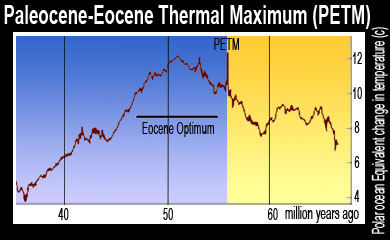 Past greenhouse warming events offer clues on future climate change Past greenhouse warming events offer clues on future climate change University of California – Santa Cruz February 16, 2008 If carbon dioxide emissions from the burning of fossil fuels continue on a “business-as-usual” trajectory, humans will have added about 5 trillion metric tons of carbon […]
Past greenhouse warming events offer clues on future climate change Past greenhouse warming events offer clues on future climate change University of California – Santa Cruz February 16, 2008 If carbon dioxide emissions from the burning of fossil fuels continue on a “business-as-usual” trajectory, humans will have added about 5 trillion metric tons of carbon […]
North Atlantic warming is natural, not due to climate change
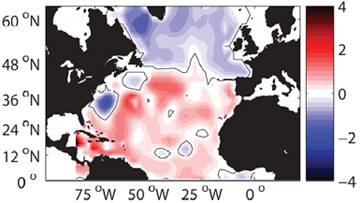 North Atlantic warming not due to climate change North Atlantic warming not due to climate change Rhett A. Butler, mongabay.com January 3, 2008 While overall temperature in the North Atlantic Ocean has risen over the past fifty years, it has not been consistent across all areas with subpolar regions cooling as subtropical and tropical waters […]
North Atlantic warming not due to climate change North Atlantic warming not due to climate change Rhett A. Butler, mongabay.com January 3, 2008 While overall temperature in the North Atlantic Ocean has risen over the past fifty years, it has not been consistent across all areas with subpolar regions cooling as subtropical and tropical waters […]
Rising CO2 levels tied to increasing human mortality
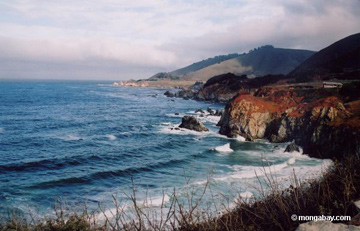 Rising CO2 levels tied to increasing human mortality Rising CO2 levels tied to increasing human mortality mongabay.com January 3, 2008 Rising carbon dioxide levels have been tied to increases in human mortality, reports a study to be published in Geophysical Research Letters. Using a complex computer model of the atmosphere, Stanford University professor Mark Jacobson […]
Rising CO2 levels tied to increasing human mortality Rising CO2 levels tied to increasing human mortality mongabay.com January 3, 2008 Rising carbon dioxide levels have been tied to increases in human mortality, reports a study to be published in Geophysical Research Letters. Using a complex computer model of the atmosphere, Stanford University professor Mark Jacobson […]
Melting of Greenland ice sheet could alter warming trend
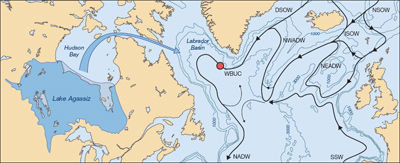 Melting of Greenland ice sheet could alter warming trend Melting of Greenland ice sheet could alter global warming trend mongabay.com December 6, 2007 Public sector has growing role in China’s forest management according to a new paper published in the journal Science A massive release from freshwater from the glacial Lake Agassiz 8,200 years ago […]
Melting of Greenland ice sheet could alter warming trend Melting of Greenland ice sheet could alter global warming trend mongabay.com December 6, 2007 Public sector has growing role in China’s forest management according to a new paper published in the journal Science A massive release from freshwater from the glacial Lake Agassiz 8,200 years ago […]
Global warming to boost severe thunderstorms in NYC, Atlanta
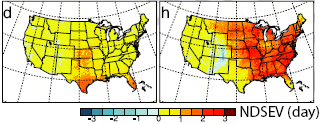 Global warming to boost severe thunderstorms in NYC, Atlanta Global warming to boost severe thunderstorms in NYC, Atlanta mongabay.com December 3, 2007 Global warming could lead to weather conditions that spawn severe thunderstorms in the United States, according to research appearing in the early edition of the journal Proceedings of the National Academy of Sciences. […]
Global warming to boost severe thunderstorms in NYC, Atlanta Global warming to boost severe thunderstorms in NYC, Atlanta mongabay.com December 3, 2007 Global warming could lead to weather conditions that spawn severe thunderstorms in the United States, according to research appearing in the early edition of the journal Proceedings of the National Academy of Sciences. […]
Climate risks to global agriculture are underestimated
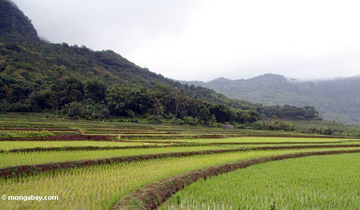 Climate risks to global agriculture are underestimated Climate risks to global agriculture are underestimated mongabay.com December 3, 2007 Vulnerability of global agricultural to climate change may be underestimated by experts, warns a trio of papers published in week’s issue of the Proceedings of the National Academy of Sciences (PNAS). The research says that “progressive changes […]
Climate risks to global agriculture are underestimated Climate risks to global agriculture are underestimated mongabay.com December 3, 2007 Vulnerability of global agricultural to climate change may be underestimated by experts, warns a trio of papers published in week’s issue of the Proceedings of the National Academy of Sciences (PNAS). The research says that “progressive changes […]
Food prices to rise due to energy demand, economic trends
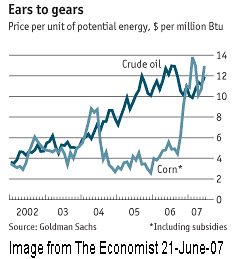 Food prices to rise due to energy demand, economic trends Food prices to rise due to energy demand, economic trends mongabay.com December 3, 2007 Income growth, climate change, high energy prices, globalization, and urbanization are converging to drive food prices higher, threatening livelihoods and nutrition of poor people in developing countries, says a new report […]
Food prices to rise due to energy demand, economic trends Food prices to rise due to energy demand, economic trends mongabay.com December 3, 2007 Income growth, climate change, high energy prices, globalization, and urbanization are converging to drive food prices higher, threatening livelihoods and nutrition of poor people in developing countries, says a new report […]
Climate sensitivity to rising CO2 levels still uncertain
 >Climate sensitivity to rising CO2 levels still uncertain Climate sensitivity to rising CO2 levels still uncertain mongabay.com October 25, 2007 Climate sensitivity to increasing concentrations of greenhouse gases is still largely uncertain and researchers will likely not be able to further refine their estimates on future climate scenarios, say two University of Washington scientists writing […]
>Climate sensitivity to rising CO2 levels still uncertain Climate sensitivity to rising CO2 levels still uncertain mongabay.com October 25, 2007 Climate sensitivity to increasing concentrations of greenhouse gases is still largely uncertain and researchers will likely not be able to further refine their estimates on future climate scenarios, say two University of Washington scientists writing […]
Climate change will impact U.S. economy
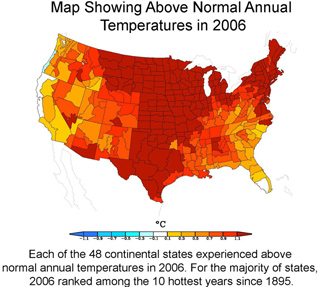 Climate change will impact U.S. economy Climate change will impact U.S. economy mongabay.com October 16, 2007 Climate change will have a significant economic impact on the United States, reports a new study published by researchers from the University of Maryland. The report, The U.S. Economic Impacts of Climate Change and the Costs of Inaction, aggregates […]
Climate change will impact U.S. economy Climate change will impact U.S. economy mongabay.com October 16, 2007 Climate change will have a significant economic impact on the United States, reports a new study published by researchers from the University of Maryland. The report, The U.S. Economic Impacts of Climate Change and the Costs of Inaction, aggregates […]
Scientists: Newsweek Erred in Global Warming Coverage
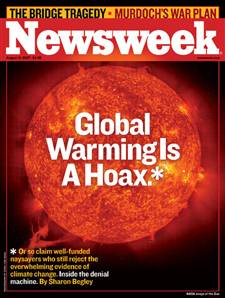 Scientists: Newsweek Erred in Global Warming Coverage Scientists: Newsweek Erred in Global Warming Coverage The University of Alabama August 13, 2007 A statement from the University of Alabama argues that a recent Newsweek cover story on climate change made two important mistakes. A recent Newsweek magazine cover story on global warming contained significant errors and […]
Scientists: Newsweek Erred in Global Warming Coverage Scientists: Newsweek Erred in Global Warming Coverage The University of Alabama August 13, 2007 A statement from the University of Alabama argues that a recent Newsweek cover story on climate change made two important mistakes. A recent Newsweek magazine cover story on global warming contained significant errors and […]
Global warming will slow, then accelerate reports ground-breaking model
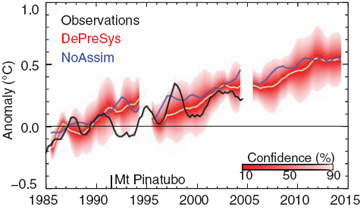 Global warming will slow, then accelerate reports ground-breaking model Global warming will slow, then accelerate reports ground-breaking model mongabay.com August 9, 2007 Global warming will slow during the next few years but then accelerate with at least half of the years after 2009 warmer than 1998, the warmest year on record, reports a new study […]
Global warming will slow, then accelerate reports ground-breaking model Global warming will slow, then accelerate reports ground-breaking model mongabay.com August 9, 2007 Global warming will slow during the next few years but then accelerate with at least half of the years after 2009 warmer than 1998, the warmest year on record, reports a new study […]
U.S. could offset 20% of emissions through reforestation of marginal lands
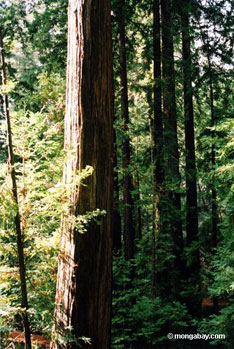 U.S. could offset 20% of emissions through reforestation of marginal lands U.S. could offset 20% of emissions through reforestation of marginal lands mongabay.com May 3, 2007 Reforesting marginal agricultural land could significantly slow the increase of carbon in the atmosphere reports a new study based on NASA data, though it would be no magic bullet […]
U.S. could offset 20% of emissions through reforestation of marginal lands U.S. could offset 20% of emissions through reforestation of marginal lands mongabay.com May 3, 2007 Reforesting marginal agricultural land could significantly slow the increase of carbon in the atmosphere reports a new study based on NASA data, though it would be no magic bullet […]
Ethanol may be greener but have higher health cost
 Ethanol may be greener but have higher health cost Ethanol may be greener but have higher health cost Rhett A. Butler, mongabay.com April 18, 2007 Widespread burning of ethanol as fuel may increase the number of respiratory-related deaths and hospitalizations relative to gasoline, according to a new study by Stanford University atmospheric scientist Mark Z. […]
Ethanol may be greener but have higher health cost Ethanol may be greener but have higher health cost Rhett A. Butler, mongabay.com April 18, 2007 Widespread burning of ethanol as fuel may increase the number of respiratory-related deaths and hospitalizations relative to gasoline, according to a new study by Stanford University atmospheric scientist Mark Z. […]
Could global deforestation fight climate change?
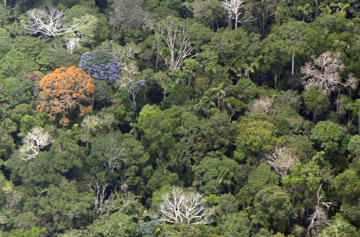 Could global deforestation fight climate change? Could global deforestation fight climate change? Rhett A. Butler, mongabay.com April 9, 2007 Forest clearing in temperature regions may cool planet but have other adverse effects While many climate change mitigation schemes rely on reforestation schemes to sequester carbon dioxide from the atmosphere, those located in temperate regions may […]
Could global deforestation fight climate change? Could global deforestation fight climate change? Rhett A. Butler, mongabay.com April 9, 2007 Forest clearing in temperature regions may cool planet but have other adverse effects While many climate change mitigation schemes rely on reforestation schemes to sequester carbon dioxide from the atmosphere, those located in temperate regions may […]
Climate change could turn Southwest into ‘Dustbowl’
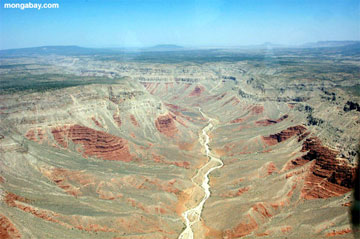 Climate change could turn Southwest into “Dustbowl” Climate change could turn Southwest into “Dustbowl” Rhett A. Butler, mongabay.com April 5, 2007 Global warming threatens to create a dustbowl in the American Southwest according to a new study published in the journal Science. The research, led by Richard Seager of Columbia University’s Lamont Doherty Earth Observatory, […]
Climate change could turn Southwest into “Dustbowl” Climate change could turn Southwest into “Dustbowl” Rhett A. Butler, mongabay.com April 5, 2007 Global warming threatens to create a dustbowl in the American Southwest according to a new study published in the journal Science. The research, led by Richard Seager of Columbia University’s Lamont Doherty Earth Observatory, […]
Climate report warns of drought, rising sea levels, species extinction
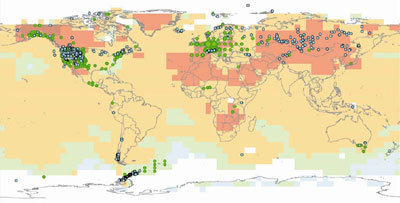 Climate report warns of drought, rising sea levels, species extinction Climate report warns of drought, rising sea levels, species extinction mongabay.com April 6, 2007 Global warming is likely to have wide-ranging impacts on the world’s ecosystems, water availablity, and sea levels warned the U.N. Intergovernmental Panel on Climate Change (IPCC) in its latest installment. It […]
Climate report warns of drought, rising sea levels, species extinction Climate report warns of drought, rising sea levels, species extinction mongabay.com April 6, 2007 Global warming is likely to have wide-ranging impacts on the world’s ecosystems, water availablity, and sea levels warned the U.N. Intergovernmental Panel on Climate Change (IPCC) in its latest installment. It […]
Carbon dioxide levels threaten oceans regardless of global warming
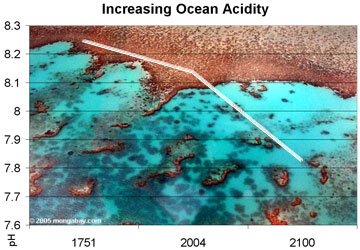 Carbon dioxide levels threaten oceans regardless of global warming Carbon dioxide levels threaten oceans regardless of global warming Rhett A. Butler, mongabay.com March 8, 2007 Rising levels of carbon dioxide will have wide-ranging impacts on the world’s oceans regardless of climate change, reports a study published in the March 9, 2007, issue of the journal […]
Carbon dioxide levels threaten oceans regardless of global warming Carbon dioxide levels threaten oceans regardless of global warming Rhett A. Butler, mongabay.com March 8, 2007 Rising levels of carbon dioxide will have wide-ranging impacts on the world’s oceans regardless of climate change, reports a study published in the March 9, 2007, issue of the journal […]
Global warming could trigger 8-degree temperature rise in Amazon rainforest
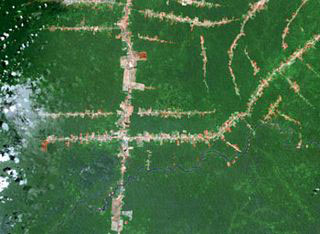 Global warming could trigger 8-degree temperature rise in Amazon rainforest Global warming could trigger 8-degree temperature rise in Amazon rainforest Impact on biodiversity, agriculture would be devastating mongabay.com February 28, 2007 Tuesday the Brazilian government announced the release of a series of scientific studies, including one by the national space agency (INPE) that projects a […]
Global warming could trigger 8-degree temperature rise in Amazon rainforest Global warming could trigger 8-degree temperature rise in Amazon rainforest Impact on biodiversity, agriculture would be devastating mongabay.com February 28, 2007 Tuesday the Brazilian government announced the release of a series of scientific studies, including one by the national space agency (INPE) that projects a […]
Water forecasts in Western U.S. have not improved in 40 years
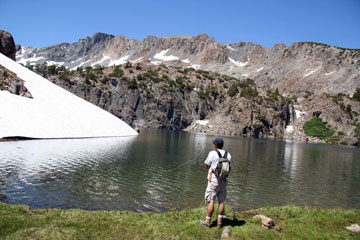 Water forecasts in Western U.S. have not improved in 40 years Water forecasts in Western U.S. have not improved in 40 years mongabay.com February 16, 2007 Water supply predictions for the western United States are no better now than they were in the 1960s — something that should be of particular concern as the effects […]
Water forecasts in Western U.S. have not improved in 40 years Water forecasts in Western U.S. have not improved in 40 years mongabay.com February 16, 2007 Water supply predictions for the western United States are no better now than they were in the 1960s — something that should be of particular concern as the effects […]
Antarctic temperatures are not rising
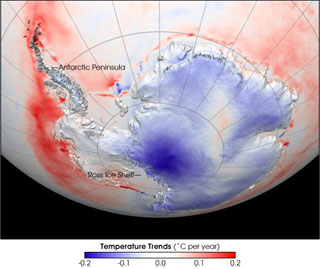 Antarctic temperatures are not rising Antarctic temperatures are not rising mongabay.com February 15, 2007 Temperatures in Antarctica are not rising as predicted by many climate models, according to research presented at the annual meeting of the American Association for the Advancement of Science in San Francisco. David Bromwich, researcher with the Byrd Polar Research Center […]
Antarctic temperatures are not rising Antarctic temperatures are not rising mongabay.com February 15, 2007 Temperatures in Antarctica are not rising as predicted by many climate models, according to research presented at the annual meeting of the American Association for the Advancement of Science in San Francisco. David Bromwich, researcher with the Byrd Polar Research Center […]
Temperature record for Midwest shows impact of global warming
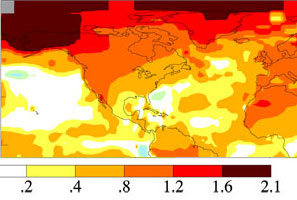 Temperature record for Midwest shows impact of global warming Temperature record for Midwest shows impact of global warming mongabay.com January 29, 2007 Researchers have developed a new method to create a temperature record for the Great Plains region of the United States. The model, based on analysis of ancient soils, could help predict the impact […]
Temperature record for Midwest shows impact of global warming Temperature record for Midwest shows impact of global warming mongabay.com January 29, 2007 Researchers have developed a new method to create a temperature record for the Great Plains region of the United States. The model, based on analysis of ancient soils, could help predict the impact […]
Leaf study could produce better global warming models
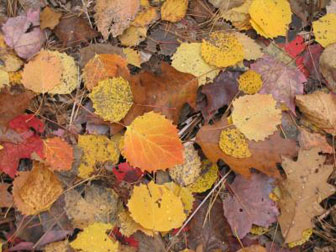 Leaf study could produce better global warming models Leaf study could produce better global warming models Rhett A. Butler, mongabay.com January 18, 2007 A new study on rotting leaves could produce more accurate climate models say researchers writing in the January 19 issue of the journal Science The Long-Term Inter-site Decomposition Experiment, involving 21 field […]
Leaf study could produce better global warming models Leaf study could produce better global warming models Rhett A. Butler, mongabay.com January 18, 2007 A new study on rotting leaves could produce more accurate climate models say researchers writing in the January 19 issue of the journal Science The Long-Term Inter-site Decomposition Experiment, involving 21 field […]
Sea levels may rise higher than predicted due to global warming
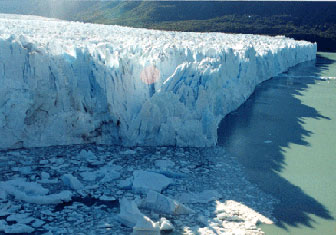 Sea levels may rise higher than predicted due to global warming Sea levels may rise higher than predicted due to global warming mongabay.com December 14, 2006 Global warming could cause sea levels to rise by four-and-a-half feet (140 cm) according to new projections published in Friday’s issue of the journal Science. Stefan Rahmstorf, a scientist […]
Sea levels may rise higher than predicted due to global warming Sea levels may rise higher than predicted due to global warming mongabay.com December 14, 2006 Global warming could cause sea levels to rise by four-and-a-half feet (140 cm) according to new projections published in Friday’s issue of the journal Science. Stefan Rahmstorf, a scientist […]
UN says man’s global warming impact lower than thought
 UN says man’s global warming impact lower than thought UN says man’s global warming impact lower than thought mongabay.com December 11, 2006 When it is released in February 2007, the UN Intergovernmental Panel on Climate Change (IPCC) will report that man’s impact on global climate is less than previously believed according to a story published […]
UN says man’s global warming impact lower than thought UN says man’s global warming impact lower than thought mongabay.com December 11, 2006 When it is released in February 2007, the UN Intergovernmental Panel on Climate Change (IPCC) will report that man’s impact on global climate is less than previously believed according to a story published […]
Global warming-fueled storms could devastate coral reefs
 Global-warming weakened reefs could suffer more storm damage Global-warming weakened reefs could suffer more storm damage mongabay.com November 23, 2006 Australia’s Great Barrier Reef and other coral ecosystems could suffer from increasingly powerful storms brought about by global warming according to computer models published by a team of Australian scientists in the journal Nature. Researchers […]
Global-warming weakened reefs could suffer more storm damage Global-warming weakened reefs could suffer more storm damage mongabay.com November 23, 2006 Australia’s Great Barrier Reef and other coral ecosystems could suffer from increasingly powerful storms brought about by global warming according to computer models published by a team of Australian scientists in the journal Nature. Researchers […]
Atmospheric levels of key greenhouse gas stabilize, could begin to decline
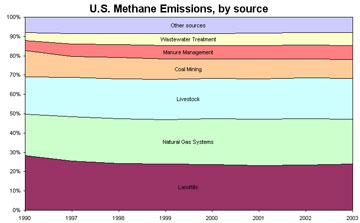 Atmospheric levels of key greenhouse gas stabilize, could begin to decline Atmospheric levels of key greenhouse gas stabilize, could begin to decline mongabay.com November 20, 2006 Atmospheric levels of methane, a potent greenhouse gas have leveled off for the past seven years according to scientists at the University of California, Irvine. The stabilization could have […]
Atmospheric levels of key greenhouse gas stabilize, could begin to decline Atmospheric levels of key greenhouse gas stabilize, could begin to decline mongabay.com November 20, 2006 Atmospheric levels of methane, a potent greenhouse gas have leveled off for the past seven years according to scientists at the University of California, Irvine. The stabilization could have […]
Global warming could put New York City at hurricane, flood risk
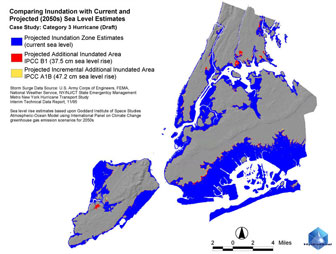 Global warming could put New York City at hurricane, flood risk Global warming could put New York City at hurricane, flood risk mongabay.com October 25, 2006 NASA researchers are investigating the potential impact of climate change on New York City using computer models to simulate future climates and sea level rise. Their studies, to date, […]
Global warming could put New York City at hurricane, flood risk Global warming could put New York City at hurricane, flood risk mongabay.com October 25, 2006 NASA researchers are investigating the potential impact of climate change on New York City using computer models to simulate future climates and sea level rise. Their studies, to date, […]
Climate change to cause more extreme weather
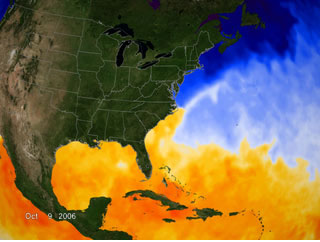 Climate change to cause more extreme weather Climate change to cause more extreme weather mongabay.com October 19, 2006 Climate change will cause extreme weather to be a more common occurrence according to new computer modeling by researchers from the National Center for Atmospheric Research (NCAR), Texas Tech University, and Australia’s Bureau of Meteorology Research Centre. […]
Climate change to cause more extreme weather Climate change to cause more extreme weather mongabay.com October 19, 2006 Climate change will cause extreme weather to be a more common occurrence according to new computer modeling by researchers from the National Center for Atmospheric Research (NCAR), Texas Tech University, and Australia’s Bureau of Meteorology Research Centre. […]
Most of world’s forests could be gone by 2100
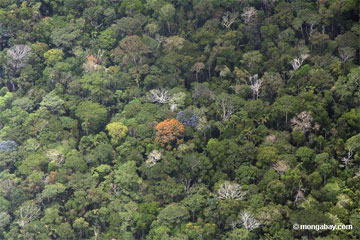 New research claims that more than half the world’s largest forests will be lost if global temperatures rise by an average of 3 degrees or more by the end of the century. The Amazon rainforest. The study, published in the current Proceedings of the National Academy of Sciences, says that a warmer climate also increases […]
New research claims that more than half the world’s largest forests will be lost if global temperatures rise by an average of 3 degrees or more by the end of the century. The Amazon rainforest. The study, published in the current Proceedings of the National Academy of Sciences, says that a warmer climate also increases […]
Snow in Antarctic not falling to counter sea level rise
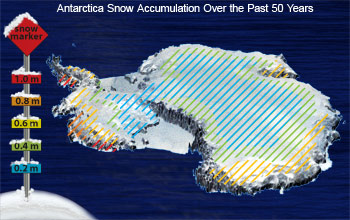 Snow in Antarctic not falling to counter sea level rise Snow in Antarctic not falling to counter sea level rise National Science Foundation August 10, 2006 The most precise record of Antarctic snowfall ever generated shows there has been no real increase in precipitation over the southernmost continent in the past half-century, even though most […]
Snow in Antarctic not falling to counter sea level rise Snow in Antarctic not falling to counter sea level rise National Science Foundation August 10, 2006 The most precise record of Antarctic snowfall ever generated shows there has been no real increase in precipitation over the southernmost continent in the past half-century, even though most […]
Sun, not carbon dioxide, primary driver of ice ages says new theory
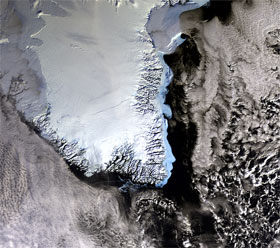 Sun, not carbon dioxide, primary driver of ice ages says new theory Sun, not carbon dioxide, primary driver of ice ages says new theory mongabay.com July 24, 2006 A new theory says that carbon dioxide is only a secondary driver of ice ages. In a paper published online in the journal Climate of the Past, […]
Sun, not carbon dioxide, primary driver of ice ages says new theory Sun, not carbon dioxide, primary driver of ice ages says new theory mongabay.com July 24, 2006 A new theory says that carbon dioxide is only a secondary driver of ice ages. In a paper published online in the journal Climate of the Past, […]
War of words over new climate change report, ‘hockey stick’ model
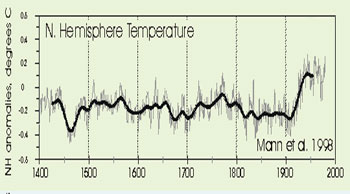 War of words over new climate change report, ‘hockey stick’ model War of words over new climate change report, ‘hockey stick’ model Leading scientist says House climate report is “politicized” mongabay.com July 16, 2006 Paleoclimatologist Michael Mann criticized a report challenging the familiar “hockey stick” temperature record of the past thousand years. The report, commissioned […]
War of words over new climate change report, ‘hockey stick’ model War of words over new climate change report, ‘hockey stick’ model Leading scientist says House climate report is “politicized” mongabay.com July 16, 2006 Paleoclimatologist Michael Mann criticized a report challenging the familiar “hockey stick” temperature record of the past thousand years. The report, commissioned […]
Alps could lose 80% of glacier cover by 2100
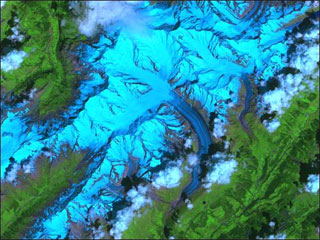 Alps could lose 80% of glacier cover by 2100 Alps could lose 80% of glacier cover by 2100 mongabay.com July 10, 2006 The European Alps could lose 80 percent of their glacier cover by the year 2100, if summer air temperatures increase by three degrees Celsius (five degrees Fahrenheit) according to a study published in […]
Alps could lose 80% of glacier cover by 2100 Alps could lose 80% of glacier cover by 2100 mongabay.com July 10, 2006 The European Alps could lose 80 percent of their glacier cover by the year 2100, if summer air temperatures increase by three degrees Celsius (five degrees Fahrenheit) according to a study published in […]
Future crop yields lower than expected under higher carbon dioxide levels
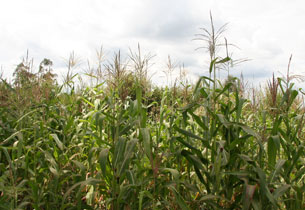 Future crop yields lower-than-expected under higher carbon dioxide levels Future crop yields lower than expected under higher carbon dioxide levels mongabay.com June 29, 2006 Open-air field trials involving five major food crops grown under carbon-dioxide levels projected for the future are yielding signifcantly less than those raised in earlier enclosed test conditions. Scientists at the […]
Future crop yields lower-than-expected under higher carbon dioxide levels Future crop yields lower than expected under higher carbon dioxide levels mongabay.com June 29, 2006 Open-air field trials involving five major food crops grown under carbon-dioxide levels projected for the future are yielding signifcantly less than those raised in earlier enclosed test conditions. Scientists at the […]
Warming could cause rain forests to release more carbon dioxide
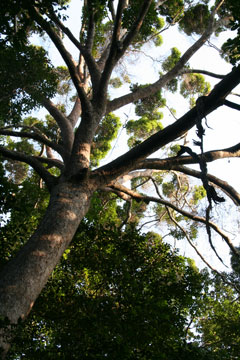 Warming could cause rain forests to release more carbon dioxide Warming could cause rain forests to release more carbon dioxide Tropical rainforest nutrients linked to global carbon dioxide levels National Science Foundation June 20, 2006 Extra amounts of key nutrients in tropical rain forest soils cause them to release more carbon dioxide into the atmosphere, […]
Warming could cause rain forests to release more carbon dioxide Warming could cause rain forests to release more carbon dioxide Tropical rainforest nutrients linked to global carbon dioxide levels National Science Foundation June 20, 2006 Extra amounts of key nutrients in tropical rain forest soils cause them to release more carbon dioxide into the atmosphere, […]
Extreme global warming likely by end of century
 Extreme global warming likely by end of century Extreme global warming likely by end of century mongabay.com May 24, 2006 Climate models predicting a 5.6 degrees Celsius increase in Earth’s temperature by the end of the century may have underestimated the increase by as much as 2.3C according to researchers at the University of California […]
Extreme global warming likely by end of century Extreme global warming likely by end of century mongabay.com May 24, 2006 Climate models predicting a 5.6 degrees Celsius increase in Earth’s temperature by the end of the century may have underestimated the increase by as much as 2.3C according to researchers at the University of California […]
Global warming may be worse than predicted
 Global warming may be worse than predicted Global warming may be worse than predicted mongabay.com May 22, 2006 Climate change estimates for the next century may have substantially underestimated the potential magnitude of global warming says a new study from a team of European scientists. The paper, published in the May 26 issue of Geophysical […]
Global warming may be worse than predicted Global warming may be worse than predicted mongabay.com May 22, 2006 Climate change estimates for the next century may have substantially underestimated the potential magnitude of global warming says a new study from a team of European scientists. The paper, published in the May 26 issue of Geophysical […]
Birthplace of hurricanes heating up say NOAA scientists
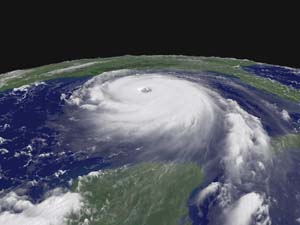 Birthplace of hurricanes heating up say NOAA scientists Birthplace of hurricanes heating up say NOAA scientists NOAA May 3, 2006 The region of the tropical Atlantic where many hurricanes originate has warmed by several tenths of a degree Celsius over the 20th century, and new climate model simulations suggest that human activity, such as increasing […]
Birthplace of hurricanes heating up say NOAA scientists Birthplace of hurricanes heating up say NOAA scientists NOAA May 3, 2006 The region of the tropical Atlantic where many hurricanes originate has warmed by several tenths of a degree Celsius over the 20th century, and new climate model simulations suggest that human activity, such as increasing […]
Global warming to be more moderate than some expect
 Climate change to be more moderate than some expect Global warming to be more moderate than some expect Rhett A. Butler, mongabay.com April 19, 2006 A new study published in Nature says that climate change will be more moderate than some recent projections. Nevertheless, says lead author Gabriele C. Hegerl of Duke University, we can […]
Climate change to be more moderate than some expect Global warming to be more moderate than some expect Rhett A. Butler, mongabay.com April 19, 2006 A new study published in Nature says that climate change will be more moderate than some recent projections. Nevertheless, says lead author Gabriele C. Hegerl of Duke University, we can […]
Plants may absorb less carbon dioxide than initially believed
 Plants may absorb less carbon dioxide than initally believed Plants may absorb less carbon dioxide than initally believed University of Minnesota April 12, 2006 The world’s land plants will probably not be able to absorb as great a share of the rising atmospheric carbon dioxide as some models have predicted, according to a new study […]
Plants may absorb less carbon dioxide than initally believed Plants may absorb less carbon dioxide than initally believed University of Minnesota April 12, 2006 The world’s land plants will probably not be able to absorb as great a share of the rising atmospheric carbon dioxide as some models have predicted, according to a new study […]
Pollution from smog linked to climate warming in the Arctic
 Smog linked to climate warming in Arctic Smog linked to climate warming in Arctic NASA Goddard Institute for Space Studies March 15, 2006 NASA scientists have found that a major form of global air pollution involved in summertime “smog” has also played a significant role in warming the Arctic. In a global assessment of the […]
Smog linked to climate warming in Arctic Smog linked to climate warming in Arctic NASA Goddard Institute for Space Studies March 15, 2006 NASA scientists have found that a major form of global air pollution involved in summertime “smog” has also played a significant role in warming the Arctic. In a global assessment of the […]
Tree plantations for carbon sequestration may cause environmental problems
Tree plantations for carbon sequestration may cause environmental problems Tree plantations for carbon sequestration may cause environmental problems Duke University news release December 22, 2005 Future water-using tree plantations established to absorb carbon dioxide will likely be located in relatively dry areas, says report’s first author Growing tree plantations to remove carbon dioxide from the […]
Changes in forest cover could affect climate as much as greenhouse gases in some areas
 Changes in forest cover could affect climate as much as greenhouse gases in some areas Changes in forest cover could affect climate as much as greenhouse gases in some areas Rhett A. Butler, mongabay.com December 9, 2005 Deforestation, the growth of forests, and other changes in land cover could produce local temperature changes comparable to […]
Changes in forest cover could affect climate as much as greenhouse gases in some areas Changes in forest cover could affect climate as much as greenhouse gases in some areas Rhett A. Butler, mongabay.com December 9, 2005 Deforestation, the growth of forests, and other changes in land cover could produce local temperature changes comparable to […]
Future forests may absorb more carbon dioxide than current forests
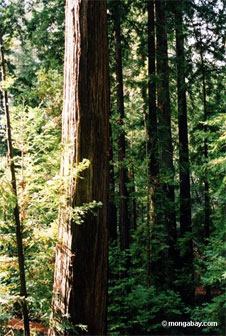 Future forests may absorb more carbon dioxide than those of today Future forests may absorb more carbon dioxide than current forests Rhett A. Butler, mongabay.com December 8, 2005 Forests of the future may grow faster and absorb more carbon in a carbon dioxide enriched environment according to a new study by researchers at the Department […]
Future forests may absorb more carbon dioxide than those of today Future forests may absorb more carbon dioxide than current forests Rhett A. Butler, mongabay.com December 8, 2005 Forests of the future may grow faster and absorb more carbon in a carbon dioxide enriched environment according to a new study by researchers at the Department […]
Soil moisture, root depth influence climate models
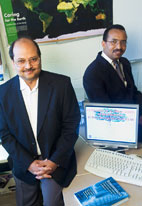 Soil moisture, root depth influence climate models Soil moisture, root depth influence climate models University of Illinois at Urbana-Champaign release December 5, 2005 By soaking up moisture with their roots and later releasing it from their leaves, plants play an active role in regulating the climate. In fact, in vegetated ecosystems, plants are the primary […]
Soil moisture, root depth influence climate models Soil moisture, root depth influence climate models University of Illinois at Urbana-Champaign release December 5, 2005 By soaking up moisture with their roots and later releasing it from their leaves, plants play an active role in regulating the climate. In fact, in vegetated ecosystems, plants are the primary […]
Temperate forests may worsen global warming, tropical forests fight higher temperatures
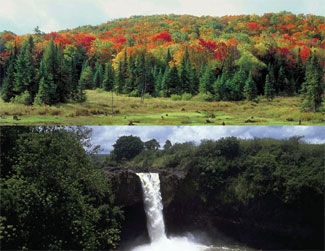 Temperate forests may worsen global warming, tropical forests fight higher temperatures Temperate forests may worsen global warming, tropical forests fight higher temperatures Rhett A. Butler, mongabay.com December 5, 2005 At this week’s climate conference in Montreal there have been a number of proposals to plant trees for the purpose of absorbing carbon emissions and helping […]
Temperate forests may worsen global warming, tropical forests fight higher temperatures Temperate forests may worsen global warming, tropical forests fight higher temperatures Rhett A. Butler, mongabay.com December 5, 2005 At this week’s climate conference in Montreal there have been a number of proposals to plant trees for the purpose of absorbing carbon emissions and helping […]
Atmospheric carbon dioxide levels closely correlated with global temperatures
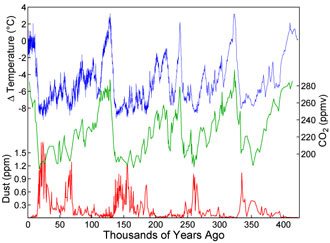 Atmospheric carbon dioxide levels closely correlated with global temperatures Atmospheric carbon dioxide levels closely correlated with global temperatures mongabay.com November 28, 2005 MONGABAY RESEARCH SUMMARY: Studying ice cores from Antarctica, scientists of the Alfred Wegener Institute for Polar and Marine Research extended the record of historic concentrations of carbon dioxide, methane and nitrous oxide in […]
Atmospheric carbon dioxide levels closely correlated with global temperatures Atmospheric carbon dioxide levels closely correlated with global temperatures mongabay.com November 28, 2005 MONGABAY RESEARCH SUMMARY: Studying ice cores from Antarctica, scientists of the Alfred Wegener Institute for Polar and Marine Research extended the record of historic concentrations of carbon dioxide, methane and nitrous oxide in […]
Average temperatures climbing faster than thought in North America
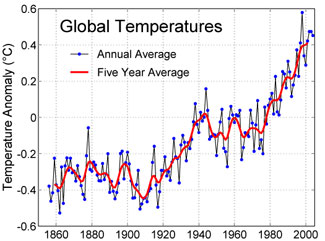 Average temperatures climbing faster than thought in North America Average temperatures climbing faster than thought in North America Oregon State University news release November 27, 2005 MONGABAY SUMMARY: Tree rings and borehole drill samples have added to the evidence that average temperatures in North America have risen steadily in the past 150 years according to […]
Average temperatures climbing faster than thought in North America Average temperatures climbing faster than thought in North America Oregon State University news release November 27, 2005 MONGABAY SUMMARY: Tree rings and borehole drill samples have added to the evidence that average temperatures in North America have risen steadily in the past 150 years according to […]
Ocean levels rising twice as fast
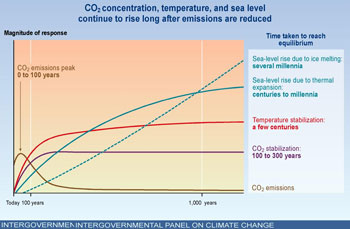 Ocean levels rising twice as fast Ocean levels rising twice as fast Rutgers, the State University of New Jersey, news release November 25, 2005 Global ocean levels are rising twice as fast today as they were 150 years ago according to research presented in Science by a team of researchers. Using core samples of sediments […]
Ocean levels rising twice as fast Ocean levels rising twice as fast Rutgers, the State University of New Jersey, news release November 25, 2005 Global ocean levels are rising twice as fast today as they were 150 years ago according to research presented in Science by a team of researchers. Using core samples of sediments […]
14.5 degree increase in Earth’s temperature possible finds new model
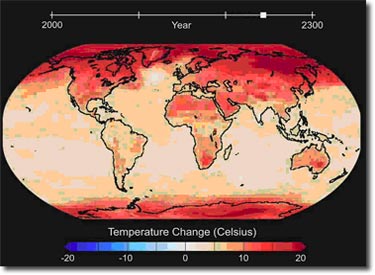 14.5 degree increase in Earth’s global temperature possible finds new model 14.5 degree increase in Earth’s temperature possible finds new model Lawrence Livermore National Laboratory news release November 2, 2005 LIVERMORE, Calif. — If humans continue to use fossil fuels in a business-as-usual manner for the next few centuries, the polar ice caps will be […]
14.5 degree increase in Earth’s global temperature possible finds new model 14.5 degree increase in Earth’s temperature possible finds new model Lawrence Livermore National Laboratory news release November 2, 2005 LIVERMORE, Calif. — If humans continue to use fossil fuels in a business-as-usual manner for the next few centuries, the polar ice caps will be […]
Africa Heats Up — climate change threatens future of the continent
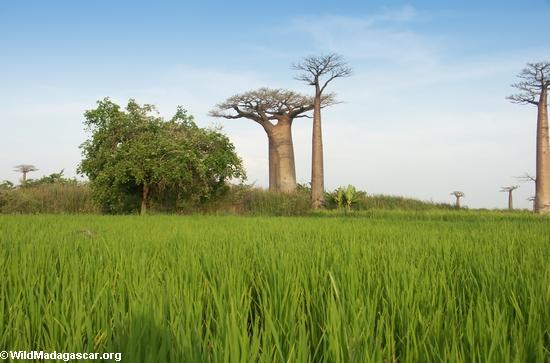 Africa Heats Up — climate change threatens future of the continent Africa Heats Up — climate change threatens future of the continent Tina Butler, mongabay.com October 11, 2005 Baobabs growing among rice fields in Madagascar. Global warming has become an increasingly pervasive topic of discussion and concern for the scientific community. From fears over oceanic […]
Africa Heats Up — climate change threatens future of the continent Africa Heats Up — climate change threatens future of the continent Tina Butler, mongabay.com October 11, 2005 Baobabs growing among rice fields in Madagascar. Global warming has become an increasingly pervasive topic of discussion and concern for the scientific community. From fears over oceanic […]
Climate changing faster than ever — sea levels may rise 1 foot by 2100
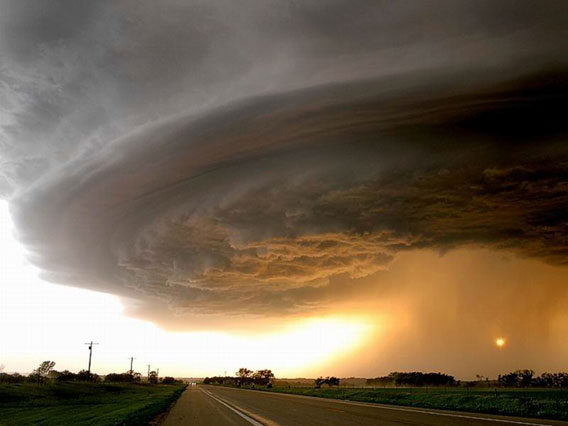 Climate changing faster than ever — sea levels may rise 30 cm by 2100 Climate changing faster than ever — sea levels may rise 1 foot by 2100 Max Planck Institute for Meteorology release October 1, 2005 Hurricane Katrina clouds. Courtesy of NOAA. According to the calculations of scientists at the Max Planck Institute for […]
Climate changing faster than ever — sea levels may rise 30 cm by 2100 Climate changing faster than ever — sea levels may rise 1 foot by 2100 Max Planck Institute for Meteorology release October 1, 2005 Hurricane Katrina clouds. Courtesy of NOAA. According to the calculations of scientists at the Max Planck Institute for […]
Rising carbon dioxide levels could devastate marine food chain
 Rising carbon dioxide levels could devastate marine food chain Rising carbon dioxide levels could devastate marine food chain Rhett A. Butler, mongabay.com September 29, 2005 Rising carbon dioxide in the atmosphere could make oceans too acidic for marine organisms to produce protective shells according to research published in the journal Nature. Such a development could […]
Rising carbon dioxide levels could devastate marine food chain Rising carbon dioxide levels could devastate marine food chain Rhett A. Butler, mongabay.com September 29, 2005 Rising carbon dioxide in the atmosphere could make oceans too acidic for marine organisms to produce protective shells according to research published in the journal Nature. Such a development could […]
Hurricane Katrina damage just a dose of what’s to come
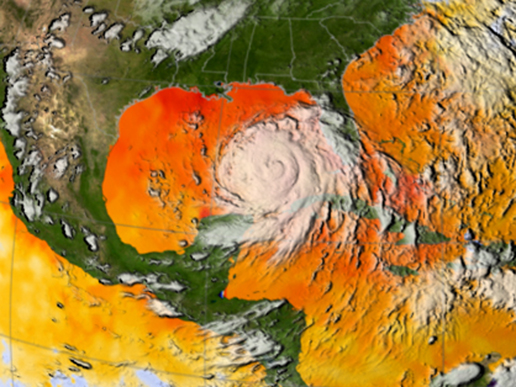 Hurricane Katrina damage just a dose of what’s to come Hurricane Katrina damage just a dose of what’s to come Ken Caldeira Carnegie Institution release September 21, 2005 Warm ocean waters fuel hurricanes, and there was plenty of warm water for Katrina to build up strength once she crossed over Florida and moved into the […]
Hurricane Katrina damage just a dose of what’s to come Hurricane Katrina damage just a dose of what’s to come Ken Caldeira Carnegie Institution release September 21, 2005 Warm ocean waters fuel hurricanes, and there was plenty of warm water for Katrina to build up strength once she crossed over Florida and moved into the […]
Feeds: news | india | latam | brasil | indonesia
 This is the wrap-up article for our four-part series “The Congo Basin peatlands.” Read Part One, Part Two, Part Three and Part Four. In the first half of December, Mongabay published a four-part series on the peatlands of the Congo Basin. Only in 2017 did a team of Congolese and British scientists discover that a […]
This is the wrap-up article for our four-part series “The Congo Basin peatlands.” Read Part One, Part Two, Part Three and Part Four. In the first half of December, Mongabay published a four-part series on the peatlands of the Congo Basin. Only in 2017 did a team of Congolese and British scientists discover that a […] Ongoing burning of fossil fuels could flip which portion of the tropics receive more rainfall: the southern hemisphere or the northern. Currently, the northern hemisphere tropics is the wetter of the two, but why this is has long baffled scientists. Now, new research in Nature Geoscience has discovered that rainfall in the tropics is in […]
Ongoing burning of fossil fuels could flip which portion of the tropics receive more rainfall: the southern hemisphere or the northern. Currently, the northern hemisphere tropics is the wetter of the two, but why this is has long baffled scientists. Now, new research in Nature Geoscience has discovered that rainfall in the tropics is in […] New research highlights the world’s most (and least) vulnerable ecosystems to climate change. The study, published in Nature Climate Change, is the first to combine anticipated climatic impacts with how degraded the ecosystem is due to human impacts, creating what scientists hope is a more accurate list of vulnerable regions. The most endangered regions include […]
New research highlights the world’s most (and least) vulnerable ecosystems to climate change. The study, published in Nature Climate Change, is the first to combine anticipated climatic impacts with how degraded the ecosystem is due to human impacts, creating what scientists hope is a more accurate list of vulnerable regions. The most endangered regions include […] Cooling waters in the tropical Pacific Ocean appear to be a major factor in dampening global warming in recent years, scientists said on Wednesday. Their work is a big step forward in helping to solve the greatest puzzle of current climate change research – why global average surface temperatures, while still on an upward trend, […]
Cooling waters in the tropical Pacific Ocean appear to be a major factor in dampening global warming in recent years, scientists said on Wednesday. Their work is a big step forward in helping to solve the greatest puzzle of current climate change research – why global average surface temperatures, while still on an upward trend, […] As if ocean acidification and climate change weren’t troubling enough (both of which are caused by still-rising carbon emissions), new research published in Nature finds that ocean acidification will eventually exacerbate global warming, further raising the Earth’s temperature. Scientists have long known that tiny marine organisms—phytoplankton—are central to cooling the world by emitting an organic […]
As if ocean acidification and climate change weren’t troubling enough (both of which are caused by still-rising carbon emissions), new research published in Nature finds that ocean acidification will eventually exacerbate global warming, further raising the Earth’s temperature. Scientists have long known that tiny marine organisms—phytoplankton—are central to cooling the world by emitting an organic […] According to a new review of 27 climate models, scientists say the global climate is likely to experience a warmth as great as any in the last 65 million years, only much, much faster. According to the study published today in Science, the Earth’s land temperature will rise by 4 degrees Celsius (7.2 degrees Fahrenheit) […]
According to a new review of 27 climate models, scientists say the global climate is likely to experience a warmth as great as any in the last 65 million years, only much, much faster. According to the study published today in Science, the Earth’s land temperature will rise by 4 degrees Celsius (7.2 degrees Fahrenheit) […] Warmer ocean temperatures will increase the frequency and intensity of tropical cyclones, typhoons and hurricanes in “most locations” this century, concludes a new study based on simulations using six global climate models. The research, published by MIT’s Kerry Emanuel in Proceedings of the National Academy of Sciences, projects the largest increase in cyclones in the […]
Warmer ocean temperatures will increase the frequency and intensity of tropical cyclones, typhoons and hurricanes in “most locations” this century, concludes a new study based on simulations using six global climate models. The research, published by MIT’s Kerry Emanuel in Proceedings of the National Academy of Sciences, projects the largest increase in cyclones in the […] The Amazon rainforest is facing a higher risk of fires this dry season, warns a fire prediction system developed by researchers using NASA and NOAA data. The model is based on an observed correlation between sea surface temperatures in the tropical Atlantic and rainfall in the Amazon. High Atlantic temperatures tend to suppress precipitation in […]
The Amazon rainforest is facing a higher risk of fires this dry season, warns a fire prediction system developed by researchers using NASA and NOAA data. The model is based on an observed correlation between sea surface temperatures in the tropical Atlantic and rainfall in the Amazon. High Atlantic temperatures tend to suppress precipitation in […] Arctic treeline site near Cherskiy in northeastern Siberia. A new study finds that the Arctic treeline will continue expanding northward as the region warms. Photo courtesy of Woods Hole Research Center. Warming about twice as fast as the rest of the world, the Arctic is already undergoing massive upheavals from climate change: summer sea ice […]
Arctic treeline site near Cherskiy in northeastern Siberia. A new study finds that the Arctic treeline will continue expanding northward as the region warms. Photo courtesy of Woods Hole Research Center. Warming about twice as fast as the rest of the world, the Arctic is already undergoing massive upheavals from climate change: summer sea ice […] Total ocean heat content shown in violet, while grey shows 0 to 300 meters and blue shows 300 to 700 meters. Vertical colored bars show volcanic eruptions that cooled the Earth for a short period and the 1997-98 El Nino event. Chart from Balmaseda et al. Critics of climate change often claim that warming has […]
Total ocean heat content shown in violet, while grey shows 0 to 300 meters and blue shows 300 to 700 meters. Vertical colored bars show volcanic eruptions that cooled the Earth for a short period and the 1997-98 El Nino event. Chart from Balmaseda et al. Critics of climate change often claim that warming has […] Tropical forests may be less sensitive to global warming than previously thought, argues a new study published in Nature Geoscience. The research is based on computer simulations using 22 climate models for tropical forests in Africa, Asia, and the Americas. It projects loss of forest biomass as a result of climate change only in the […]
Tropical forests may be less sensitive to global warming than previously thought, argues a new study published in Nature Geoscience. The research is based on computer simulations using 22 climate models for tropical forests in Africa, Asia, and the Americas. It projects loss of forest biomass as a result of climate change only in the […] Average global temperatures are now higher than any point during the past 4,000 years despite being in the midst of what should be a cooling interval, reports a new study published in the journal Science. The research — based on ice cores and other data from 73 sites sites around the world — constructs a […]
Average global temperatures are now higher than any point during the past 4,000 years despite being in the midst of what should be a cooling interval, reports a new study published in the journal Science. The research — based on ice cores and other data from 73 sites sites around the world — constructs a […] Frost crystals at the entrance of Ledyanaya Lenskaya Cave. Photo by: Vladimir V. Alexioglo. While nations around the world have committed to keeping temperatures from rising 2 degrees Celsius (3.6 degrees Fahrenheit) above the pre-industrial era, new research published in Science suggests that the global climate could hit a tipping point at just 1.5 degrees […]
Frost crystals at the entrance of Ledyanaya Lenskaya Cave. Photo by: Vladimir V. Alexioglo. While nations around the world have committed to keeping temperatures from rising 2 degrees Celsius (3.6 degrees Fahrenheit) above the pre-industrial era, new research published in Science suggests that the global climate could hit a tipping point at just 1.5 degrees […] Tropical rainforest. Faster plant growth due to higher concentrations of carbon dioxide may offset increased emissions from forest die-off in the tropics, asserts a new study based on climate modeling. The research, published this week in the journal Nature, looks at how year-to-year variations in CO2 levels effect the long-term rate of carbon storage in […]
Tropical rainforest. Faster plant growth due to higher concentrations of carbon dioxide may offset increased emissions from forest die-off in the tropics, asserts a new study based on climate modeling. The research, published this week in the journal Nature, looks at how year-to-year variations in CO2 levels effect the long-term rate of carbon storage in […] Dim outlook for Borneo’s rainforests? Already wracked by extensive deforestation and forest degradation, the future looks grim for Borneo’s tropical rainforests, reports a new study published in the Journal of Geophysical Research-Biogeosciences. Combining historical records with field observations and global climate models Tomo’omi Kumagai and Amilcare Porporato of Duke University find that an sharp increase […]
Dim outlook for Borneo’s rainforests? Already wracked by extensive deforestation and forest degradation, the future looks grim for Borneo’s tropical rainforests, reports a new study published in the Journal of Geophysical Research-Biogeosciences. Combining historical records with field observations and global climate models Tomo’omi Kumagai and Amilcare Porporato of Duke University find that an sharp increase […] Map shows the level of drought and dryness across the US in July 2011. Map courtesy US Department of Agriculture. Click to enlarge. Climate change is here and its increasing the chances for crazy weather, according to scientists. A prestigious group of climatologists have released a landmark report that makes the dramatic point that climate […]
Map shows the level of drought and dryness across the US in July 2011. Map courtesy US Department of Agriculture. Click to enlarge. Climate change is here and its increasing the chances for crazy weather, according to scientists. A prestigious group of climatologists have released a landmark report that makes the dramatic point that climate […] The High Park Fire in Colorado started on June 9th from a lightening strike and quickly expanded. This image is from June 10th, taken by Moderate Resolution Imaging Spectroradiometer (MODIS) on NASA’s Aqua satellite. Image courtesy of NASA. A massive wildlife in Colorado still burns after it has killed one person and damaged or destroyed […]
The High Park Fire in Colorado started on June 9th from a lightening strike and quickly expanded. This image is from June 10th, taken by Moderate Resolution Imaging Spectroradiometer (MODIS) on NASA’s Aqua satellite. Image courtesy of NASA. A massive wildlife in Colorado still burns after it has killed one person and damaged or destroyed […] NASA map shows temperature anomalies from March 13-19, 2012 as compared to the same eight day period during the past 12 years based on data captured by the Moderate Resolution Imaging Spectroradiometer (MODIS) instrument on NASA’s Terra satellite. Click to enlarge. As North America recovers from what noted meteorologist Jeff Masters has called “the most […]
NASA map shows temperature anomalies from March 13-19, 2012 as compared to the same eight day period during the past 12 years based on data captured by the Moderate Resolution Imaging Spectroradiometer (MODIS) instrument on NASA’s Terra satellite. Click to enlarge. As North America recovers from what noted meteorologist Jeff Masters has called “the most […] The Amazon rainforest meets cleared area for cattle pasture. A radical meteorology theory argues that loss of forest, both in temperate and tropical regions, will lead to less precipitation over land. Photo by: Rhett A. Butler. New, radical theories in science often take time to be accepted, especially those that directly challenge longstanding ideas, contemporary […]
The Amazon rainforest meets cleared area for cattle pasture. A radical meteorology theory argues that loss of forest, both in temperate and tropical regions, will lead to less precipitation over land. Photo by: Rhett A. Butler. New, radical theories in science often take time to be accepted, especially those that directly challenge longstanding ideas, contemporary […] New research announced at the 17th UN Climate Summit in Durban, South Africa finds that under current pledges for reducing emissions the global temperature will rise by 3.5 degrees Celsius (6.3 degrees Fahrenheit) from historic levels, reports the AFP. This is nearly double world nations’ pledge to keep warming below 2 degrees Celsius (3.6 degrees […]
New research announced at the 17th UN Climate Summit in Durban, South Africa finds that under current pledges for reducing emissions the global temperature will rise by 3.5 degrees Celsius (6.3 degrees Fahrenheit) from historic levels, reports the AFP. This is nearly double world nations’ pledge to keep warming below 2 degrees Celsius (3.6 degrees […] A new methodology to tease out how much current climate change is linked to human activities has added to the consensus that behind global warming is us. The study, published in Nature Geoscience found that humans have caused at least three-quarters (74 percent) of current warming, while also determining that warming has actually been slowed […]
A new methodology to tease out how much current climate change is linked to human activities has added to the consensus that behind global warming is us. The study, published in Nature Geoscience found that humans have caused at least three-quarters (74 percent) of current warming, while also determining that warming has actually been slowed […] Deforestation and climate change will likely decimate much of the Amazon rainforest, says a new study by Brazil’s National Institute for Space Research (INPE) and the UK’s Met Office Hadley Centre. Climate change and widespread deforestation is expected to cause warmer and drier conditions overall, reducing the resistance of the rainforest ecosystem to natural and […]
Deforestation and climate change will likely decimate much of the Amazon rainforest, says a new study by Brazil’s National Institute for Space Research (INPE) and the UK’s Met Office Hadley Centre. Climate change and widespread deforestation is expected to cause warmer and drier conditions overall, reducing the resistance of the rainforest ecosystem to natural and […] The short answer to the question of whether or not on-going floods in the US Midwest and fires in Texas are linked to a warming Earth is: maybe. The long answer, however, is that while it is difficult—some argue impossible—for scientists to link a single extreme weather event to climate change, climate models have long […]
The short answer to the question of whether or not on-going floods in the US Midwest and fires in Texas are linked to a warming Earth is: maybe. The long answer, however, is that while it is difficult—some argue impossible—for scientists to link a single extreme weather event to climate change, climate models have long […] In Shakespeare’s play Macbeth the forest of Birnam Wood fulfills a seemingly impossible prophecy by moving to surround the murderous king (the marching trees are helped, of course, by an army of axe-wielding camouflaged Scots). The Arctic tundra may soon feel much like the doomed Macbeth with an army of trees (and invading species) closing […]
In Shakespeare’s play Macbeth the forest of Birnam Wood fulfills a seemingly impossible prophecy by moving to surround the murderous king (the marching trees are helped, of course, by an army of axe-wielding camouflaged Scots). The Arctic tundra may soon feel much like the doomed Macbeth with an army of trees (and invading species) closing […] DEGRAD, INPE’s system for measuring forest degradation in the Amazon rainforest. Perhaps unsurprisingly, the world’s best deforestation tracking system is found in the country with the most rainforest: Brazil. Following international outcry over immense forest loss in the 1980s, Brazil in the 1990s set in motion a plan to develop a satellite-based system for tracking […]
DEGRAD, INPE’s system for measuring forest degradation in the Amazon rainforest. Perhaps unsurprisingly, the world’s best deforestation tracking system is found in the country with the most rainforest: Brazil. Following international outcry over immense forest loss in the 1980s, Brazil in the 1990s set in motion a plan to develop a satellite-based system for tracking […] A thousand square kilometers of the Alaskan tundra burned in September 2007, a single fire that doubled the area burned in the region since 1950. However, a new study in the Journal of Geophysical Research finds that the fire was even more unprecedented than imagined: sediment cores found that it was the most destructive fire […]
A thousand square kilometers of the Alaskan tundra burned in September 2007, a single fire that doubled the area burned in the region since 1950. However, a new study in the Journal of Geophysical Research finds that the fire was even more unprecedented than imagined: sediment cores found that it was the most destructive fire […] Have $200,000 to spend on a seat into space? You may want to re-think the expenditure given a new study in Geophysical Research Letters that shows space tourism will likely aggravate global climate change. Using sophisticated modeling, the researchers found that the biggest impact of a rise in space tourism on global temperatures won’t be […]
Have $200,000 to spend on a seat into space? You may want to re-think the expenditure given a new study in Geophysical Research Letters that shows space tourism will likely aggravate global climate change. Using sophisticated modeling, the researchers found that the biggest impact of a rise in space tourism on global temperatures won’t be […] The world’s tropical forests may suffer large-scale degradation and deforestation by the end of the century if current logging and climate change trends persist, finds a new analysis published in Conservation Letters. Researchers led by Greg Asner at the Carnegie Institution’s Department of Global Ecology at Stanford University projected future vegetation change based on integrating […]
The world’s tropical forests may suffer large-scale degradation and deforestation by the end of the century if current logging and climate change trends persist, finds a new analysis published in Conservation Letters. Researchers led by Greg Asner at the Carnegie Institution’s Department of Global Ecology at Stanford University projected future vegetation change based on integrating […] Redwoods in Huddart County Park, San Mateo County, California. Photo by Rhett Butler. A surprising new study finds that during the past century the frequency of fog along California’s coast has declined by approximately three hours a day. Published in the Proceedings of the National Academy of Sciences the researchers are concerned that this decrease […]
Redwoods in Huddart County Park, San Mateo County, California. Photo by Rhett Butler. A surprising new study finds that during the past century the frequency of fog along California’s coast has declined by approximately three hours a day. Published in the Proceedings of the National Academy of Sciences the researchers are concerned that this decrease […] World Wetland Day 2010 brings with it new research on America’s prairie wetlands and bad news for the country’s waterfowl. A new study in BioScience finds that America’s prairies are greatly susceptible to climate change: a warmer and drier prairie will desiccate wetlands needed by ducks and other waterfowl for food, shelter, and breeding. “Unfortunately, […]
World Wetland Day 2010 brings with it new research on America’s prairie wetlands and bad news for the country’s waterfowl. A new study in BioScience finds that America’s prairies are greatly susceptible to climate change: a warmer and drier prairie will desiccate wetlands needed by ducks and other waterfowl for food, shelter, and breeding. “Unfortunately, […] Allowing the climate to rise by just two degrees Celsius—the target most industrialized nations are currently discussing in Copenhagen—may still lead to a catastrophic sea level rise of six to nine meters, according to a new study in Nature. While this rise in sea levels would take hundreds of years to fully occur, inaction this […]
Allowing the climate to rise by just two degrees Celsius—the target most industrialized nations are currently discussing in Copenhagen—may still lead to a catastrophic sea level rise of six to nine meters, according to a new study in Nature. While this rise in sea levels would take hundreds of years to fully occur, inaction this […] There have been many warnings by policymakers that rising temperatures in Africa could lead to civil conflict, however a new study in Proceedings of the National Academy of Sciences is the first to uncover empirical evidence for these warnings and quantify them. The results—that higher temperatures increased the likelihood of civil war in sub-Saharan Africa […]
There have been many warnings by policymakers that rising temperatures in Africa could lead to civil conflict, however a new study in Proceedings of the National Academy of Sciences is the first to uncover empirical evidence for these warnings and quantify them. The results—that higher temperatures increased the likelihood of civil war in sub-Saharan Africa […] A new study—the first of its kind—has completed an annual accounting of the oceans’ intake of carbon over the past 250 years, and the news is troubling. According to the study, published in Nature, the oceans’ ability to sequester carbon is struggling to keep-up with mankind’s ever-growing emissions. Since 2000 researchers estimate that while every […]
A new study—the first of its kind—has completed an annual accounting of the oceans’ intake of carbon over the past 250 years, and the news is troubling. According to the study, published in Nature, the oceans’ ability to sequester carbon is struggling to keep-up with mankind’s ever-growing emissions. Since 2000 researchers estimate that while every […] The most recent survey among the ice fields atop Mount Kilimanjaro found that the ice atop Africa’s most famous mountain could be gone in twenty years—and maybe even sooner. Published in the Proceedings of the National Academy of Science the study was conducted by a team of researchers who first measured the glaciers in 2000. […]
The most recent survey among the ice fields atop Mount Kilimanjaro found that the ice atop Africa’s most famous mountain could be gone in twenty years—and maybe even sooner. Published in the Proceedings of the National Academy of Science the study was conducted by a team of researchers who first measured the glaciers in 2000. […] Fifth in a series of interviews with participants at the 2009 Association of Tropical Biology and Conservation (ATBC) conference. One of the most pressing issues in the conservation today is how climate change will affect tropical ecosystems. The short answer is: we don’t know. Because of this, more and more scientists are looking at the […]
Fifth in a series of interviews with participants at the 2009 Association of Tropical Biology and Conservation (ATBC) conference. One of the most pressing issues in the conservation today is how climate change will affect tropical ecosystems. The short answer is: we don’t know. Because of this, more and more scientists are looking at the […] According to a new study published in Science the Arctic should be cooling, and in fact has been cooling for millennia. But beginning in 1900 Arctic summer temperatures began rising until the mid-1990s when the cooling trend was completely overcome. Researchers fear that this sudden up-tick in temperatures could lead to rising sea levels threatening […]
According to a new study published in Science the Arctic should be cooling, and in fact has been cooling for millennia. But beginning in 1900 Arctic summer temperatures began rising until the mid-1990s when the cooling trend was completely overcome. Researchers fear that this sudden up-tick in temperatures could lead to rising sea levels threatening […] Brazil’s setting aside of more than 500,000 square miles (1.25 million square kilometers) of rainforest in protected areas over the past decade may effectively buffer the Amazon from the effects of climate change, preventing Earth’s largest rainforest from tipping towards arid savanna in the face of ongoing deforestation and rising temperatures, argues a new paper […]
Brazil’s setting aside of more than 500,000 square miles (1.25 million square kilometers) of rainforest in protected areas over the past decade may effectively buffer the Amazon from the effects of climate change, preventing Earth’s largest rainforest from tipping towards arid savanna in the face of ongoing deforestation and rising temperatures, argues a new paper […] If nations worked together to produce large cuts in greenhouse gases, the world would be saved from global warming’s worst-case-scenarios, according to a new study from the National Center for Atmospheric Research (NCAR). The study found that, although temperatures are set to rise this century, cutting greenhouse gases by 70 percent the globe could avoid […]
If nations worked together to produce large cuts in greenhouse gases, the world would be saved from global warming’s worst-case-scenarios, according to a new study from the National Center for Atmospheric Research (NCAR). The study found that, although temperatures are set to rise this century, cutting greenhouse gases by 70 percent the globe could avoid […] Largely ignored by scientific community, new theory could change how future generations view forests Two Russian scientists, Victor Gorshkov and Anastassia Makarieva of the St. Petersburg Nuclear Physics, have published a revolutionary theory that turns modern meteorology on its head, positing that forests—and their capacity for condensation—are actually the main driver of winds rather than […]
Largely ignored by scientific community, new theory could change how future generations view forests Two Russian scientists, Victor Gorshkov and Anastassia Makarieva of the St. Petersburg Nuclear Physics, have published a revolutionary theory that turns modern meteorology on its head, positing that forests—and their capacity for condensation—are actually the main driver of winds rather than […] A new analysis shows that the heavily-deforested Amazonian region of Mato Grosso is particularly susceptible to ‘savannization’ due to repeated burning that has likely depleted the region’s soils of precious nutrients. According to the study, published in the Journal of Geophyscial Research, savannization, or the process of tropical ecosystems shifting to savannah, is likely in […]
A new analysis shows that the heavily-deforested Amazonian region of Mato Grosso is particularly susceptible to ‘savannization’ due to repeated burning that has likely depleted the region’s soils of precious nutrients. According to the study, published in the Journal of Geophyscial Research, savannization, or the process of tropical ecosystems shifting to savannah, is likely in […]
 Changes in rainfall resulting from climate change may drive the parts of Amazon rainforest toward seasonal forests rather than savanna, argue researchers writing in the Proceedings of the National Academy of Sciences Comparing climate simulations by 19 global climate models with observations from the 20th century, Yadvinder Malhi and colleagues found that most projections underestimate […]
Changes in rainfall resulting from climate change may drive the parts of Amazon rainforest toward seasonal forests rather than savanna, argue researchers writing in the Proceedings of the National Academy of Sciences Comparing climate simulations by 19 global climate models with observations from the 20th century, Yadvinder Malhi and colleagues found that most projections underestimate […]
 Sea levels may rise 2-3 times faster than expected Sea levels may rise 2-3 times faster than expected mongabay.com August 31, 2008 Global sea level rise this century from a melting Greenland ice sheet may be two to three times greater than current estimates warn researchers writing in journal Nature Geoscience. Analyzing geologic data and […]
Sea levels may rise 2-3 times faster than expected Sea levels may rise 2-3 times faster than expected mongabay.com August 31, 2008 Global sea level rise this century from a melting Greenland ice sheet may be two to three times greater than current estimates warn researchers writing in journal Nature Geoscience. Analyzing geologic data and […] Global warming increases “extreme” rain storms Global warming increases “extreme” rain storms mongabay.com August 7, 2008 Global warming is increasing the incidence of heavy rainfall at a rate greater than predicted by current climate models have predicted, reports a new study published in the journal Science. The findings suggest that storm damage from precipitation could […]
Global warming increases “extreme” rain storms Global warming increases “extreme” rain storms mongabay.com August 7, 2008 Global warming is increasing the incidence of heavy rainfall at a rate greater than predicted by current climate models have predicted, reports a new study published in the journal Science. The findings suggest that storm damage from precipitation could […] Past greenhouse warming events offer clues on future climate change Past greenhouse warming events offer clues on future climate change University of California – Santa Cruz February 16, 2008 If carbon dioxide emissions from the burning of fossil fuels continue on a “business-as-usual” trajectory, humans will have added about 5 trillion metric tons of carbon […]
Past greenhouse warming events offer clues on future climate change Past greenhouse warming events offer clues on future climate change University of California – Santa Cruz February 16, 2008 If carbon dioxide emissions from the burning of fossil fuels continue on a “business-as-usual” trajectory, humans will have added about 5 trillion metric tons of carbon […] North Atlantic warming not due to climate change North Atlantic warming not due to climate change Rhett A. Butler, mongabay.com January 3, 2008 While overall temperature in the North Atlantic Ocean has risen over the past fifty years, it has not been consistent across all areas with subpolar regions cooling as subtropical and tropical waters […]
North Atlantic warming not due to climate change North Atlantic warming not due to climate change Rhett A. Butler, mongabay.com January 3, 2008 While overall temperature in the North Atlantic Ocean has risen over the past fifty years, it has not been consistent across all areas with subpolar regions cooling as subtropical and tropical waters […] Rising CO2 levels tied to increasing human mortality Rising CO2 levels tied to increasing human mortality mongabay.com January 3, 2008 Rising carbon dioxide levels have been tied to increases in human mortality, reports a study to be published in Geophysical Research Letters. Using a complex computer model of the atmosphere, Stanford University professor Mark Jacobson […]
Rising CO2 levels tied to increasing human mortality Rising CO2 levels tied to increasing human mortality mongabay.com January 3, 2008 Rising carbon dioxide levels have been tied to increases in human mortality, reports a study to be published in Geophysical Research Letters. Using a complex computer model of the atmosphere, Stanford University professor Mark Jacobson […] Melting of Greenland ice sheet could alter warming trend Melting of Greenland ice sheet could alter global warming trend mongabay.com December 6, 2007 Public sector has growing role in China’s forest management according to a new paper published in the journal Science A massive release from freshwater from the glacial Lake Agassiz 8,200 years ago […]
Melting of Greenland ice sheet could alter warming trend Melting of Greenland ice sheet could alter global warming trend mongabay.com December 6, 2007 Public sector has growing role in China’s forest management according to a new paper published in the journal Science A massive release from freshwater from the glacial Lake Agassiz 8,200 years ago […] Global warming to boost severe thunderstorms in NYC, Atlanta Global warming to boost severe thunderstorms in NYC, Atlanta mongabay.com December 3, 2007 Global warming could lead to weather conditions that spawn severe thunderstorms in the United States, according to research appearing in the early edition of the journal Proceedings of the National Academy of Sciences. […]
Global warming to boost severe thunderstorms in NYC, Atlanta Global warming to boost severe thunderstorms in NYC, Atlanta mongabay.com December 3, 2007 Global warming could lead to weather conditions that spawn severe thunderstorms in the United States, according to research appearing in the early edition of the journal Proceedings of the National Academy of Sciences. […] Climate risks to global agriculture are underestimated Climate risks to global agriculture are underestimated mongabay.com December 3, 2007 Vulnerability of global agricultural to climate change may be underestimated by experts, warns a trio of papers published in week’s issue of the Proceedings of the National Academy of Sciences (PNAS). The research says that “progressive changes […]
Climate risks to global agriculture are underestimated Climate risks to global agriculture are underestimated mongabay.com December 3, 2007 Vulnerability of global agricultural to climate change may be underestimated by experts, warns a trio of papers published in week’s issue of the Proceedings of the National Academy of Sciences (PNAS). The research says that “progressive changes […] Food prices to rise due to energy demand, economic trends Food prices to rise due to energy demand, economic trends mongabay.com December 3, 2007 Income growth, climate change, high energy prices, globalization, and urbanization are converging to drive food prices higher, threatening livelihoods and nutrition of poor people in developing countries, says a new report […]
Food prices to rise due to energy demand, economic trends Food prices to rise due to energy demand, economic trends mongabay.com December 3, 2007 Income growth, climate change, high energy prices, globalization, and urbanization are converging to drive food prices higher, threatening livelihoods and nutrition of poor people in developing countries, says a new report […] >Climate sensitivity to rising CO2 levels still uncertain Climate sensitivity to rising CO2 levels still uncertain mongabay.com October 25, 2007 Climate sensitivity to increasing concentrations of greenhouse gases is still largely uncertain and researchers will likely not be able to further refine their estimates on future climate scenarios, say two University of Washington scientists writing […]
>Climate sensitivity to rising CO2 levels still uncertain Climate sensitivity to rising CO2 levels still uncertain mongabay.com October 25, 2007 Climate sensitivity to increasing concentrations of greenhouse gases is still largely uncertain and researchers will likely not be able to further refine their estimates on future climate scenarios, say two University of Washington scientists writing […] Climate change will impact U.S. economy Climate change will impact U.S. economy mongabay.com October 16, 2007 Climate change will have a significant economic impact on the United States, reports a new study published by researchers from the University of Maryland. The report, The U.S. Economic Impacts of Climate Change and the Costs of Inaction, aggregates […]
Climate change will impact U.S. economy Climate change will impact U.S. economy mongabay.com October 16, 2007 Climate change will have a significant economic impact on the United States, reports a new study published by researchers from the University of Maryland. The report, The U.S. Economic Impacts of Climate Change and the Costs of Inaction, aggregates […] Scientists: Newsweek Erred in Global Warming Coverage Scientists: Newsweek Erred in Global Warming Coverage The University of Alabama August 13, 2007 A statement from the University of Alabama argues that a recent Newsweek cover story on climate change made two important mistakes. A recent Newsweek magazine cover story on global warming contained significant errors and […]
Scientists: Newsweek Erred in Global Warming Coverage Scientists: Newsweek Erred in Global Warming Coverage The University of Alabama August 13, 2007 A statement from the University of Alabama argues that a recent Newsweek cover story on climate change made two important mistakes. A recent Newsweek magazine cover story on global warming contained significant errors and […] Global warming will slow, then accelerate reports ground-breaking model Global warming will slow, then accelerate reports ground-breaking model mongabay.com August 9, 2007 Global warming will slow during the next few years but then accelerate with at least half of the years after 2009 warmer than 1998, the warmest year on record, reports a new study […]
Global warming will slow, then accelerate reports ground-breaking model Global warming will slow, then accelerate reports ground-breaking model mongabay.com August 9, 2007 Global warming will slow during the next few years but then accelerate with at least half of the years after 2009 warmer than 1998, the warmest year on record, reports a new study […] U.S. could offset 20% of emissions through reforestation of marginal lands U.S. could offset 20% of emissions through reforestation of marginal lands mongabay.com May 3, 2007 Reforesting marginal agricultural land could significantly slow the increase of carbon in the atmosphere reports a new study based on NASA data, though it would be no magic bullet […]
U.S. could offset 20% of emissions through reforestation of marginal lands U.S. could offset 20% of emissions through reforestation of marginal lands mongabay.com May 3, 2007 Reforesting marginal agricultural land could significantly slow the increase of carbon in the atmosphere reports a new study based on NASA data, though it would be no magic bullet […] Ethanol may be greener but have higher health cost Ethanol may be greener but have higher health cost Rhett A. Butler, mongabay.com April 18, 2007 Widespread burning of ethanol as fuel may increase the number of respiratory-related deaths and hospitalizations relative to gasoline, according to a new study by Stanford University atmospheric scientist Mark Z. […]
Ethanol may be greener but have higher health cost Ethanol may be greener but have higher health cost Rhett A. Butler, mongabay.com April 18, 2007 Widespread burning of ethanol as fuel may increase the number of respiratory-related deaths and hospitalizations relative to gasoline, according to a new study by Stanford University atmospheric scientist Mark Z. […] Could global deforestation fight climate change? Could global deforestation fight climate change? Rhett A. Butler, mongabay.com April 9, 2007 Forest clearing in temperature regions may cool planet but have other adverse effects While many climate change mitigation schemes rely on reforestation schemes to sequester carbon dioxide from the atmosphere, those located in temperate regions may […]
Could global deforestation fight climate change? Could global deforestation fight climate change? Rhett A. Butler, mongabay.com April 9, 2007 Forest clearing in temperature regions may cool planet but have other adverse effects While many climate change mitigation schemes rely on reforestation schemes to sequester carbon dioxide from the atmosphere, those located in temperate regions may […] Climate change could turn Southwest into “Dustbowl” Climate change could turn Southwest into “Dustbowl” Rhett A. Butler, mongabay.com April 5, 2007 Global warming threatens to create a dustbowl in the American Southwest according to a new study published in the journal Science. The research, led by Richard Seager of Columbia University’s Lamont Doherty Earth Observatory, […]
Climate change could turn Southwest into “Dustbowl” Climate change could turn Southwest into “Dustbowl” Rhett A. Butler, mongabay.com April 5, 2007 Global warming threatens to create a dustbowl in the American Southwest according to a new study published in the journal Science. The research, led by Richard Seager of Columbia University’s Lamont Doherty Earth Observatory, […] Climate report warns of drought, rising sea levels, species extinction Climate report warns of drought, rising sea levels, species extinction mongabay.com April 6, 2007 Global warming is likely to have wide-ranging impacts on the world’s ecosystems, water availablity, and sea levels warned the U.N. Intergovernmental Panel on Climate Change (IPCC) in its latest installment. It […]
Climate report warns of drought, rising sea levels, species extinction Climate report warns of drought, rising sea levels, species extinction mongabay.com April 6, 2007 Global warming is likely to have wide-ranging impacts on the world’s ecosystems, water availablity, and sea levels warned the U.N. Intergovernmental Panel on Climate Change (IPCC) in its latest installment. It […] Carbon dioxide levels threaten oceans regardless of global warming Carbon dioxide levels threaten oceans regardless of global warming Rhett A. Butler, mongabay.com March 8, 2007 Rising levels of carbon dioxide will have wide-ranging impacts on the world’s oceans regardless of climate change, reports a study published in the March 9, 2007, issue of the journal […]
Carbon dioxide levels threaten oceans regardless of global warming Carbon dioxide levels threaten oceans regardless of global warming Rhett A. Butler, mongabay.com March 8, 2007 Rising levels of carbon dioxide will have wide-ranging impacts on the world’s oceans regardless of climate change, reports a study published in the March 9, 2007, issue of the journal […] Global warming could trigger 8-degree temperature rise in Amazon rainforest Global warming could trigger 8-degree temperature rise in Amazon rainforest Impact on biodiversity, agriculture would be devastating mongabay.com February 28, 2007 Tuesday the Brazilian government announced the release of a series of scientific studies, including one by the national space agency (INPE) that projects a […]
Global warming could trigger 8-degree temperature rise in Amazon rainforest Global warming could trigger 8-degree temperature rise in Amazon rainforest Impact on biodiversity, agriculture would be devastating mongabay.com February 28, 2007 Tuesday the Brazilian government announced the release of a series of scientific studies, including one by the national space agency (INPE) that projects a […] Water forecasts in Western U.S. have not improved in 40 years Water forecasts in Western U.S. have not improved in 40 years mongabay.com February 16, 2007 Water supply predictions for the western United States are no better now than they were in the 1960s — something that should be of particular concern as the effects […]
Water forecasts in Western U.S. have not improved in 40 years Water forecasts in Western U.S. have not improved in 40 years mongabay.com February 16, 2007 Water supply predictions for the western United States are no better now than they were in the 1960s — something that should be of particular concern as the effects […] Antarctic temperatures are not rising Antarctic temperatures are not rising mongabay.com February 15, 2007 Temperatures in Antarctica are not rising as predicted by many climate models, according to research presented at the annual meeting of the American Association for the Advancement of Science in San Francisco. David Bromwich, researcher with the Byrd Polar Research Center […]
Antarctic temperatures are not rising Antarctic temperatures are not rising mongabay.com February 15, 2007 Temperatures in Antarctica are not rising as predicted by many climate models, according to research presented at the annual meeting of the American Association for the Advancement of Science in San Francisco. David Bromwich, researcher with the Byrd Polar Research Center […] Temperature record for Midwest shows impact of global warming Temperature record for Midwest shows impact of global warming mongabay.com January 29, 2007 Researchers have developed a new method to create a temperature record for the Great Plains region of the United States. The model, based on analysis of ancient soils, could help predict the impact […]
Temperature record for Midwest shows impact of global warming Temperature record for Midwest shows impact of global warming mongabay.com January 29, 2007 Researchers have developed a new method to create a temperature record for the Great Plains region of the United States. The model, based on analysis of ancient soils, could help predict the impact […] Leaf study could produce better global warming models Leaf study could produce better global warming models Rhett A. Butler, mongabay.com January 18, 2007 A new study on rotting leaves could produce more accurate climate models say researchers writing in the January 19 issue of the journal Science The Long-Term Inter-site Decomposition Experiment, involving 21 field […]
Leaf study could produce better global warming models Leaf study could produce better global warming models Rhett A. Butler, mongabay.com January 18, 2007 A new study on rotting leaves could produce more accurate climate models say researchers writing in the January 19 issue of the journal Science The Long-Term Inter-site Decomposition Experiment, involving 21 field […] Sea levels may rise higher than predicted due to global warming Sea levels may rise higher than predicted due to global warming mongabay.com December 14, 2006 Global warming could cause sea levels to rise by four-and-a-half feet (140 cm) according to new projections published in Friday’s issue of the journal Science. Stefan Rahmstorf, a scientist […]
Sea levels may rise higher than predicted due to global warming Sea levels may rise higher than predicted due to global warming mongabay.com December 14, 2006 Global warming could cause sea levels to rise by four-and-a-half feet (140 cm) according to new projections published in Friday’s issue of the journal Science. Stefan Rahmstorf, a scientist […] UN says man’s global warming impact lower than thought UN says man’s global warming impact lower than thought mongabay.com December 11, 2006 When it is released in February 2007, the UN Intergovernmental Panel on Climate Change (IPCC) will report that man’s impact on global climate is less than previously believed according to a story published […]
UN says man’s global warming impact lower than thought UN says man’s global warming impact lower than thought mongabay.com December 11, 2006 When it is released in February 2007, the UN Intergovernmental Panel on Climate Change (IPCC) will report that man’s impact on global climate is less than previously believed according to a story published […] Global-warming weakened reefs could suffer more storm damage Global-warming weakened reefs could suffer more storm damage mongabay.com November 23, 2006 Australia’s Great Barrier Reef and other coral ecosystems could suffer from increasingly powerful storms brought about by global warming according to computer models published by a team of Australian scientists in the journal Nature. Researchers […]
Global-warming weakened reefs could suffer more storm damage Global-warming weakened reefs could suffer more storm damage mongabay.com November 23, 2006 Australia’s Great Barrier Reef and other coral ecosystems could suffer from increasingly powerful storms brought about by global warming according to computer models published by a team of Australian scientists in the journal Nature. Researchers […] Atmospheric levels of key greenhouse gas stabilize, could begin to decline Atmospheric levels of key greenhouse gas stabilize, could begin to decline mongabay.com November 20, 2006 Atmospheric levels of methane, a potent greenhouse gas have leveled off for the past seven years according to scientists at the University of California, Irvine. The stabilization could have […]
Atmospheric levels of key greenhouse gas stabilize, could begin to decline Atmospheric levels of key greenhouse gas stabilize, could begin to decline mongabay.com November 20, 2006 Atmospheric levels of methane, a potent greenhouse gas have leveled off for the past seven years according to scientists at the University of California, Irvine. The stabilization could have […] Global warming could put New York City at hurricane, flood risk Global warming could put New York City at hurricane, flood risk mongabay.com October 25, 2006 NASA researchers are investigating the potential impact of climate change on New York City using computer models to simulate future climates and sea level rise. Their studies, to date, […]
Global warming could put New York City at hurricane, flood risk Global warming could put New York City at hurricane, flood risk mongabay.com October 25, 2006 NASA researchers are investigating the potential impact of climate change on New York City using computer models to simulate future climates and sea level rise. Their studies, to date, […] Climate change to cause more extreme weather Climate change to cause more extreme weather mongabay.com October 19, 2006 Climate change will cause extreme weather to be a more common occurrence according to new computer modeling by researchers from the National Center for Atmospheric Research (NCAR), Texas Tech University, and Australia’s Bureau of Meteorology Research Centre. […]
Climate change to cause more extreme weather Climate change to cause more extreme weather mongabay.com October 19, 2006 Climate change will cause extreme weather to be a more common occurrence according to new computer modeling by researchers from the National Center for Atmospheric Research (NCAR), Texas Tech University, and Australia’s Bureau of Meteorology Research Centre. […] New research claims that more than half the world’s largest forests will be lost if global temperatures rise by an average of 3 degrees or more by the end of the century. The Amazon rainforest. The study, published in the current Proceedings of the National Academy of Sciences, says that a warmer climate also increases […]
New research claims that more than half the world’s largest forests will be lost if global temperatures rise by an average of 3 degrees or more by the end of the century. The Amazon rainforest. The study, published in the current Proceedings of the National Academy of Sciences, says that a warmer climate also increases […] Snow in Antarctic not falling to counter sea level rise Snow in Antarctic not falling to counter sea level rise National Science Foundation August 10, 2006 The most precise record of Antarctic snowfall ever generated shows there has been no real increase in precipitation over the southernmost continent in the past half-century, even though most […]
Snow in Antarctic not falling to counter sea level rise Snow in Antarctic not falling to counter sea level rise National Science Foundation August 10, 2006 The most precise record of Antarctic snowfall ever generated shows there has been no real increase in precipitation over the southernmost continent in the past half-century, even though most […] Sun, not carbon dioxide, primary driver of ice ages says new theory Sun, not carbon dioxide, primary driver of ice ages says new theory mongabay.com July 24, 2006 A new theory says that carbon dioxide is only a secondary driver of ice ages. In a paper published online in the journal Climate of the Past, […]
Sun, not carbon dioxide, primary driver of ice ages says new theory Sun, not carbon dioxide, primary driver of ice ages says new theory mongabay.com July 24, 2006 A new theory says that carbon dioxide is only a secondary driver of ice ages. In a paper published online in the journal Climate of the Past, […] War of words over new climate change report, ‘hockey stick’ model War of words over new climate change report, ‘hockey stick’ model Leading scientist says House climate report is “politicized” mongabay.com July 16, 2006 Paleoclimatologist Michael Mann criticized a report challenging the familiar “hockey stick” temperature record of the past thousand years. The report, commissioned […]
War of words over new climate change report, ‘hockey stick’ model War of words over new climate change report, ‘hockey stick’ model Leading scientist says House climate report is “politicized” mongabay.com July 16, 2006 Paleoclimatologist Michael Mann criticized a report challenging the familiar “hockey stick” temperature record of the past thousand years. The report, commissioned […] Alps could lose 80% of glacier cover by 2100 Alps could lose 80% of glacier cover by 2100 mongabay.com July 10, 2006 The European Alps could lose 80 percent of their glacier cover by the year 2100, if summer air temperatures increase by three degrees Celsius (five degrees Fahrenheit) according to a study published in […]
Alps could lose 80% of glacier cover by 2100 Alps could lose 80% of glacier cover by 2100 mongabay.com July 10, 2006 The European Alps could lose 80 percent of their glacier cover by the year 2100, if summer air temperatures increase by three degrees Celsius (five degrees Fahrenheit) according to a study published in […] Future crop yields lower-than-expected under higher carbon dioxide levels Future crop yields lower than expected under higher carbon dioxide levels mongabay.com June 29, 2006 Open-air field trials involving five major food crops grown under carbon-dioxide levels projected for the future are yielding signifcantly less than those raised in earlier enclosed test conditions. Scientists at the […]
Future crop yields lower-than-expected under higher carbon dioxide levels Future crop yields lower than expected under higher carbon dioxide levels mongabay.com June 29, 2006 Open-air field trials involving five major food crops grown under carbon-dioxide levels projected for the future are yielding signifcantly less than those raised in earlier enclosed test conditions. Scientists at the […] Warming could cause rain forests to release more carbon dioxide Warming could cause rain forests to release more carbon dioxide Tropical rainforest nutrients linked to global carbon dioxide levels National Science Foundation June 20, 2006 Extra amounts of key nutrients in tropical rain forest soils cause them to release more carbon dioxide into the atmosphere, […]
Warming could cause rain forests to release more carbon dioxide Warming could cause rain forests to release more carbon dioxide Tropical rainforest nutrients linked to global carbon dioxide levels National Science Foundation June 20, 2006 Extra amounts of key nutrients in tropical rain forest soils cause them to release more carbon dioxide into the atmosphere, […] Extreme global warming likely by end of century Extreme global warming likely by end of century mongabay.com May 24, 2006 Climate models predicting a 5.6 degrees Celsius increase in Earth’s temperature by the end of the century may have underestimated the increase by as much as 2.3C according to researchers at the University of California […]
Extreme global warming likely by end of century Extreme global warming likely by end of century mongabay.com May 24, 2006 Climate models predicting a 5.6 degrees Celsius increase in Earth’s temperature by the end of the century may have underestimated the increase by as much as 2.3C according to researchers at the University of California […] Global warming may be worse than predicted Global warming may be worse than predicted mongabay.com May 22, 2006 Climate change estimates for the next century may have substantially underestimated the potential magnitude of global warming says a new study from a team of European scientists. The paper, published in the May 26 issue of Geophysical […]
Global warming may be worse than predicted Global warming may be worse than predicted mongabay.com May 22, 2006 Climate change estimates for the next century may have substantially underestimated the potential magnitude of global warming says a new study from a team of European scientists. The paper, published in the May 26 issue of Geophysical […] Birthplace of hurricanes heating up say NOAA scientists Birthplace of hurricanes heating up say NOAA scientists NOAA May 3, 2006 The region of the tropical Atlantic where many hurricanes originate has warmed by several tenths of a degree Celsius over the 20th century, and new climate model simulations suggest that human activity, such as increasing […]
Birthplace of hurricanes heating up say NOAA scientists Birthplace of hurricanes heating up say NOAA scientists NOAA May 3, 2006 The region of the tropical Atlantic where many hurricanes originate has warmed by several tenths of a degree Celsius over the 20th century, and new climate model simulations suggest that human activity, such as increasing […] Climate change to be more moderate than some expect Global warming to be more moderate than some expect Rhett A. Butler, mongabay.com April 19, 2006 A new study published in Nature says that climate change will be more moderate than some recent projections. Nevertheless, says lead author Gabriele C. Hegerl of Duke University, we can […]
Climate change to be more moderate than some expect Global warming to be more moderate than some expect Rhett A. Butler, mongabay.com April 19, 2006 A new study published in Nature says that climate change will be more moderate than some recent projections. Nevertheless, says lead author Gabriele C. Hegerl of Duke University, we can […] Plants may absorb less carbon dioxide than initally believed Plants may absorb less carbon dioxide than initally believed University of Minnesota April 12, 2006 The world’s land plants will probably not be able to absorb as great a share of the rising atmospheric carbon dioxide as some models have predicted, according to a new study […]
Plants may absorb less carbon dioxide than initally believed Plants may absorb less carbon dioxide than initally believed University of Minnesota April 12, 2006 The world’s land plants will probably not be able to absorb as great a share of the rising atmospheric carbon dioxide as some models have predicted, according to a new study […] Smog linked to climate warming in Arctic Smog linked to climate warming in Arctic NASA Goddard Institute for Space Studies March 15, 2006 NASA scientists have found that a major form of global air pollution involved in summertime “smog” has also played a significant role in warming the Arctic. In a global assessment of the […]
Smog linked to climate warming in Arctic Smog linked to climate warming in Arctic NASA Goddard Institute for Space Studies March 15, 2006 NASA scientists have found that a major form of global air pollution involved in summertime “smog” has also played a significant role in warming the Arctic. In a global assessment of the […] Changes in forest cover could affect climate as much as greenhouse gases in some areas Changes in forest cover could affect climate as much as greenhouse gases in some areas Rhett A. Butler, mongabay.com December 9, 2005 Deforestation, the growth of forests, and other changes in land cover could produce local temperature changes comparable to […]
Changes in forest cover could affect climate as much as greenhouse gases in some areas Changes in forest cover could affect climate as much as greenhouse gases in some areas Rhett A. Butler, mongabay.com December 9, 2005 Deforestation, the growth of forests, and other changes in land cover could produce local temperature changes comparable to […] Future forests may absorb more carbon dioxide than those of today Future forests may absorb more carbon dioxide than current forests Rhett A. Butler, mongabay.com December 8, 2005 Forests of the future may grow faster and absorb more carbon in a carbon dioxide enriched environment according to a new study by researchers at the Department […]
Future forests may absorb more carbon dioxide than those of today Future forests may absorb more carbon dioxide than current forests Rhett A. Butler, mongabay.com December 8, 2005 Forests of the future may grow faster and absorb more carbon in a carbon dioxide enriched environment according to a new study by researchers at the Department […] Soil moisture, root depth influence climate models Soil moisture, root depth influence climate models University of Illinois at Urbana-Champaign release December 5, 2005 By soaking up moisture with their roots and later releasing it from their leaves, plants play an active role in regulating the climate. In fact, in vegetated ecosystems, plants are the primary […]
Soil moisture, root depth influence climate models Soil moisture, root depth influence climate models University of Illinois at Urbana-Champaign release December 5, 2005 By soaking up moisture with their roots and later releasing it from their leaves, plants play an active role in regulating the climate. In fact, in vegetated ecosystems, plants are the primary […] Temperate forests may worsen global warming, tropical forests fight higher temperatures Temperate forests may worsen global warming, tropical forests fight higher temperatures Rhett A. Butler, mongabay.com December 5, 2005 At this week’s climate conference in Montreal there have been a number of proposals to plant trees for the purpose of absorbing carbon emissions and helping […]
Temperate forests may worsen global warming, tropical forests fight higher temperatures Temperate forests may worsen global warming, tropical forests fight higher temperatures Rhett A. Butler, mongabay.com December 5, 2005 At this week’s climate conference in Montreal there have been a number of proposals to plant trees for the purpose of absorbing carbon emissions and helping […] Atmospheric carbon dioxide levels closely correlated with global temperatures Atmospheric carbon dioxide levels closely correlated with global temperatures mongabay.com November 28, 2005 MONGABAY RESEARCH SUMMARY: Studying ice cores from Antarctica, scientists of the Alfred Wegener Institute for Polar and Marine Research extended the record of historic concentrations of carbon dioxide, methane and nitrous oxide in […]
Atmospheric carbon dioxide levels closely correlated with global temperatures Atmospheric carbon dioxide levels closely correlated with global temperatures mongabay.com November 28, 2005 MONGABAY RESEARCH SUMMARY: Studying ice cores from Antarctica, scientists of the Alfred Wegener Institute for Polar and Marine Research extended the record of historic concentrations of carbon dioxide, methane and nitrous oxide in […] Average temperatures climbing faster than thought in North America Average temperatures climbing faster than thought in North America Oregon State University news release November 27, 2005 MONGABAY SUMMARY: Tree rings and borehole drill samples have added to the evidence that average temperatures in North America have risen steadily in the past 150 years according to […]
Average temperatures climbing faster than thought in North America Average temperatures climbing faster than thought in North America Oregon State University news release November 27, 2005 MONGABAY SUMMARY: Tree rings and borehole drill samples have added to the evidence that average temperatures in North America have risen steadily in the past 150 years according to […] Ocean levels rising twice as fast Ocean levels rising twice as fast Rutgers, the State University of New Jersey, news release November 25, 2005 Global ocean levels are rising twice as fast today as they were 150 years ago according to research presented in Science by a team of researchers. Using core samples of sediments […]
Ocean levels rising twice as fast Ocean levels rising twice as fast Rutgers, the State University of New Jersey, news release November 25, 2005 Global ocean levels are rising twice as fast today as they were 150 years ago according to research presented in Science by a team of researchers. Using core samples of sediments […] 14.5 degree increase in Earth’s global temperature possible finds new model 14.5 degree increase in Earth’s temperature possible finds new model Lawrence Livermore National Laboratory news release November 2, 2005 LIVERMORE, Calif. — If humans continue to use fossil fuels in a business-as-usual manner for the next few centuries, the polar ice caps will be […]
14.5 degree increase in Earth’s global temperature possible finds new model 14.5 degree increase in Earth’s temperature possible finds new model Lawrence Livermore National Laboratory news release November 2, 2005 LIVERMORE, Calif. — If humans continue to use fossil fuels in a business-as-usual manner for the next few centuries, the polar ice caps will be […] Africa Heats Up — climate change threatens future of the continent Africa Heats Up — climate change threatens future of the continent Tina Butler, mongabay.com October 11, 2005 Baobabs growing among rice fields in Madagascar. Global warming has become an increasingly pervasive topic of discussion and concern for the scientific community. From fears over oceanic […]
Africa Heats Up — climate change threatens future of the continent Africa Heats Up — climate change threatens future of the continent Tina Butler, mongabay.com October 11, 2005 Baobabs growing among rice fields in Madagascar. Global warming has become an increasingly pervasive topic of discussion and concern for the scientific community. From fears over oceanic […] Climate changing faster than ever — sea levels may rise 30 cm by 2100 Climate changing faster than ever — sea levels may rise 1 foot by 2100 Max Planck Institute for Meteorology release October 1, 2005 Hurricane Katrina clouds. Courtesy of NOAA. According to the calculations of scientists at the Max Planck Institute for […]
Climate changing faster than ever — sea levels may rise 30 cm by 2100 Climate changing faster than ever — sea levels may rise 1 foot by 2100 Max Planck Institute for Meteorology release October 1, 2005 Hurricane Katrina clouds. Courtesy of NOAA. According to the calculations of scientists at the Max Planck Institute for […] Rising carbon dioxide levels could devastate marine food chain Rising carbon dioxide levels could devastate marine food chain Rhett A. Butler, mongabay.com September 29, 2005 Rising carbon dioxide in the atmosphere could make oceans too acidic for marine organisms to produce protective shells according to research published in the journal Nature. Such a development could […]
Rising carbon dioxide levels could devastate marine food chain Rising carbon dioxide levels could devastate marine food chain Rhett A. Butler, mongabay.com September 29, 2005 Rising carbon dioxide in the atmosphere could make oceans too acidic for marine organisms to produce protective shells according to research published in the journal Nature. Such a development could […] Hurricane Katrina damage just a dose of what’s to come Hurricane Katrina damage just a dose of what’s to come Ken Caldeira Carnegie Institution release September 21, 2005 Warm ocean waters fuel hurricanes, and there was plenty of warm water for Katrina to build up strength once she crossed over Florida and moved into the […]
Hurricane Katrina damage just a dose of what’s to come Hurricane Katrina damage just a dose of what’s to come Ken Caldeira Carnegie Institution release September 21, 2005 Warm ocean waters fuel hurricanes, and there was plenty of warm water for Katrina to build up strength once she crossed over Florida and moved into the […]